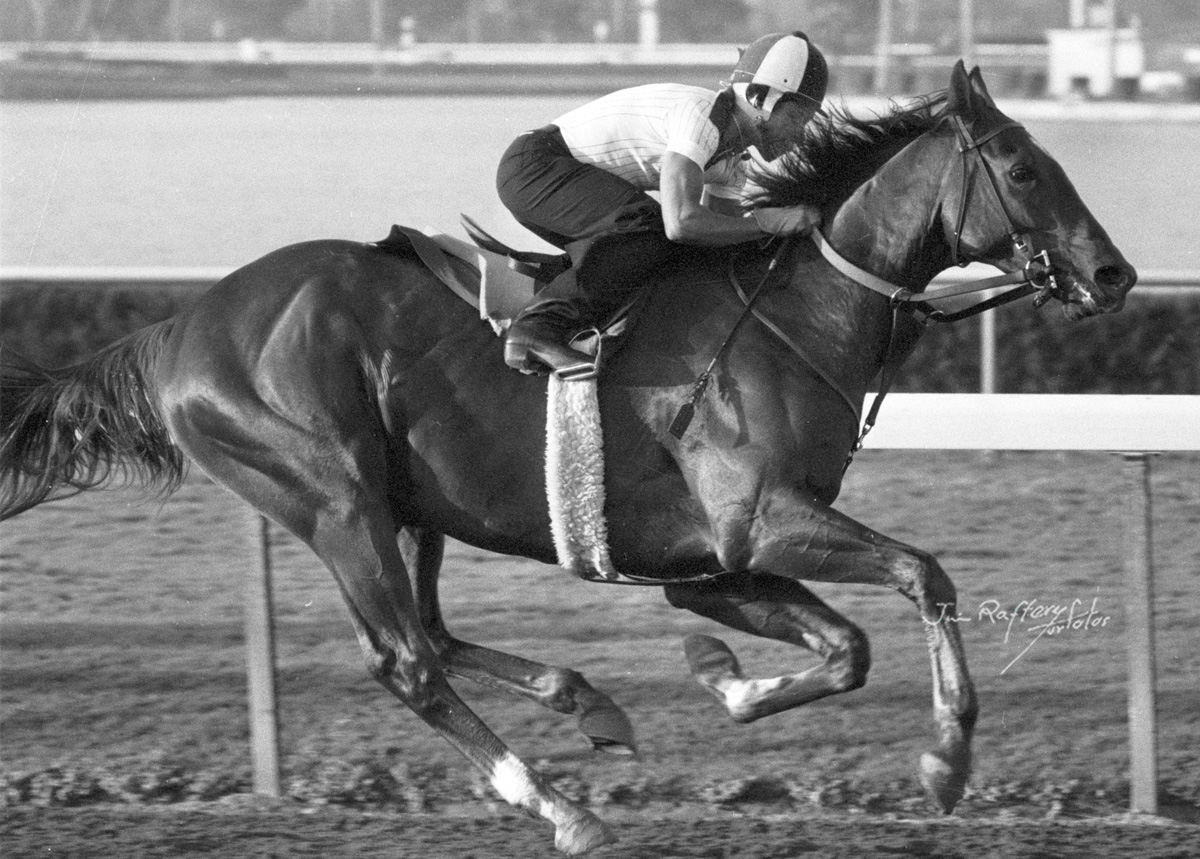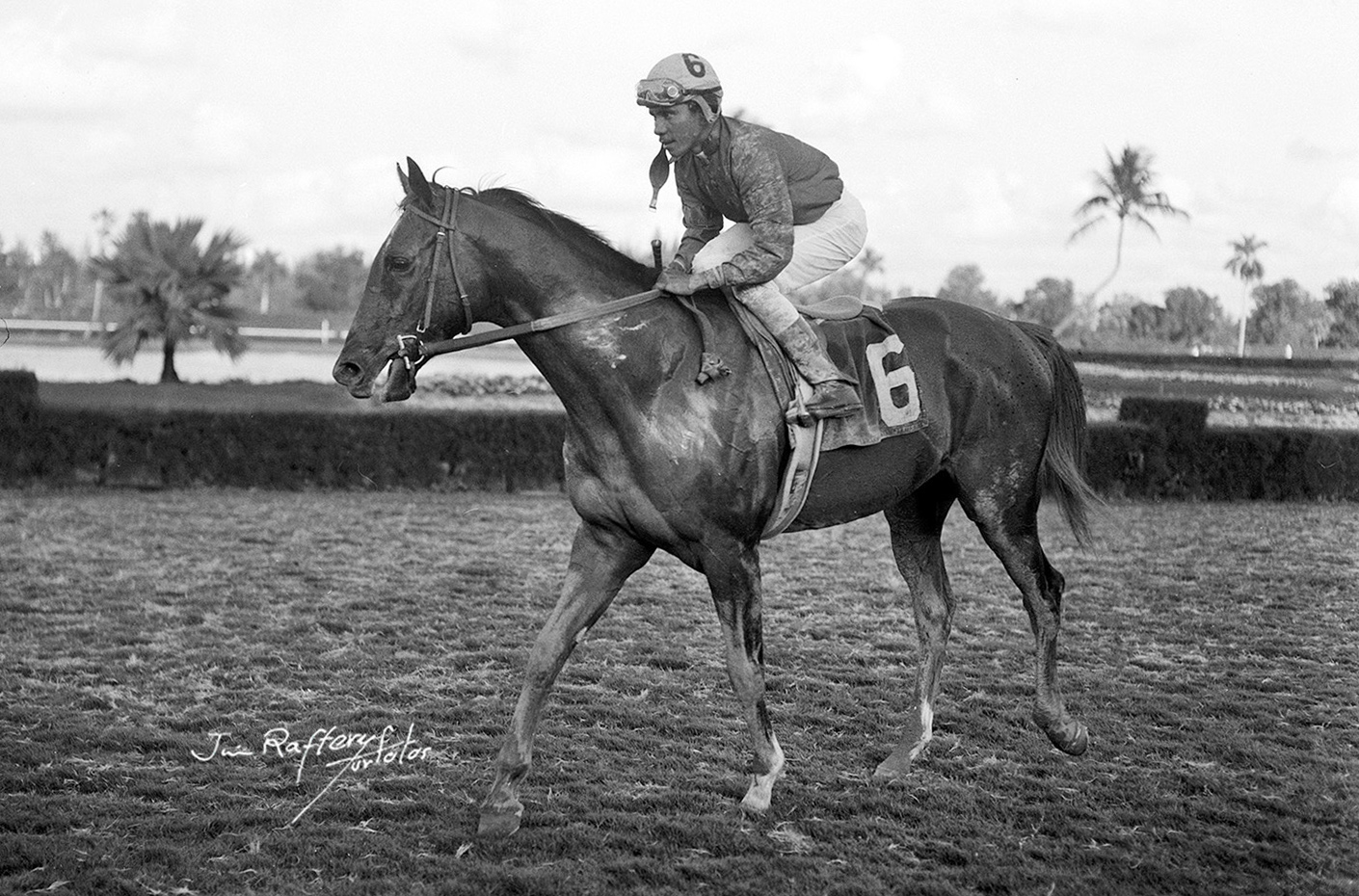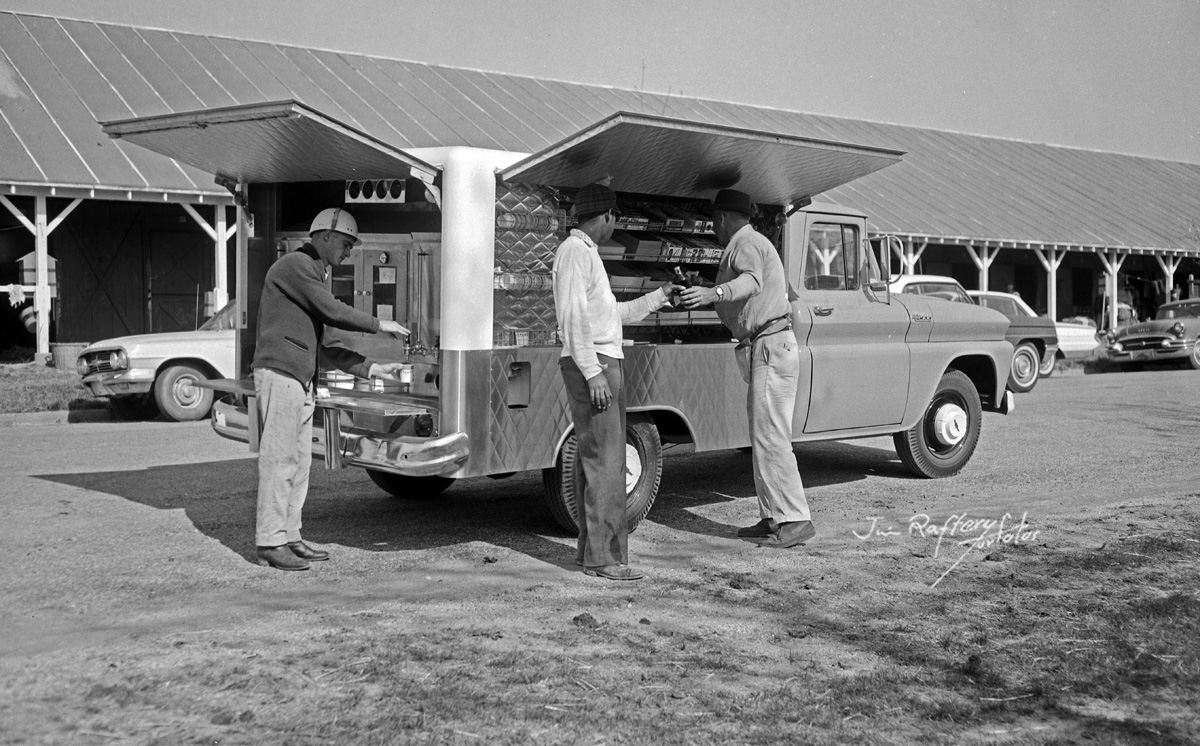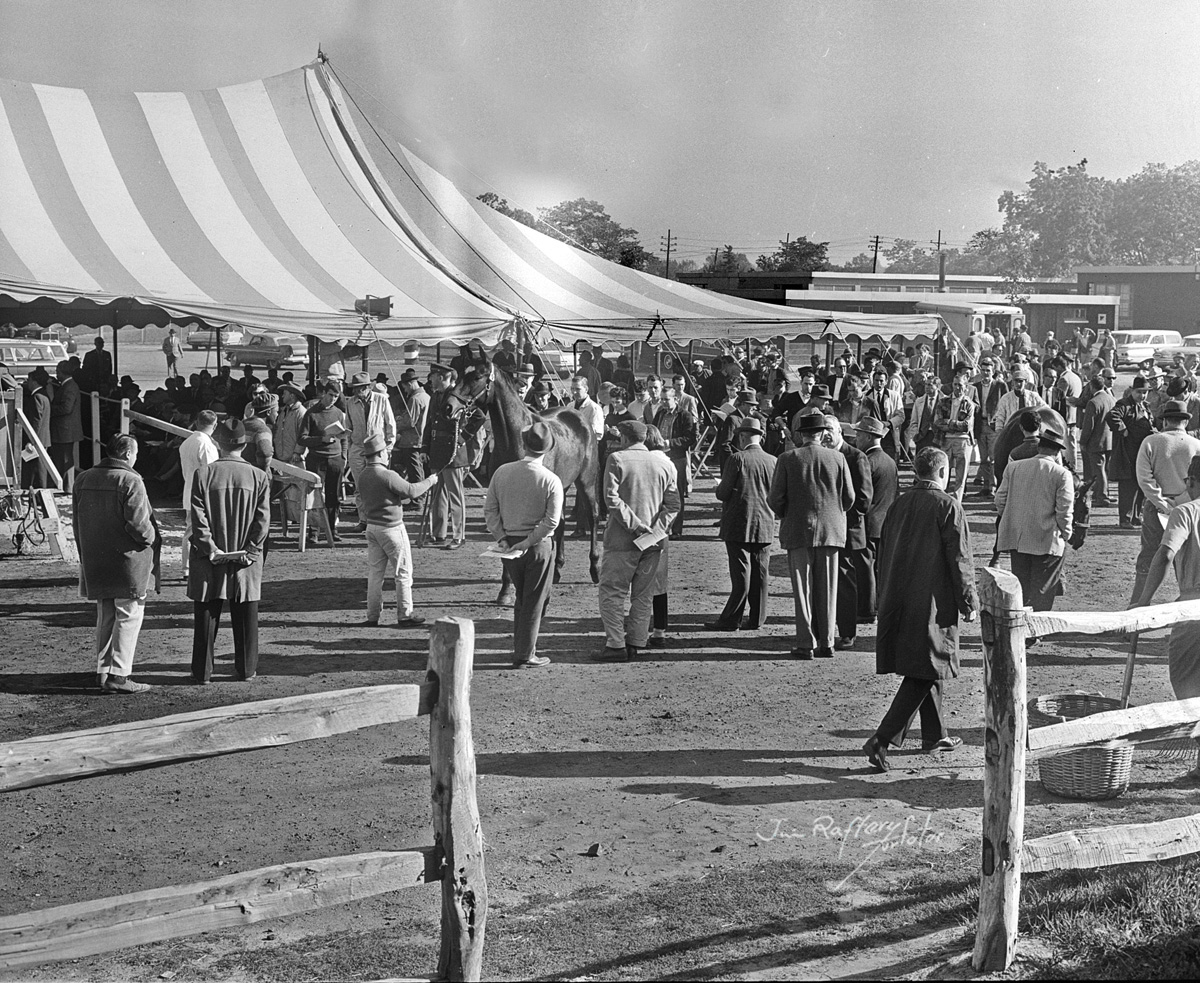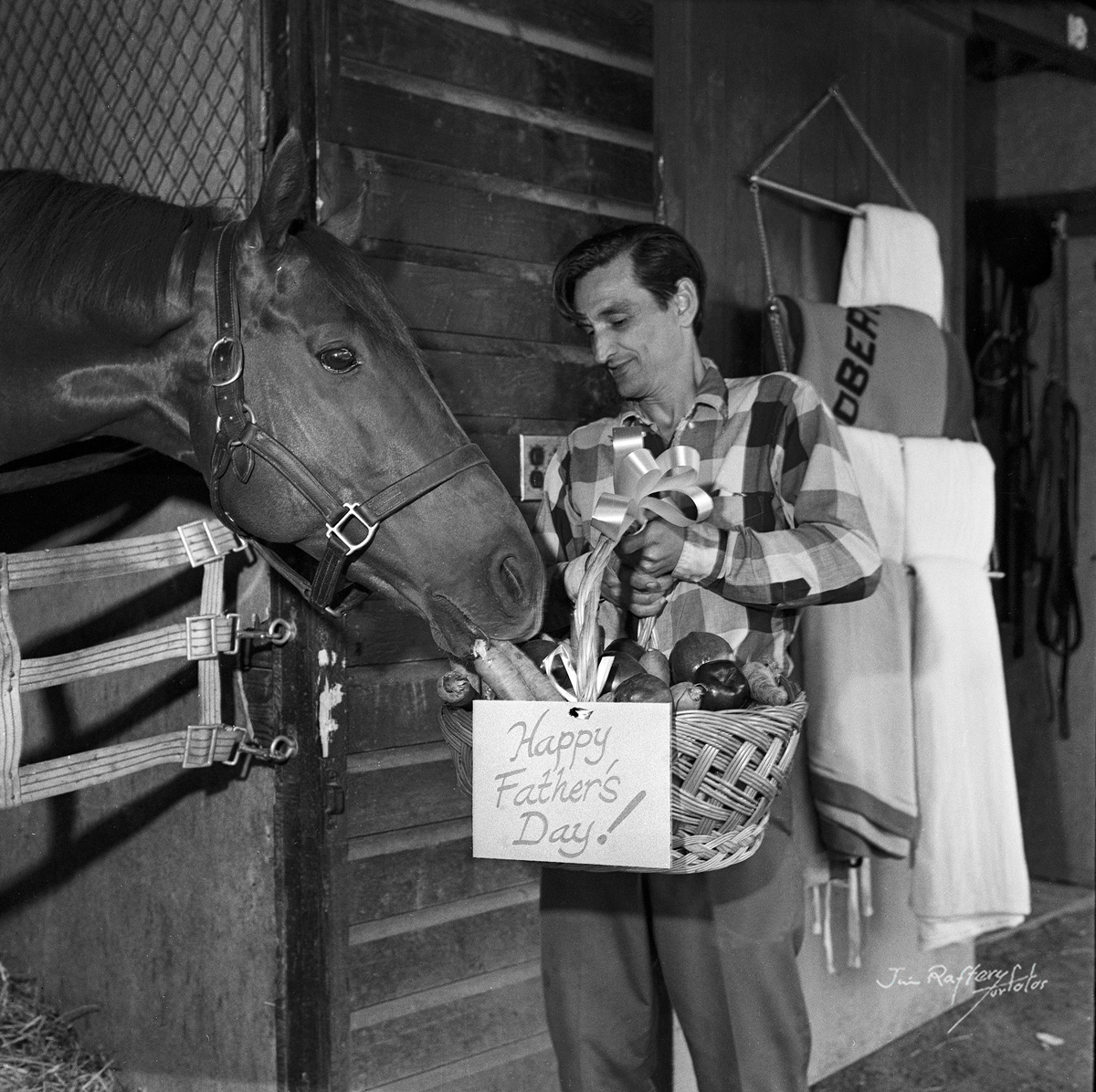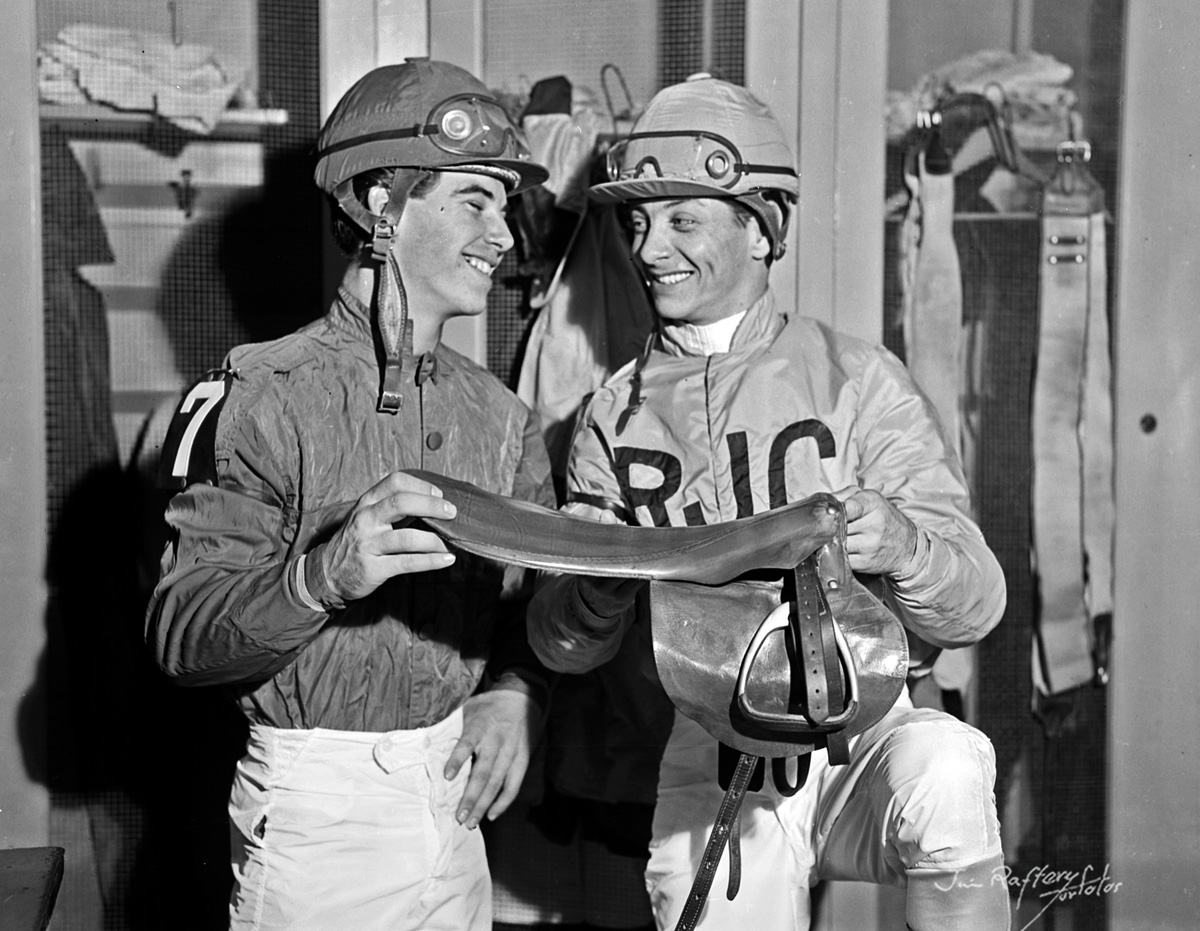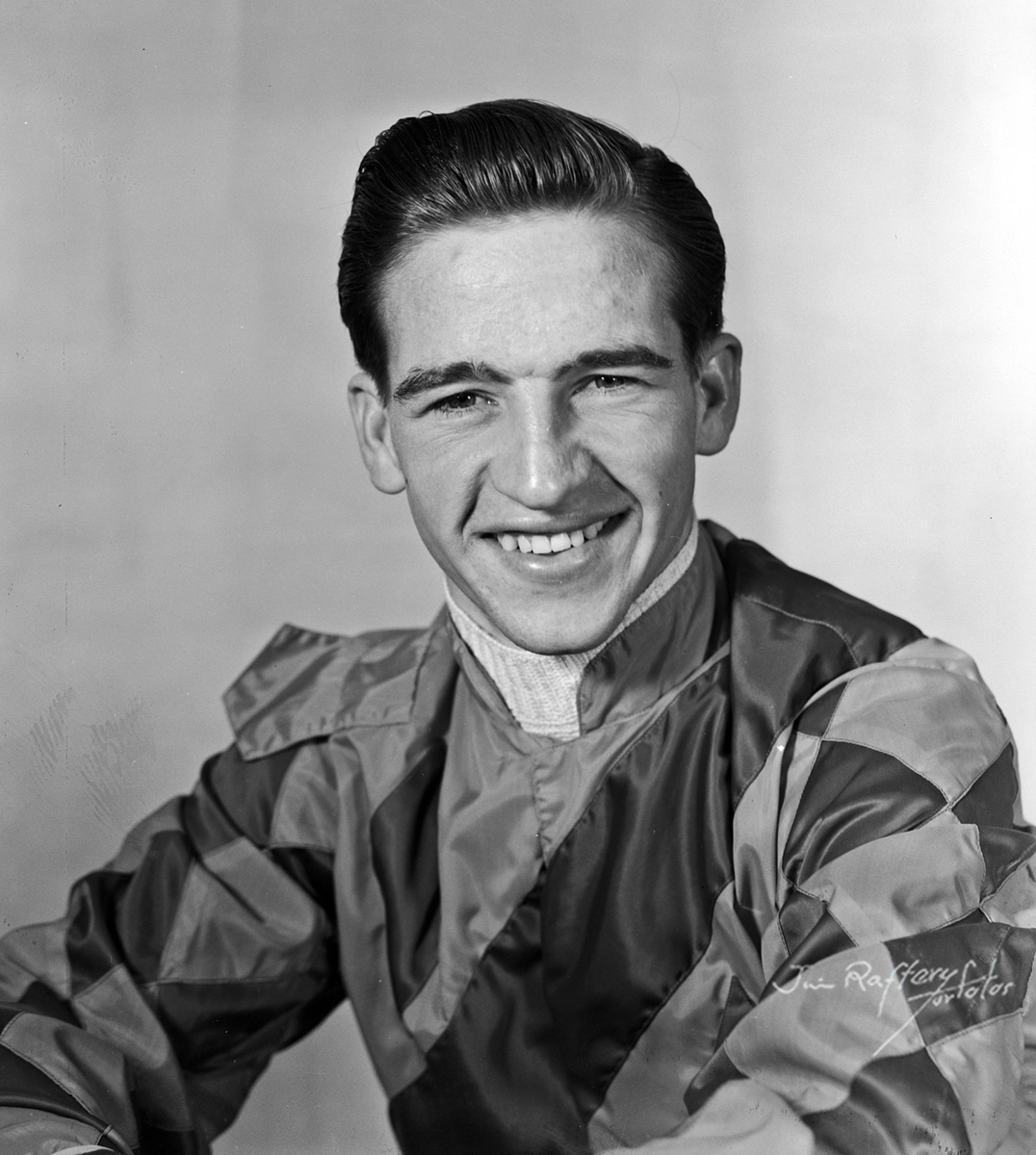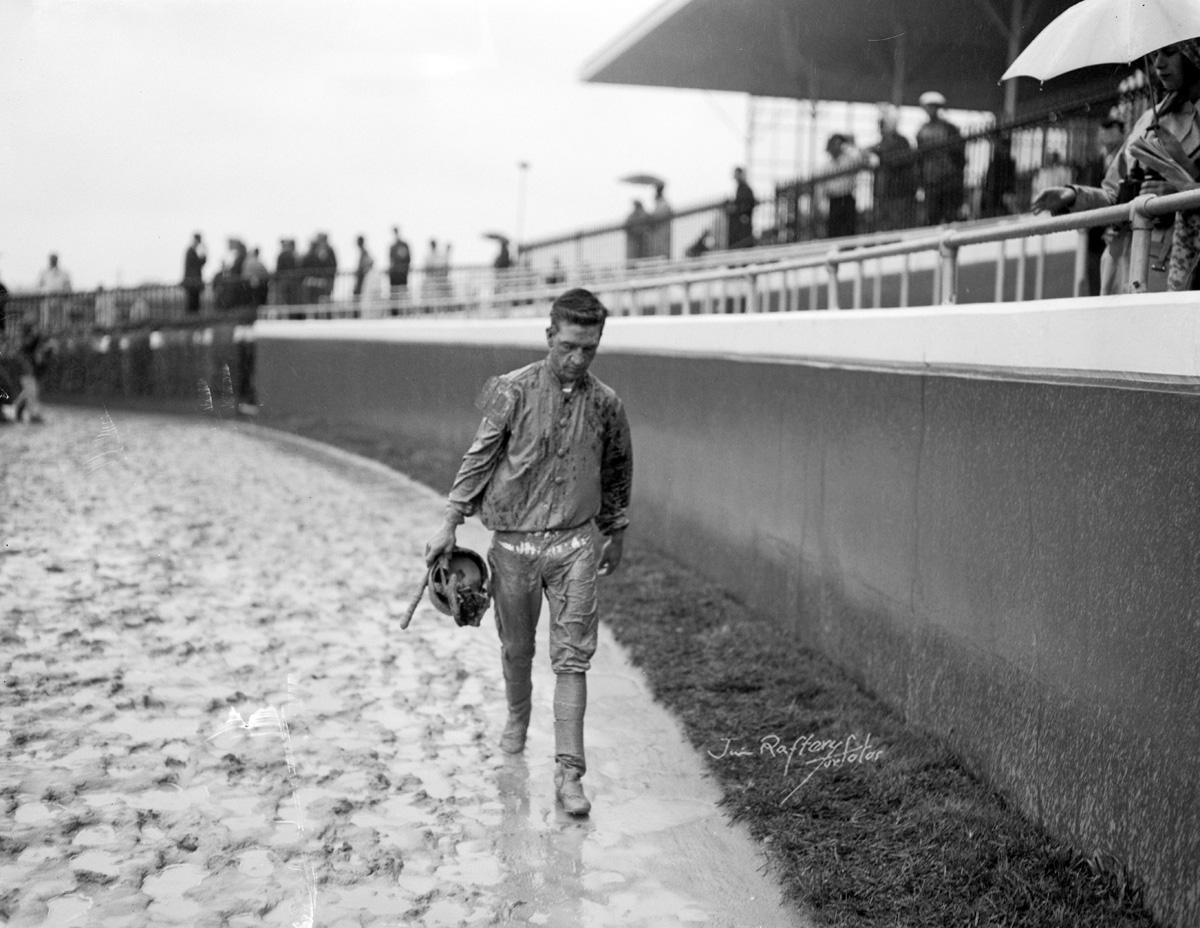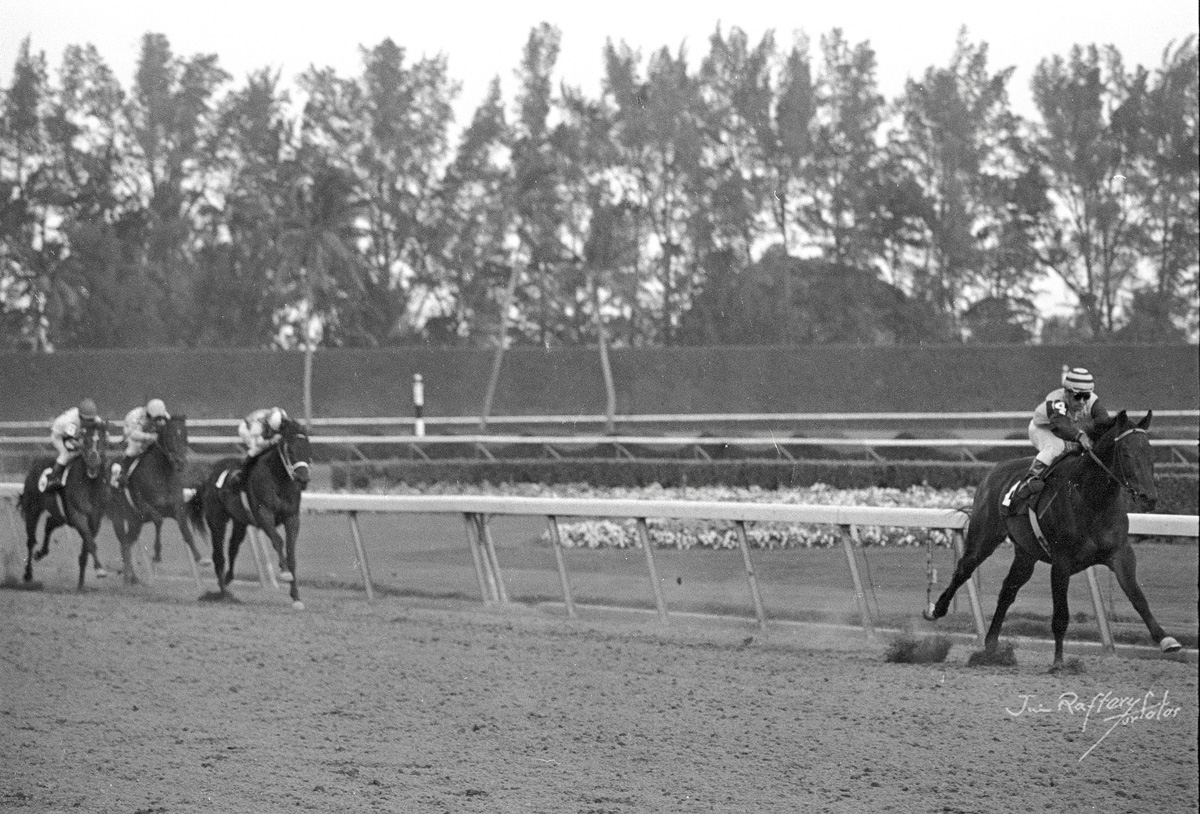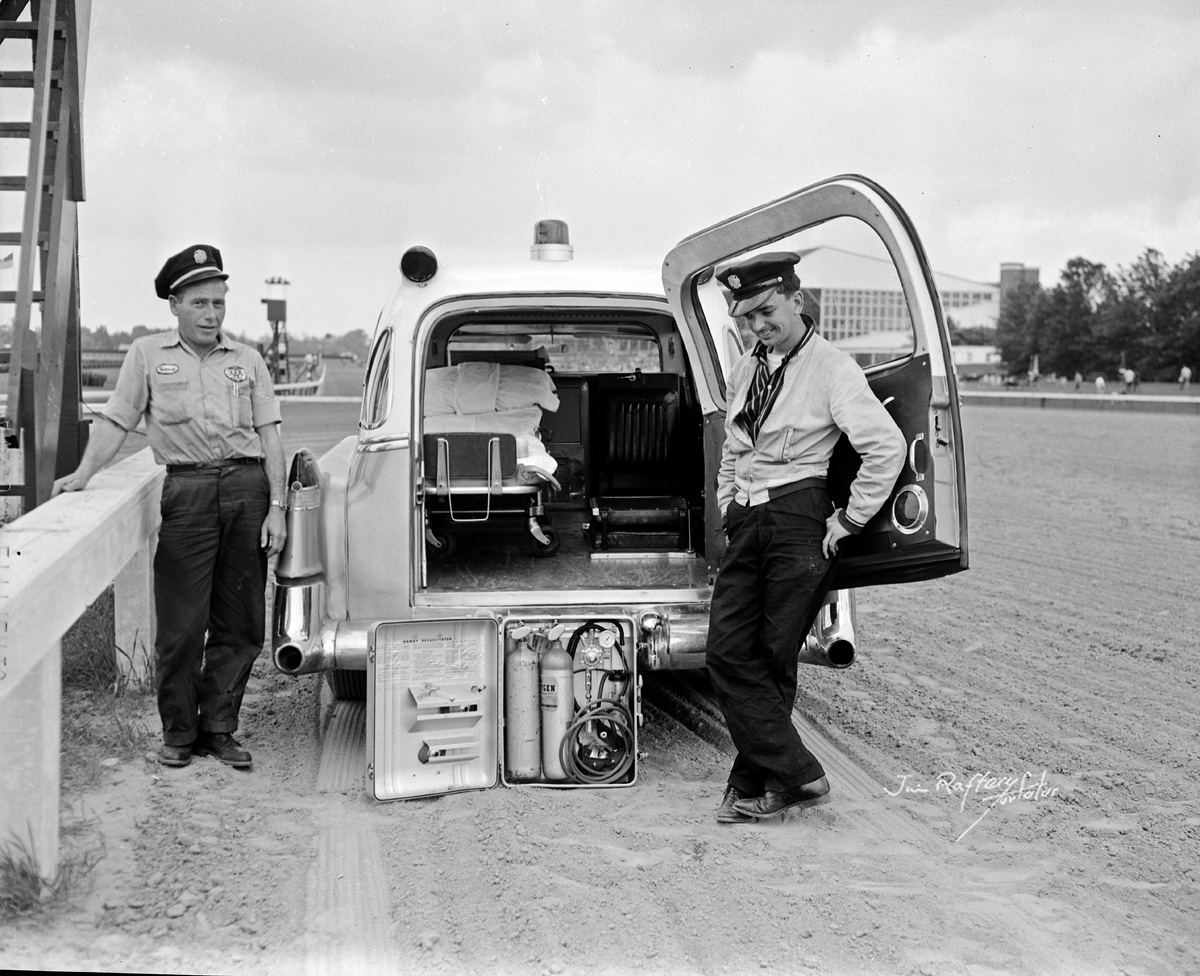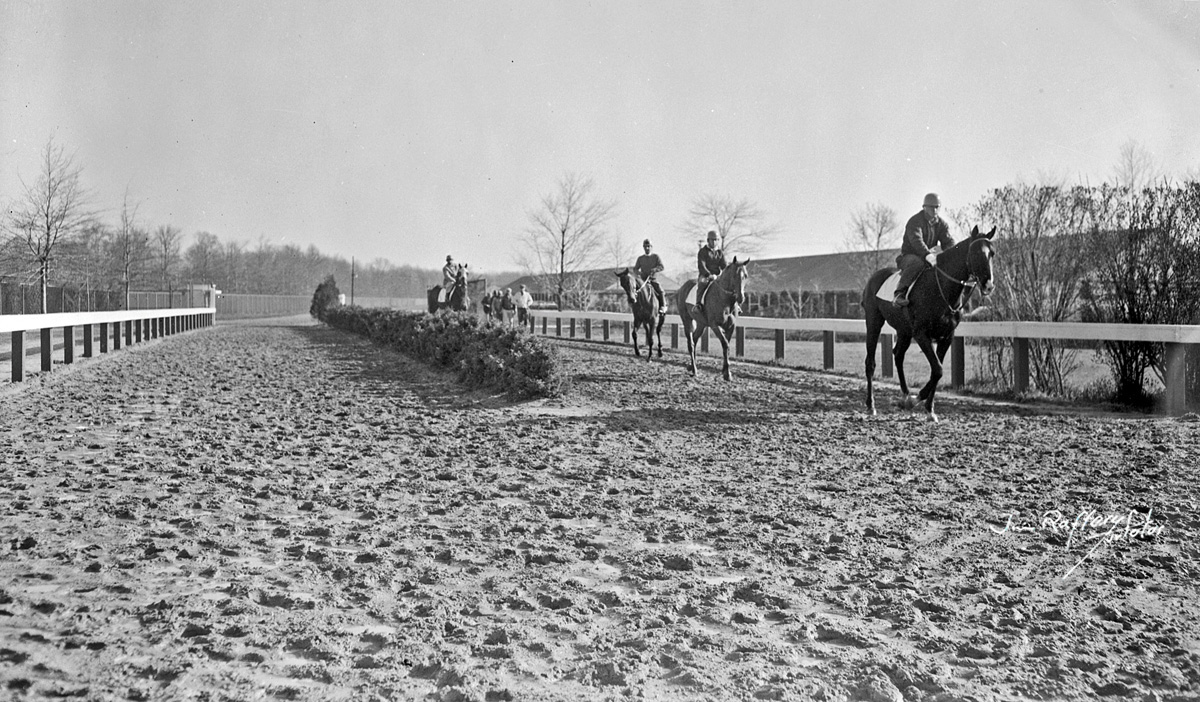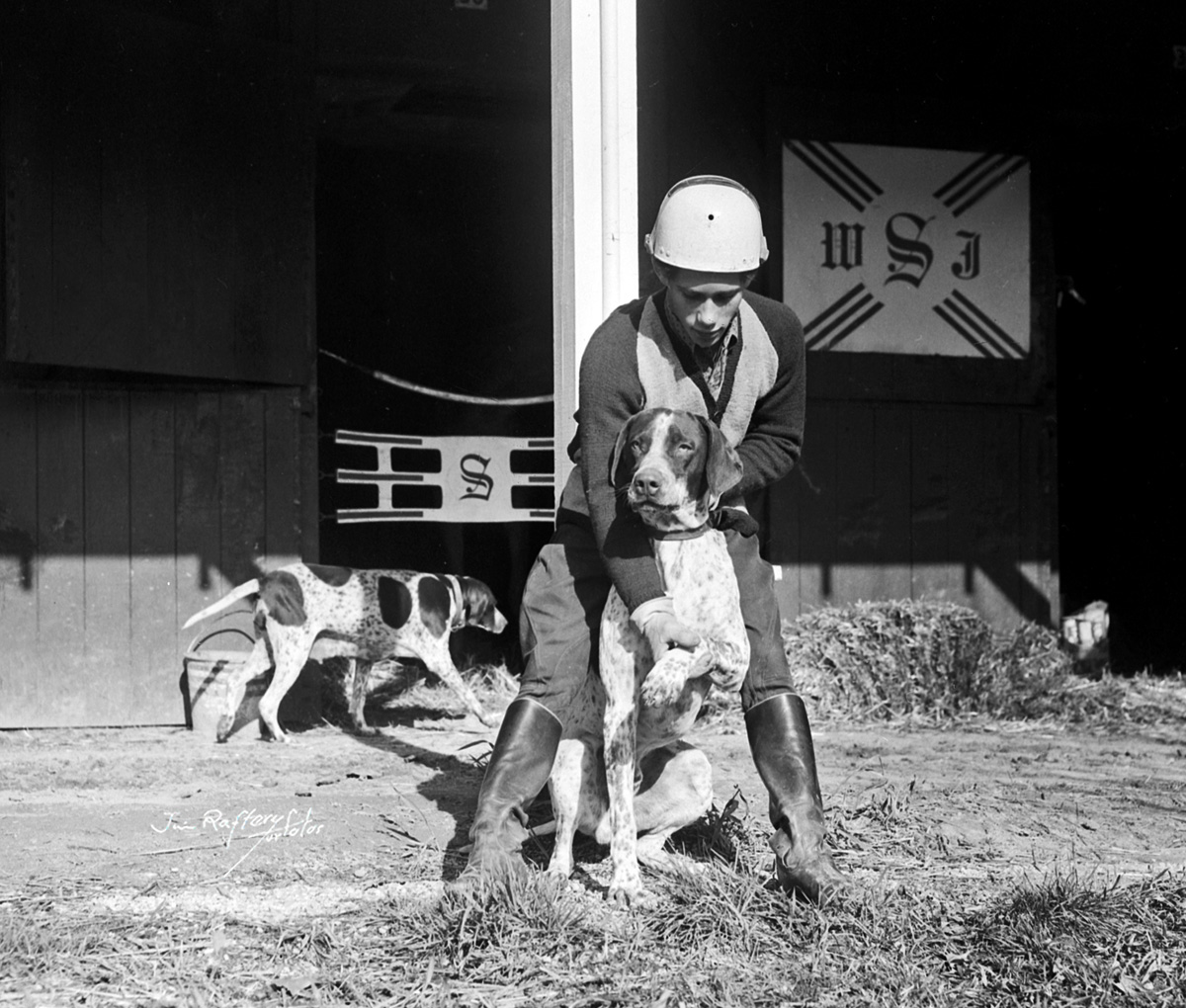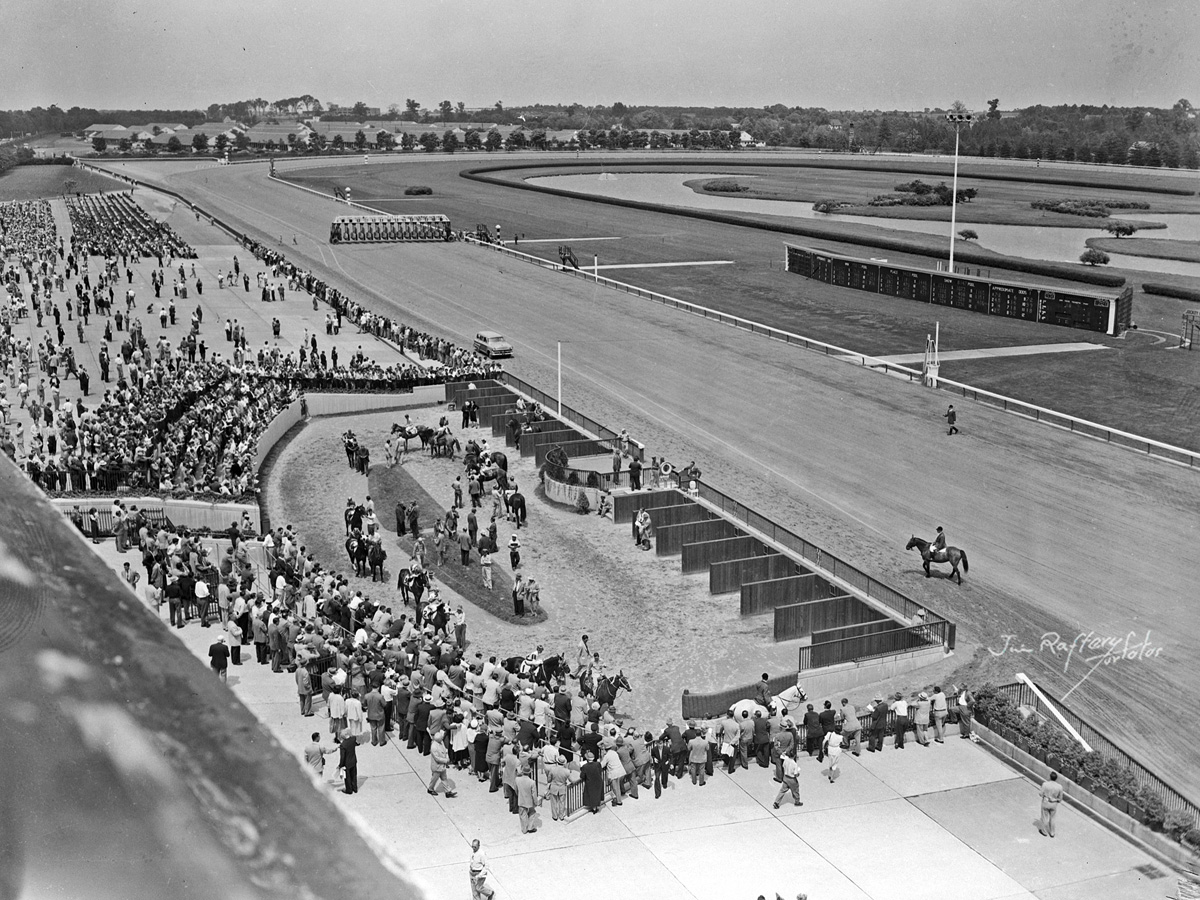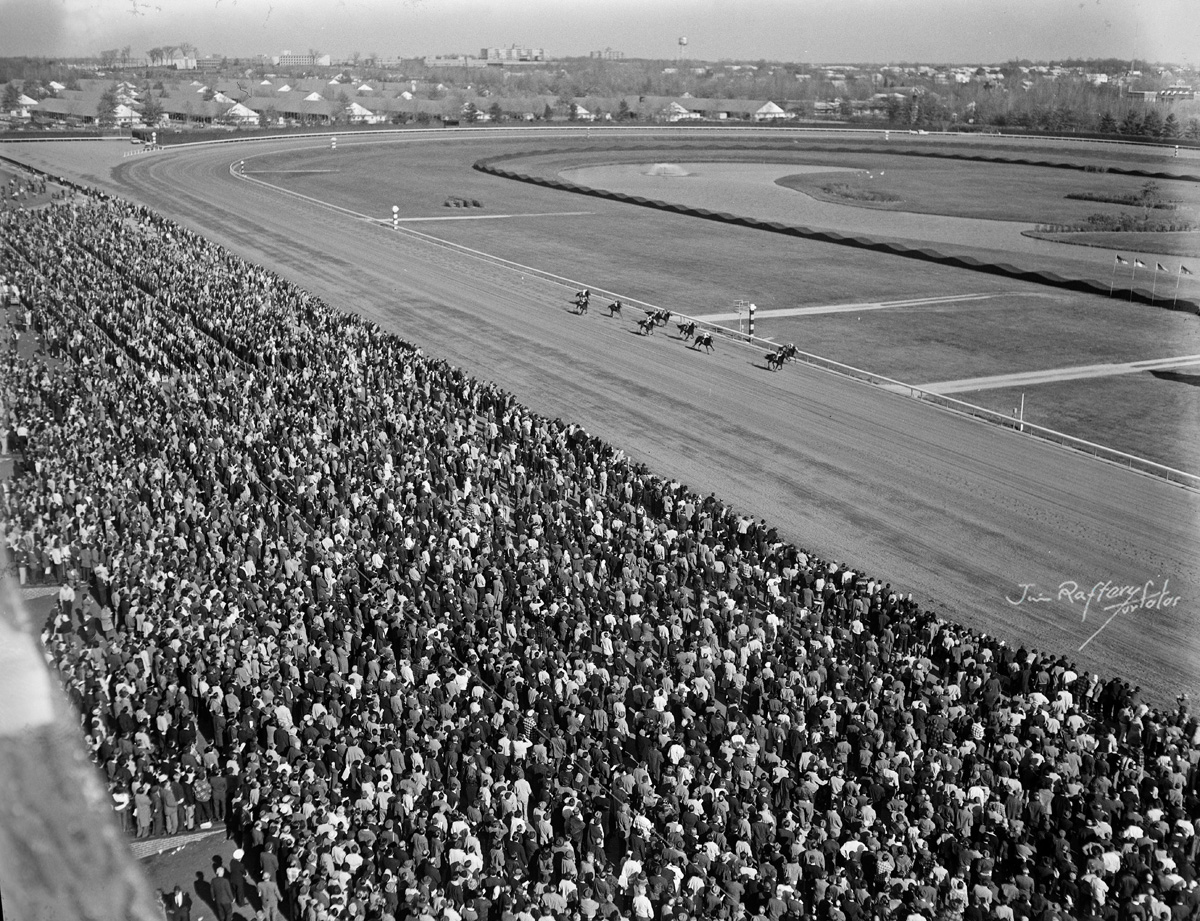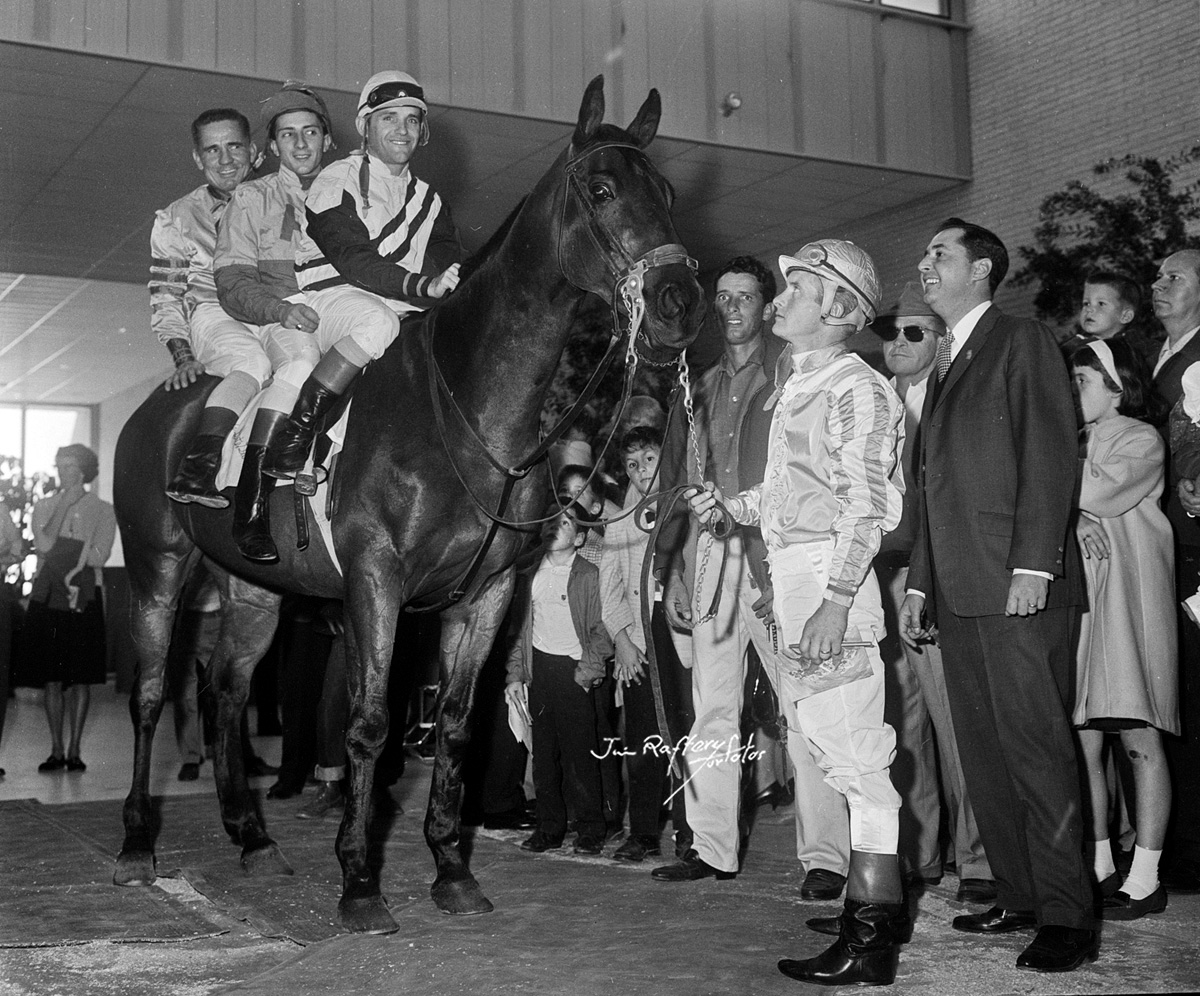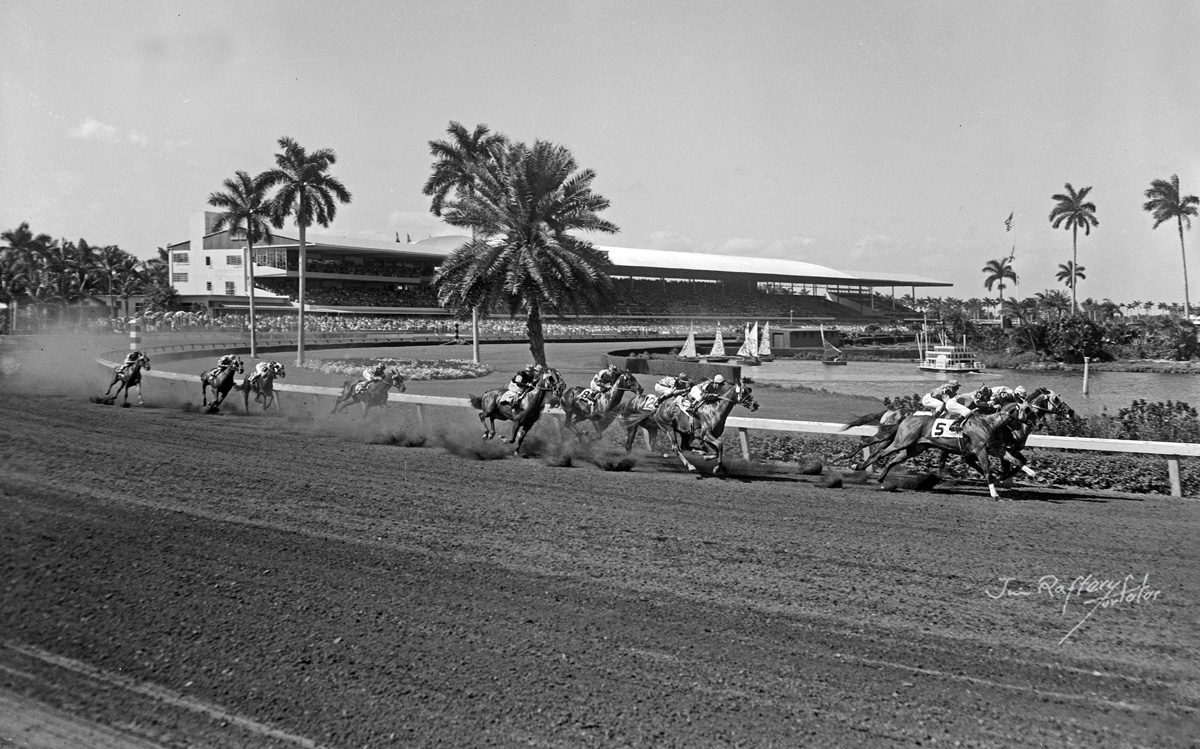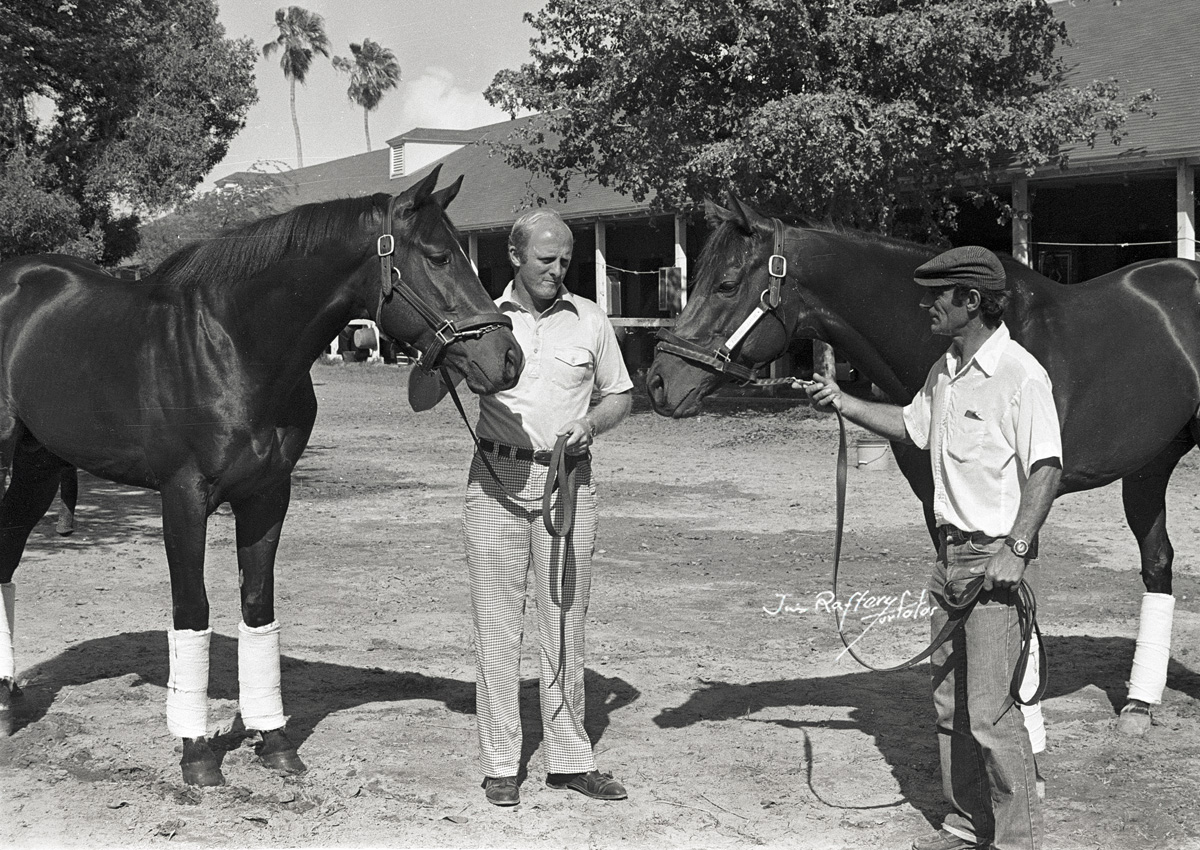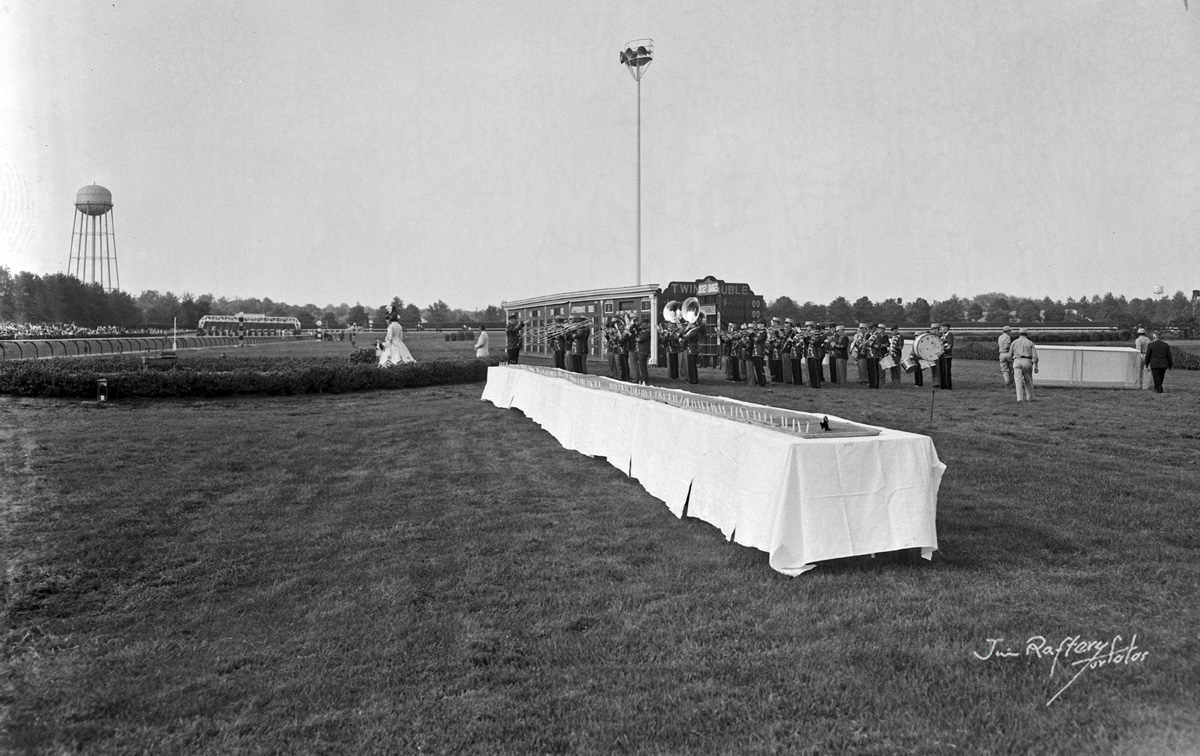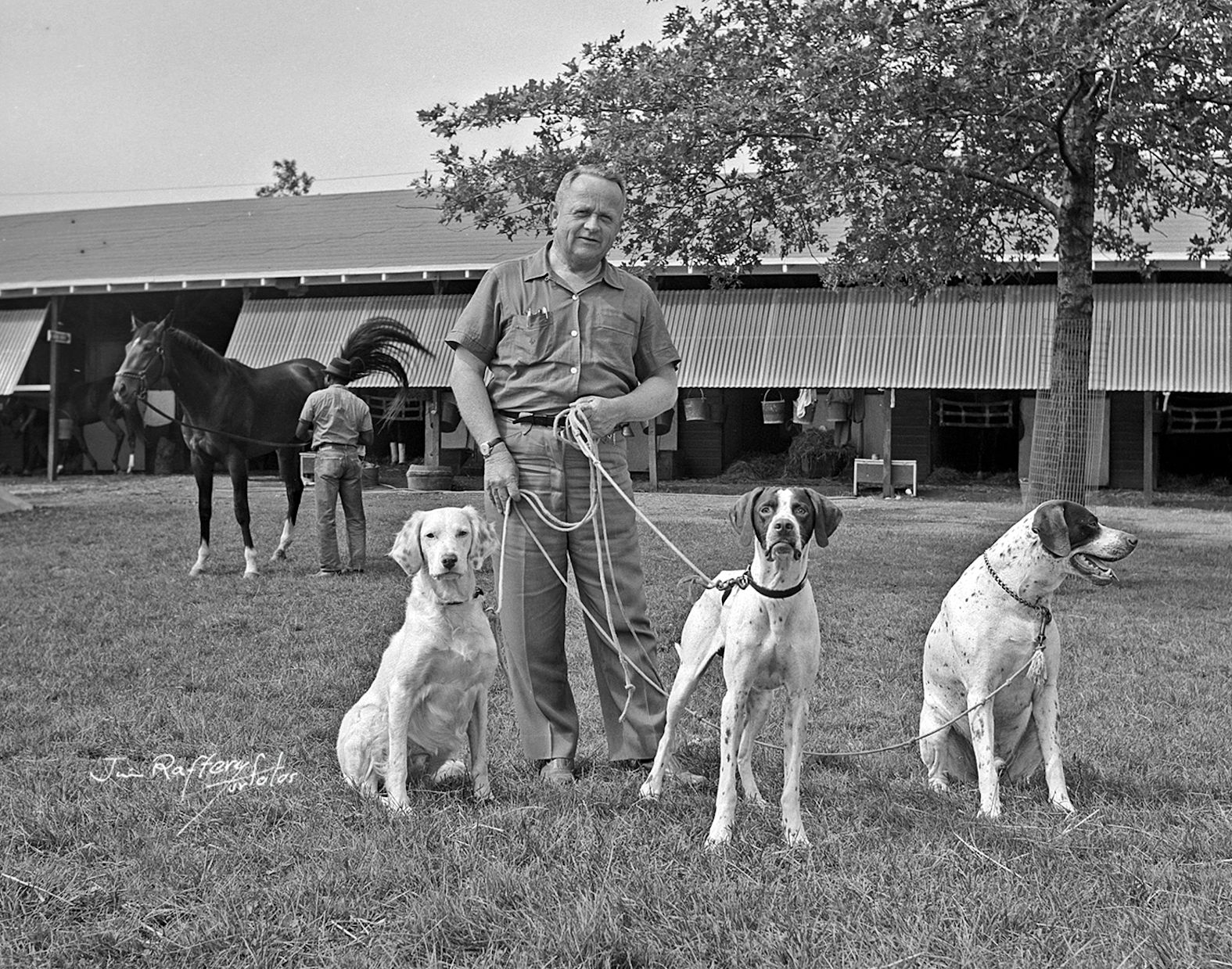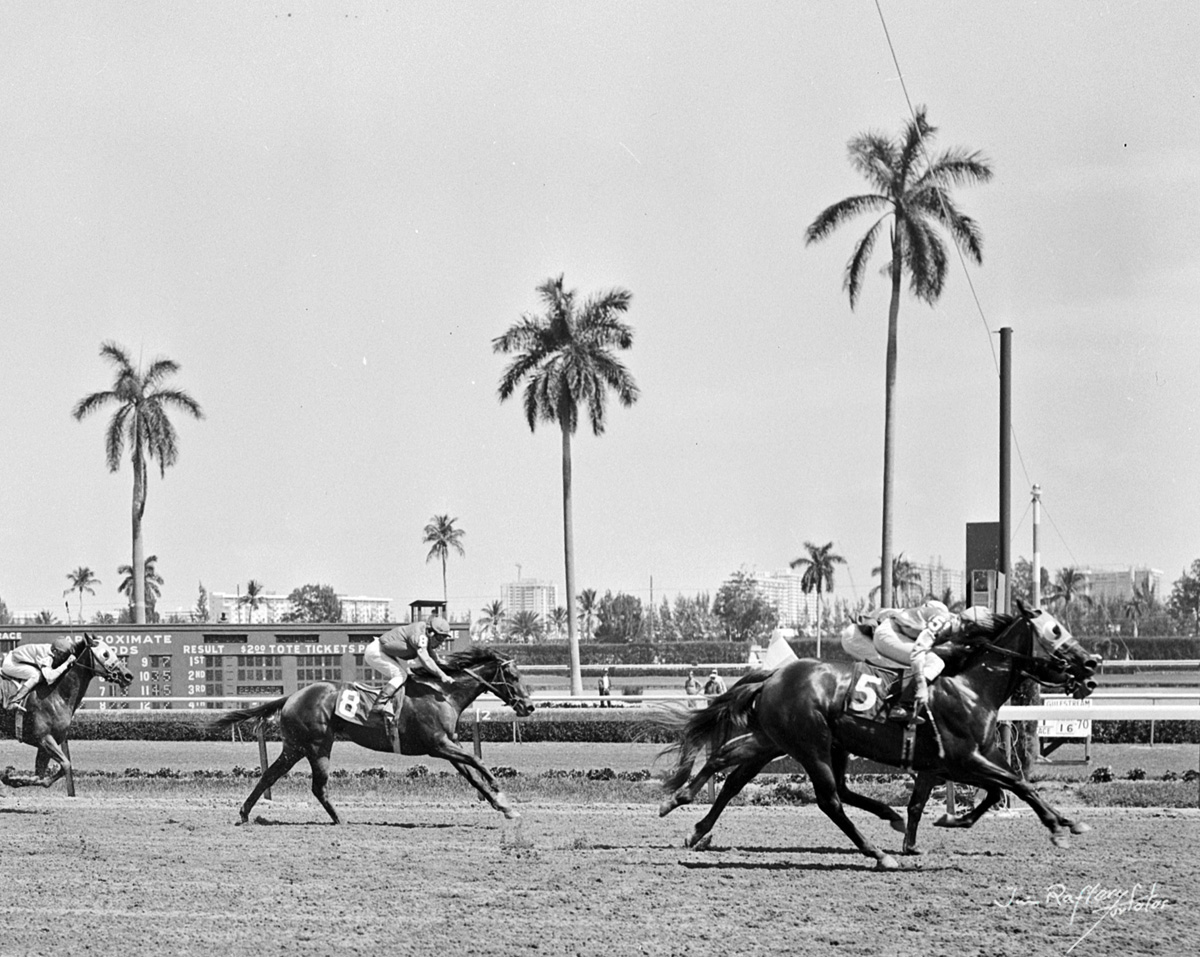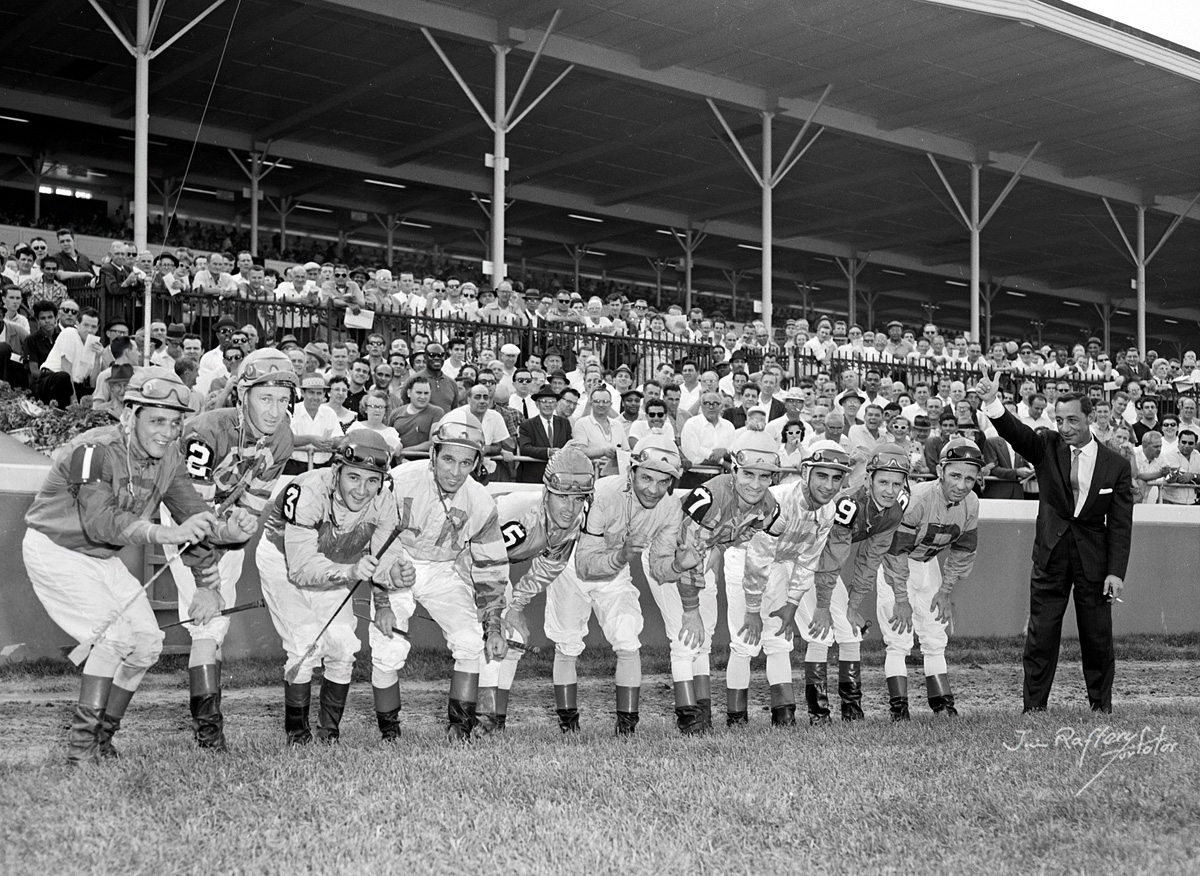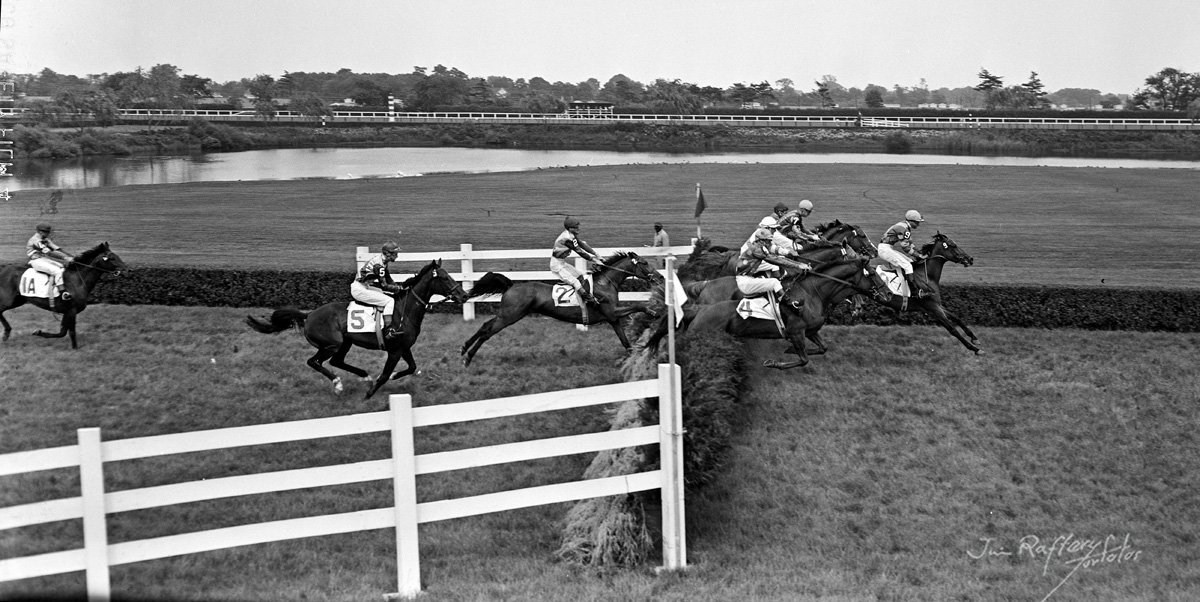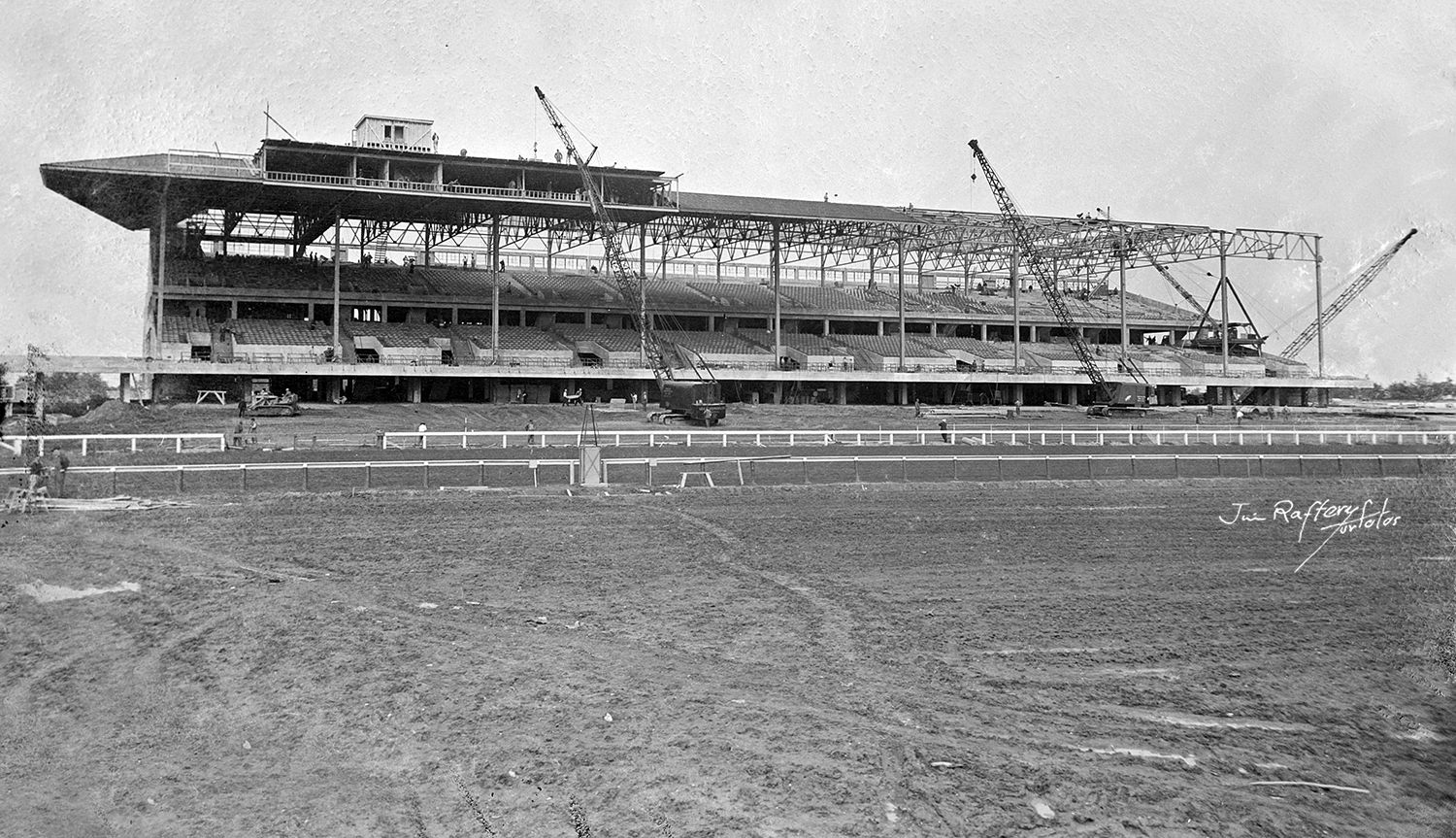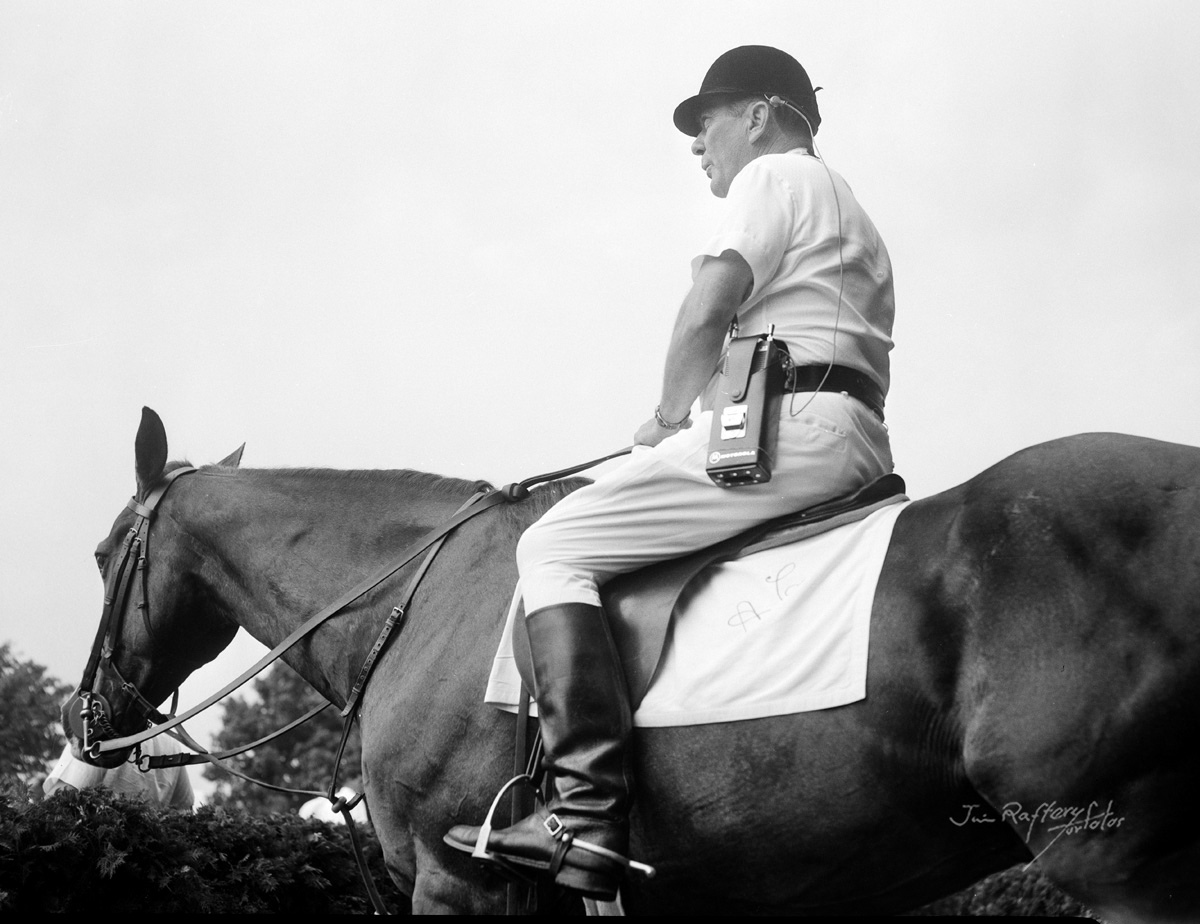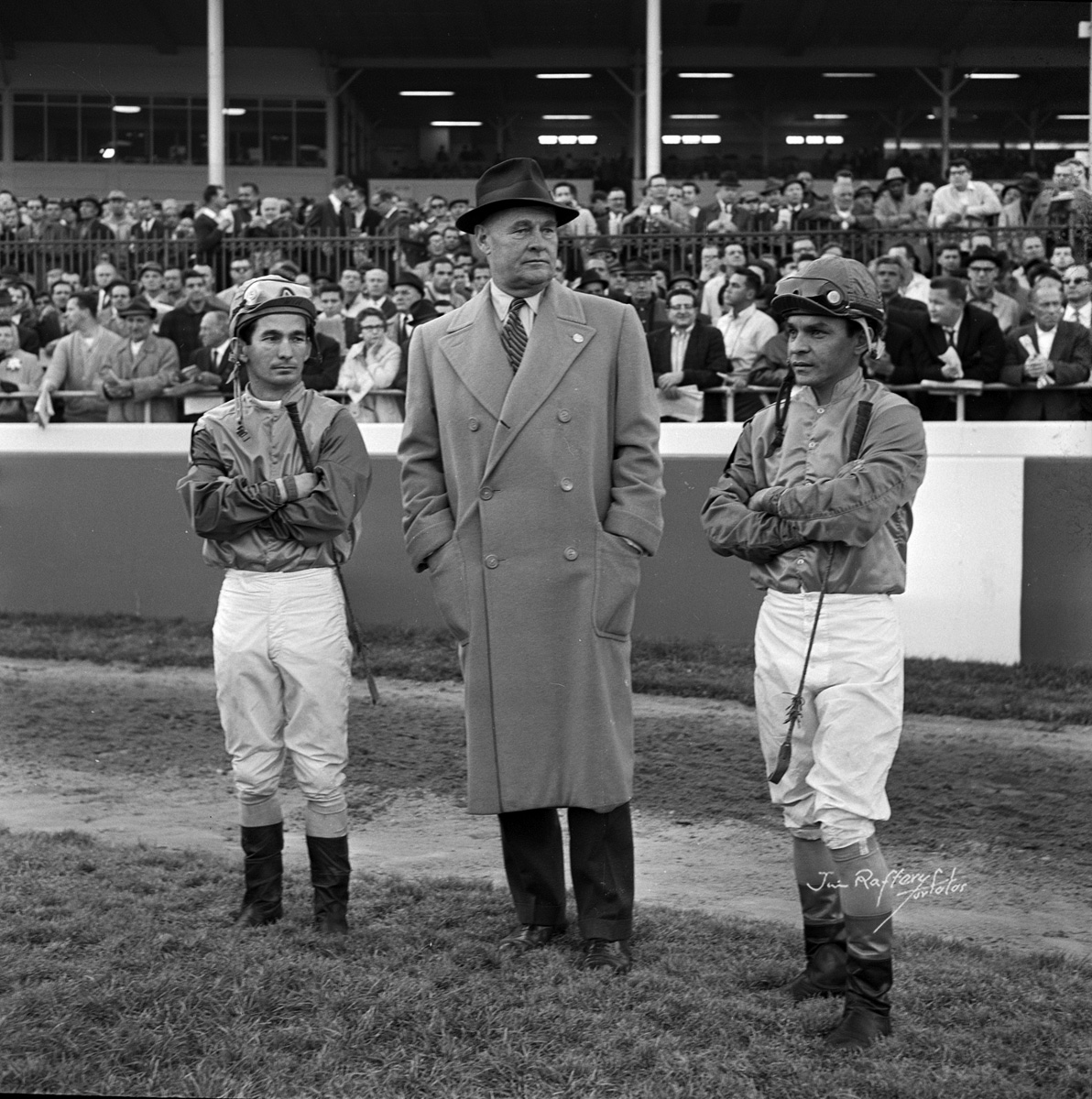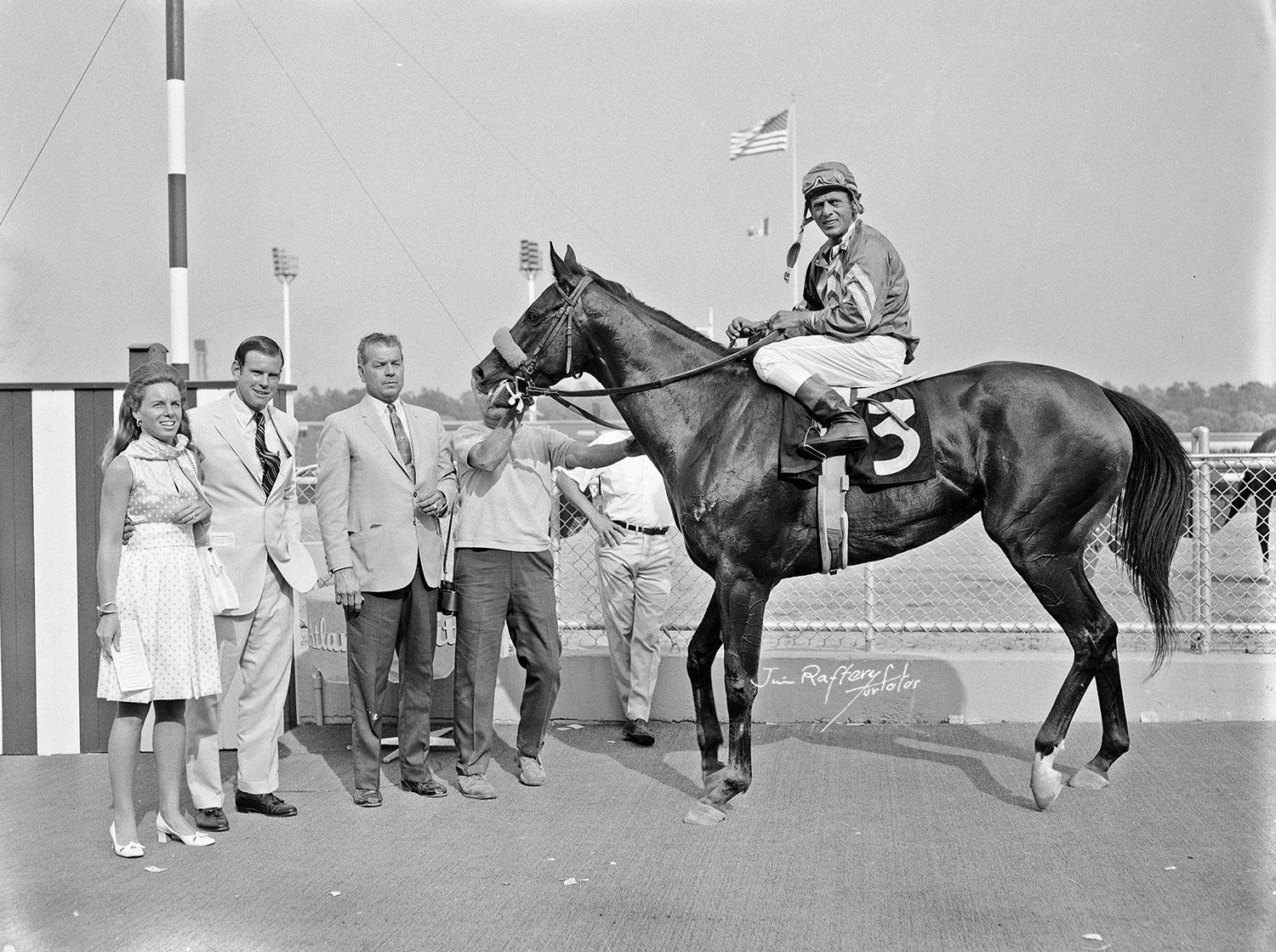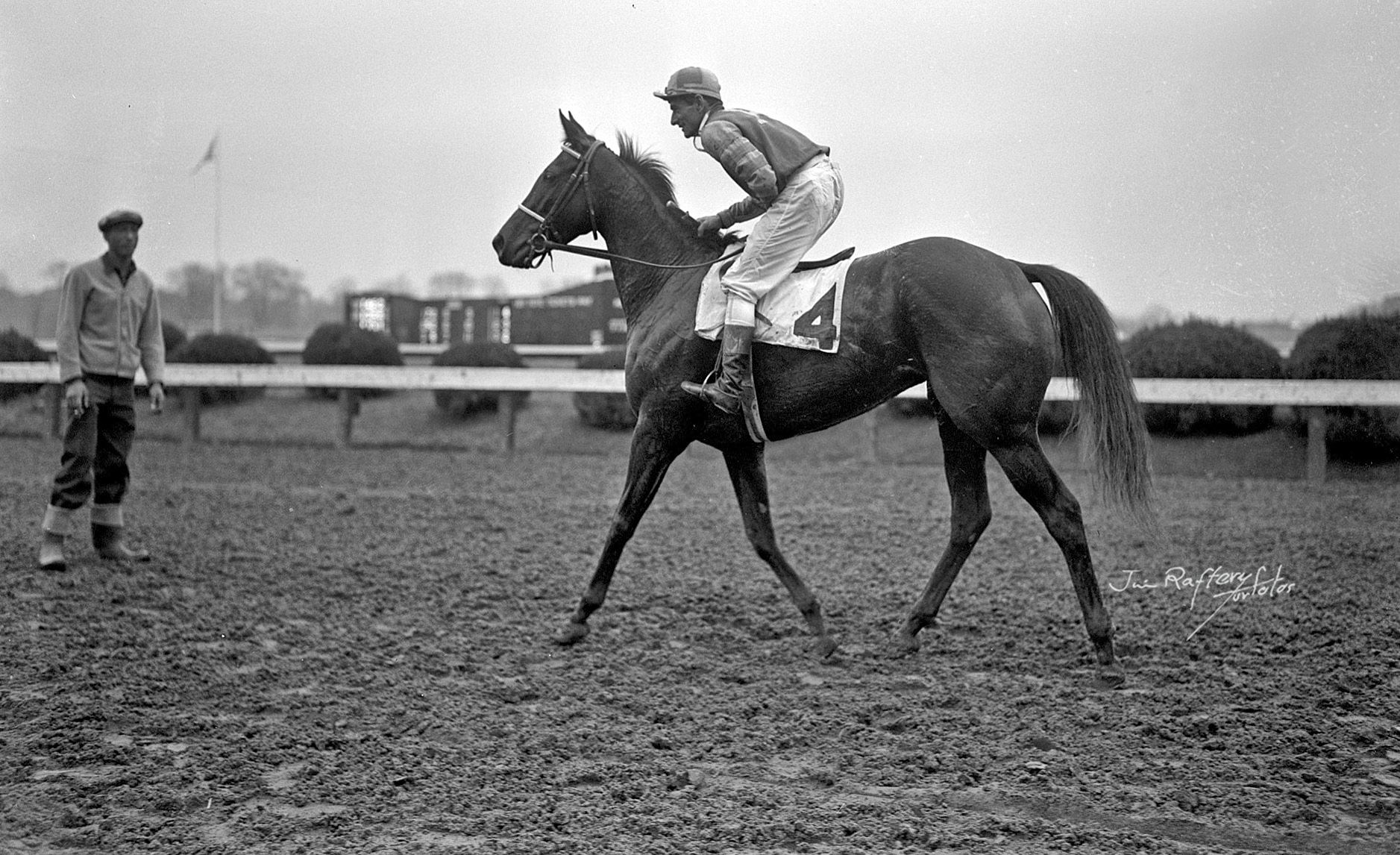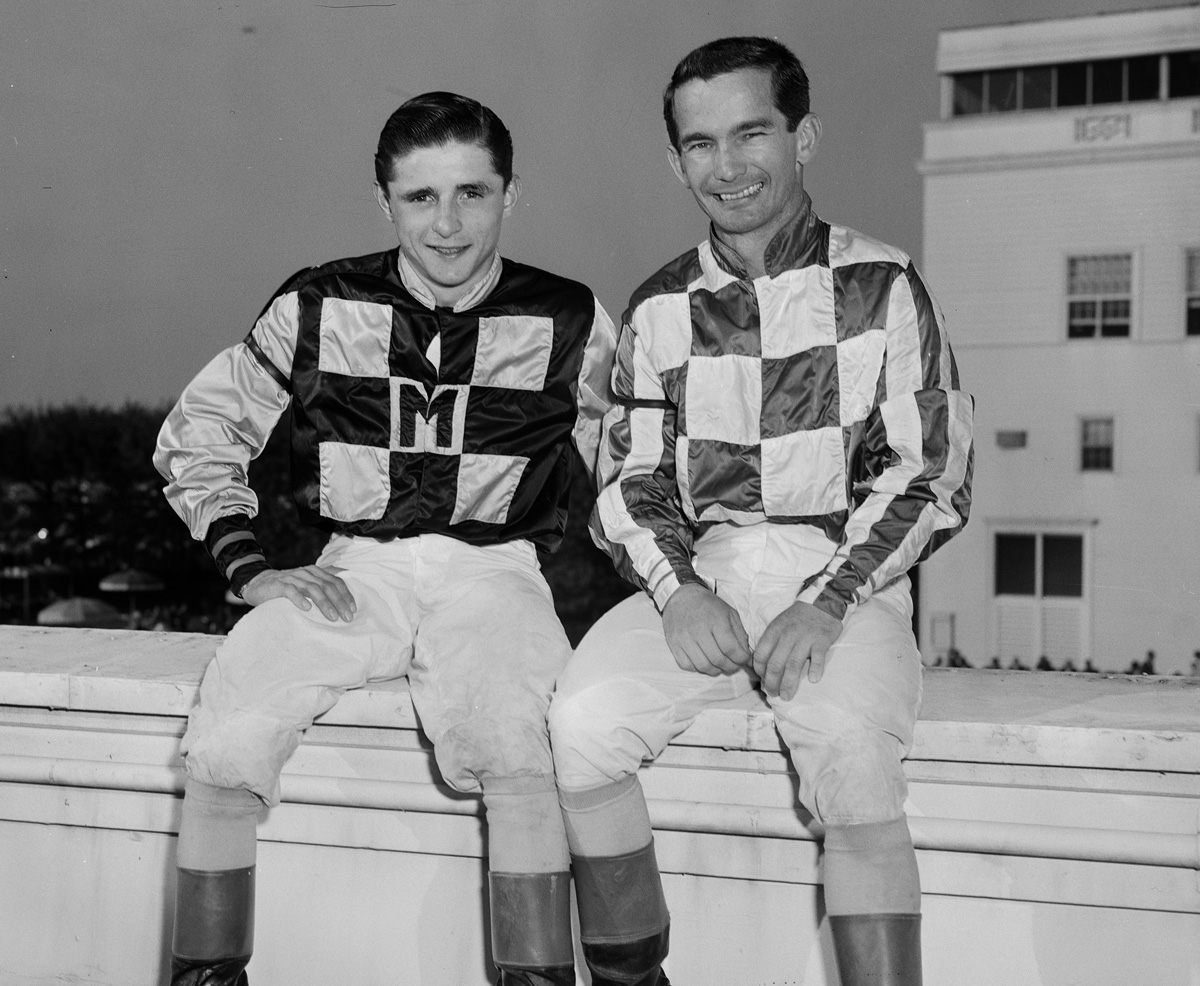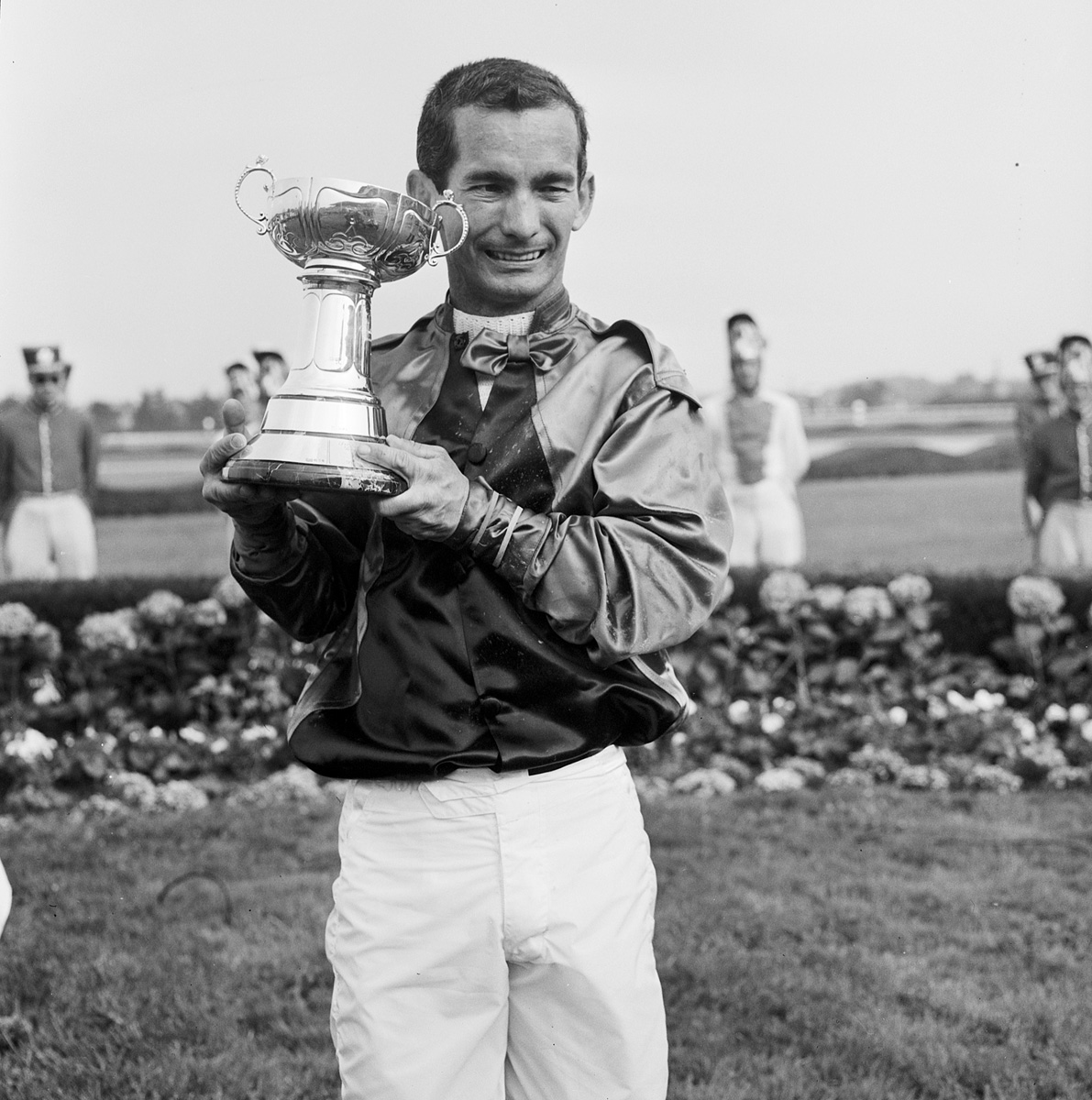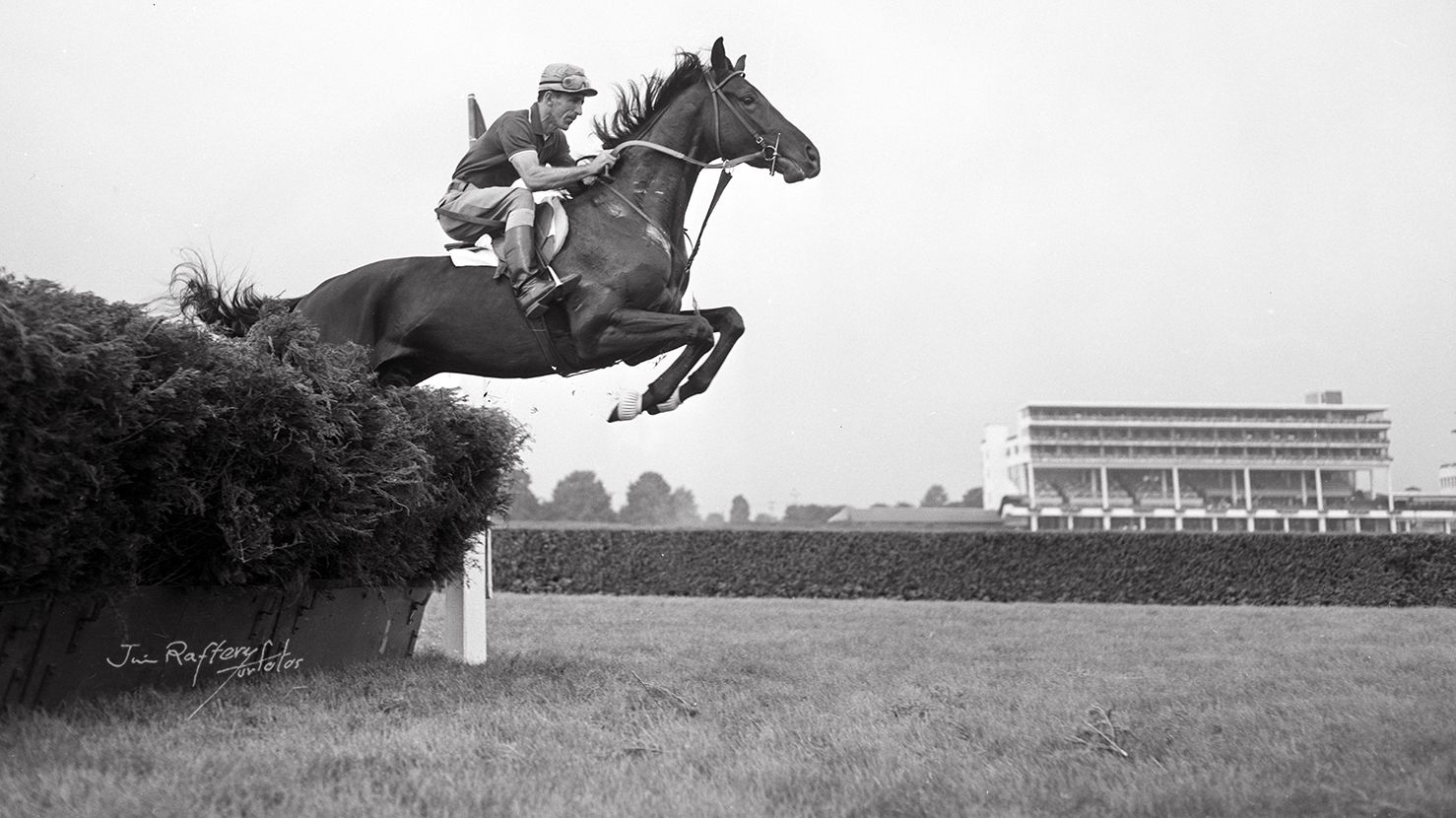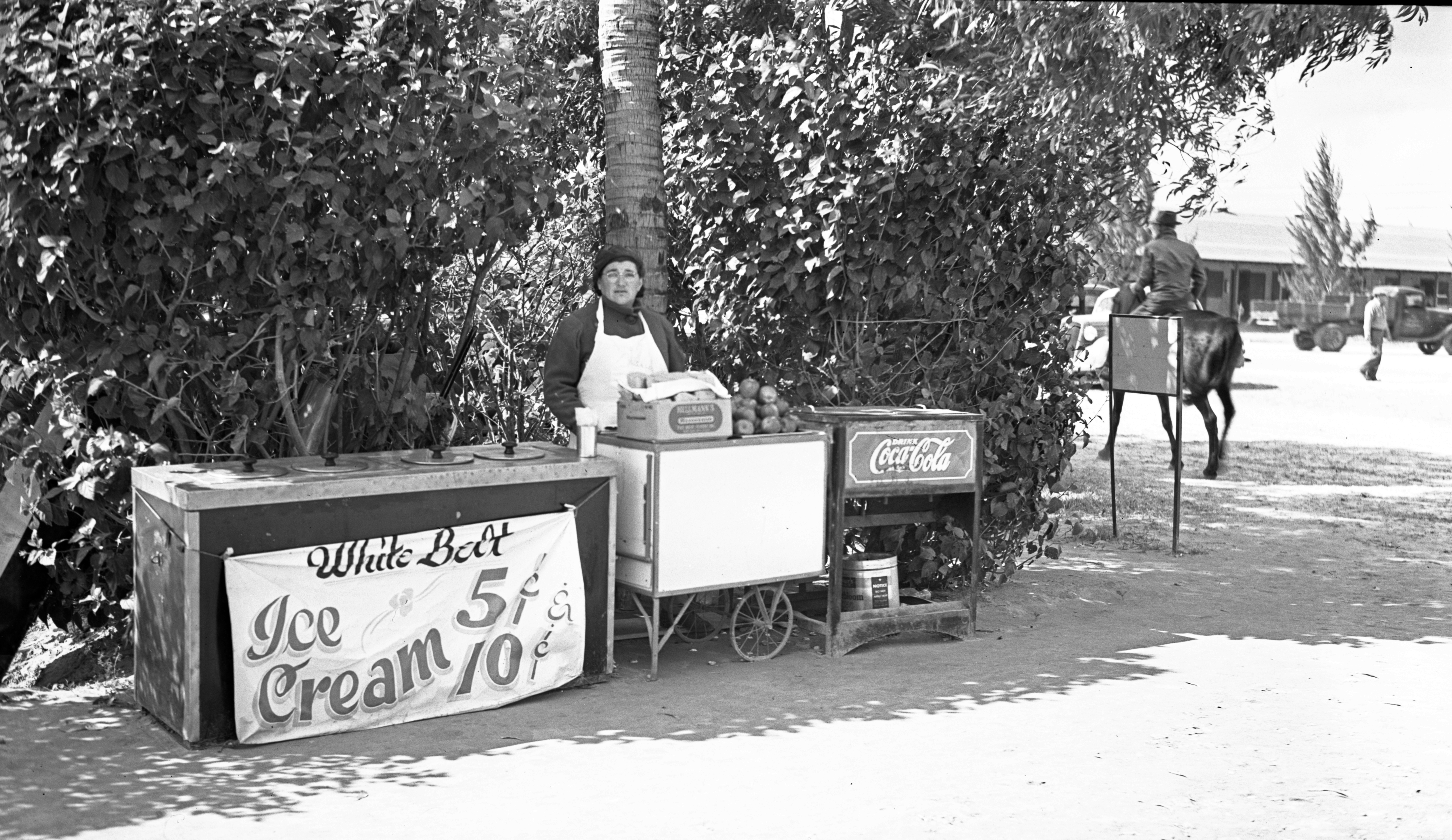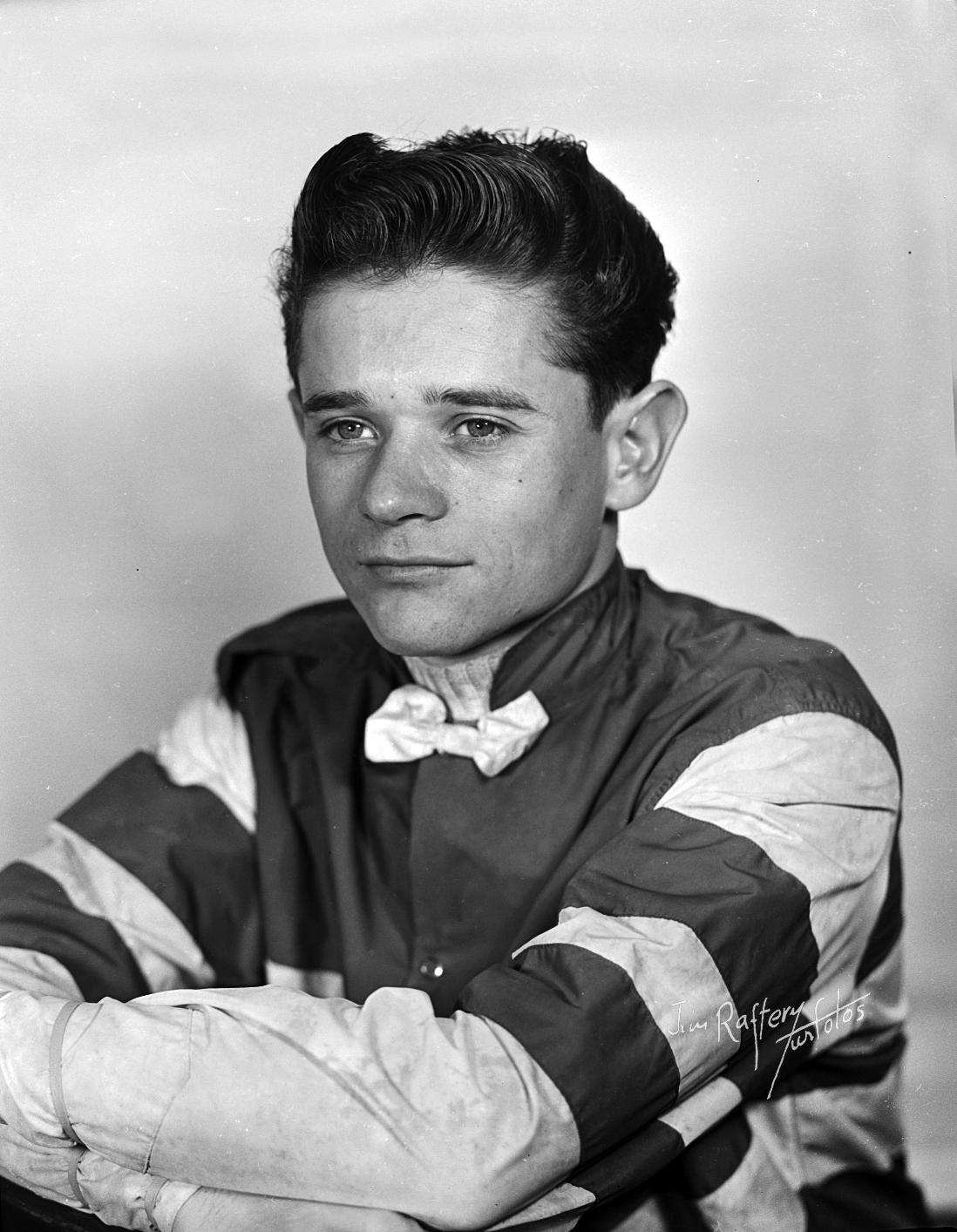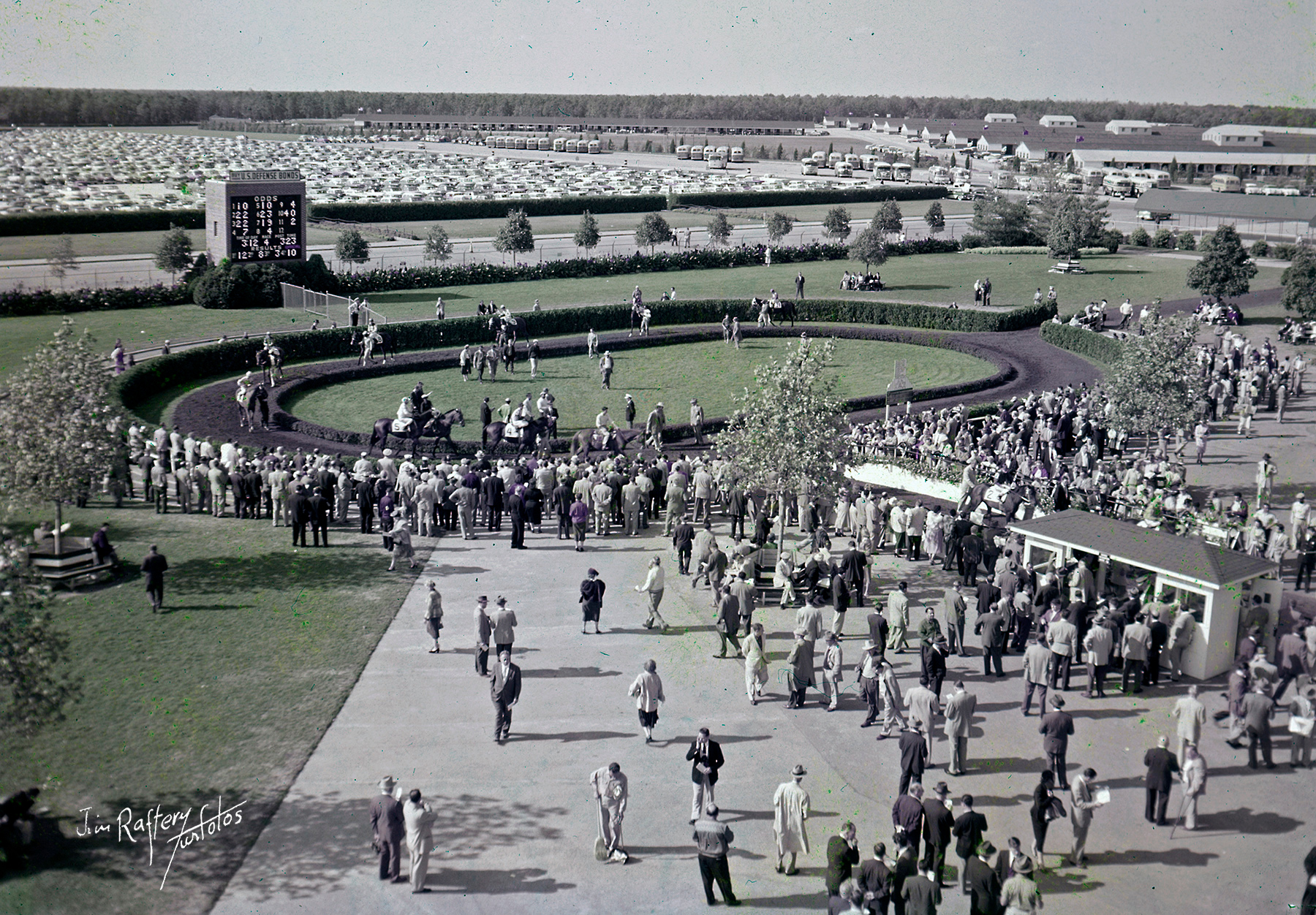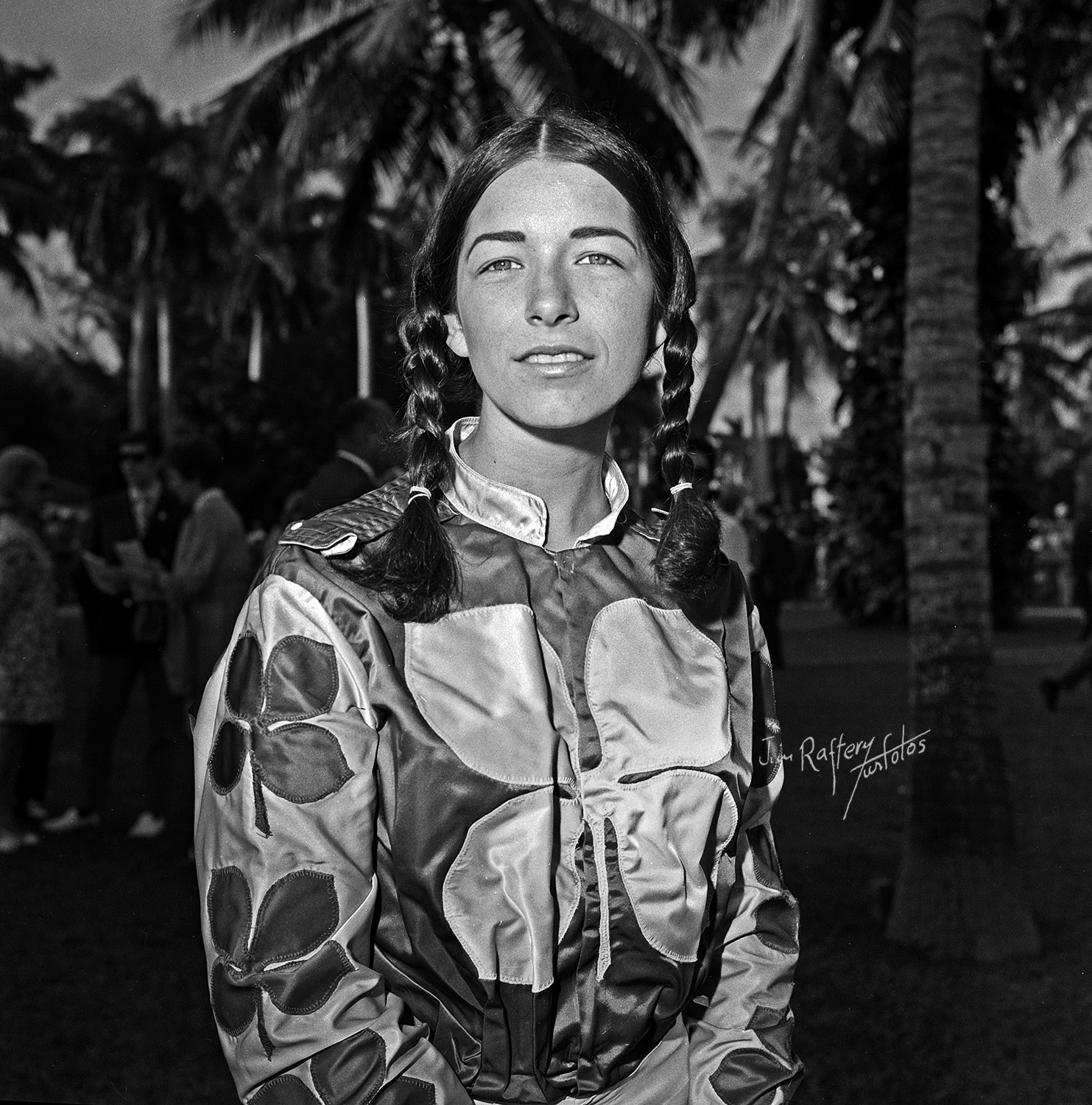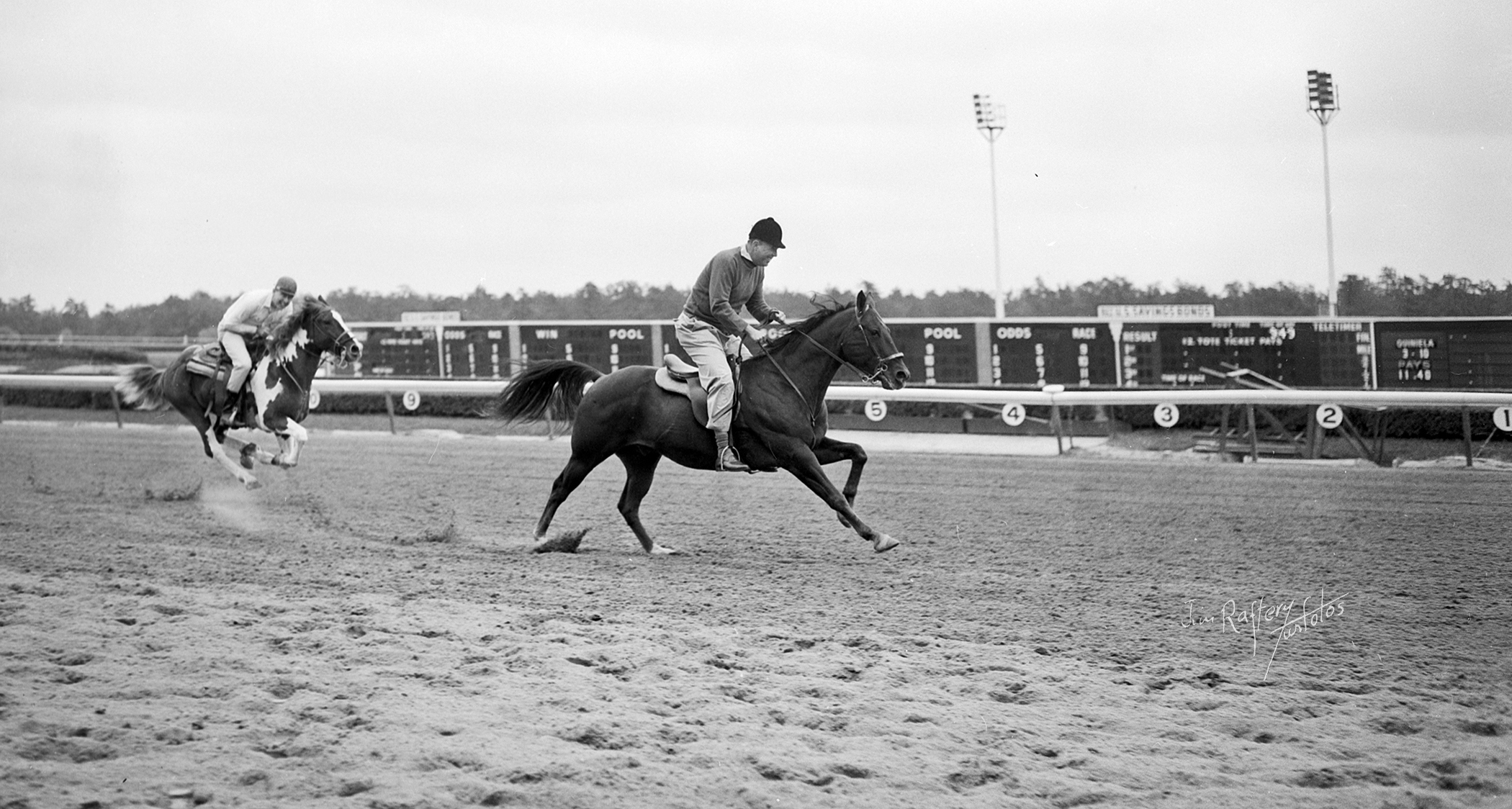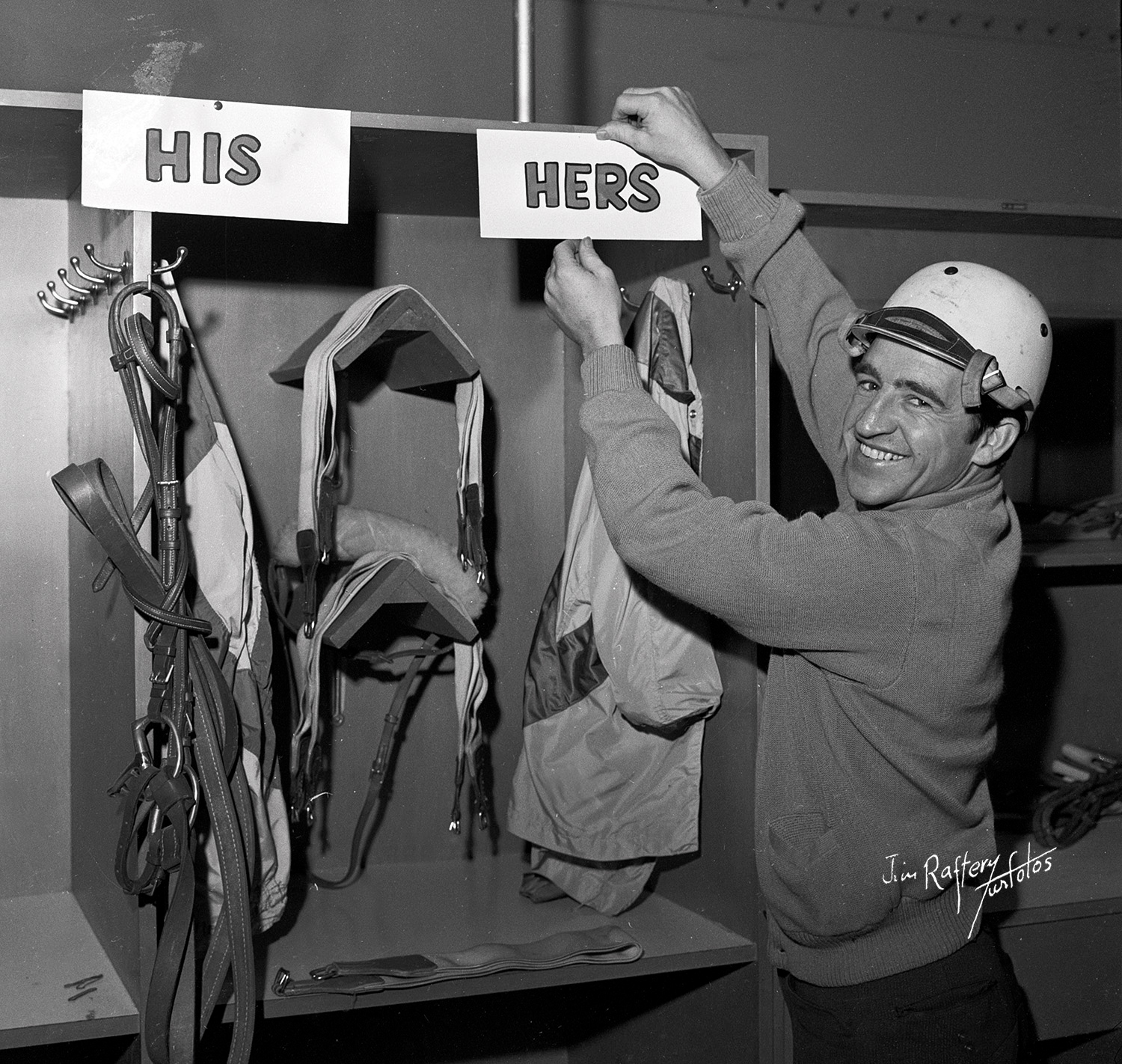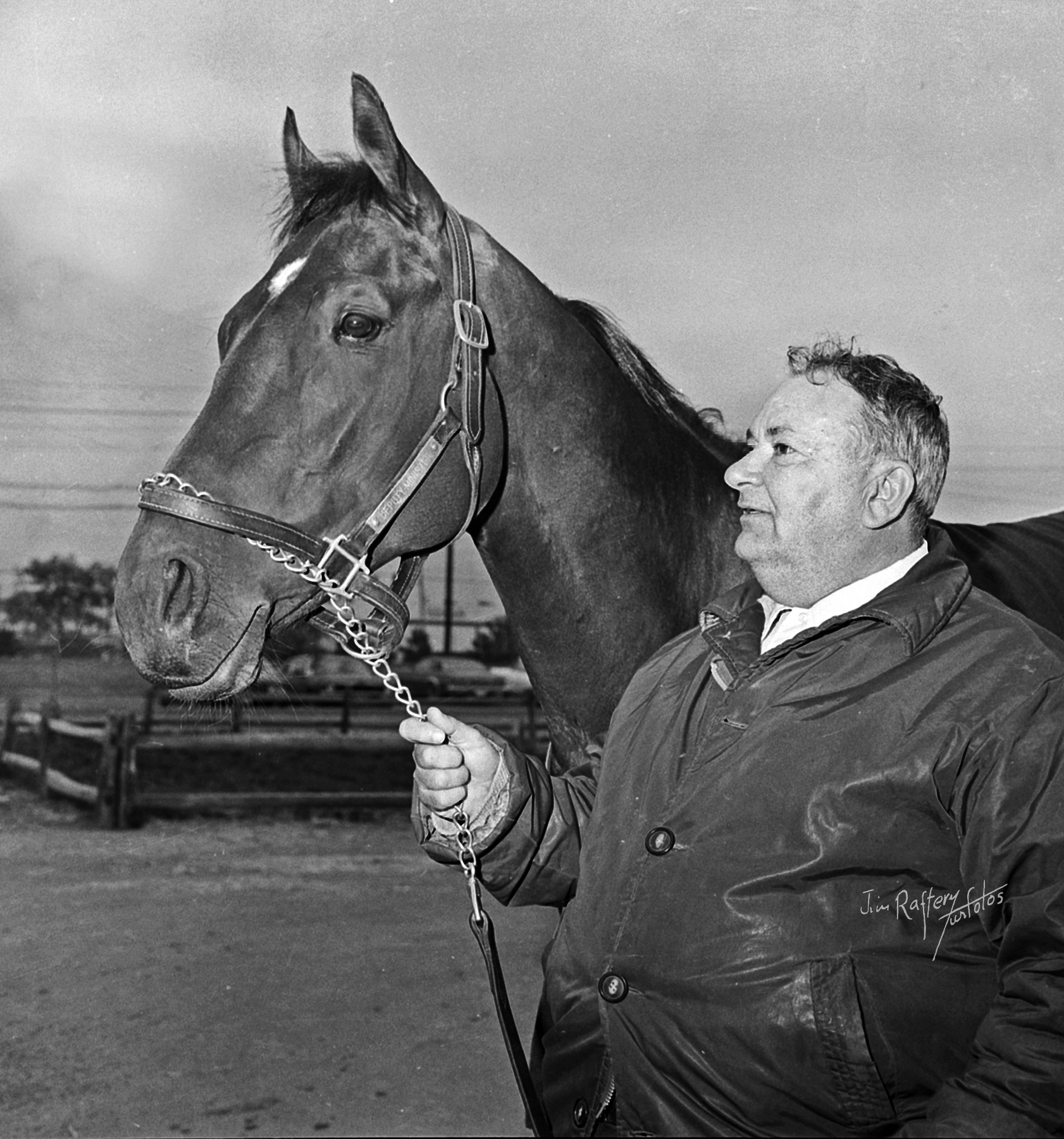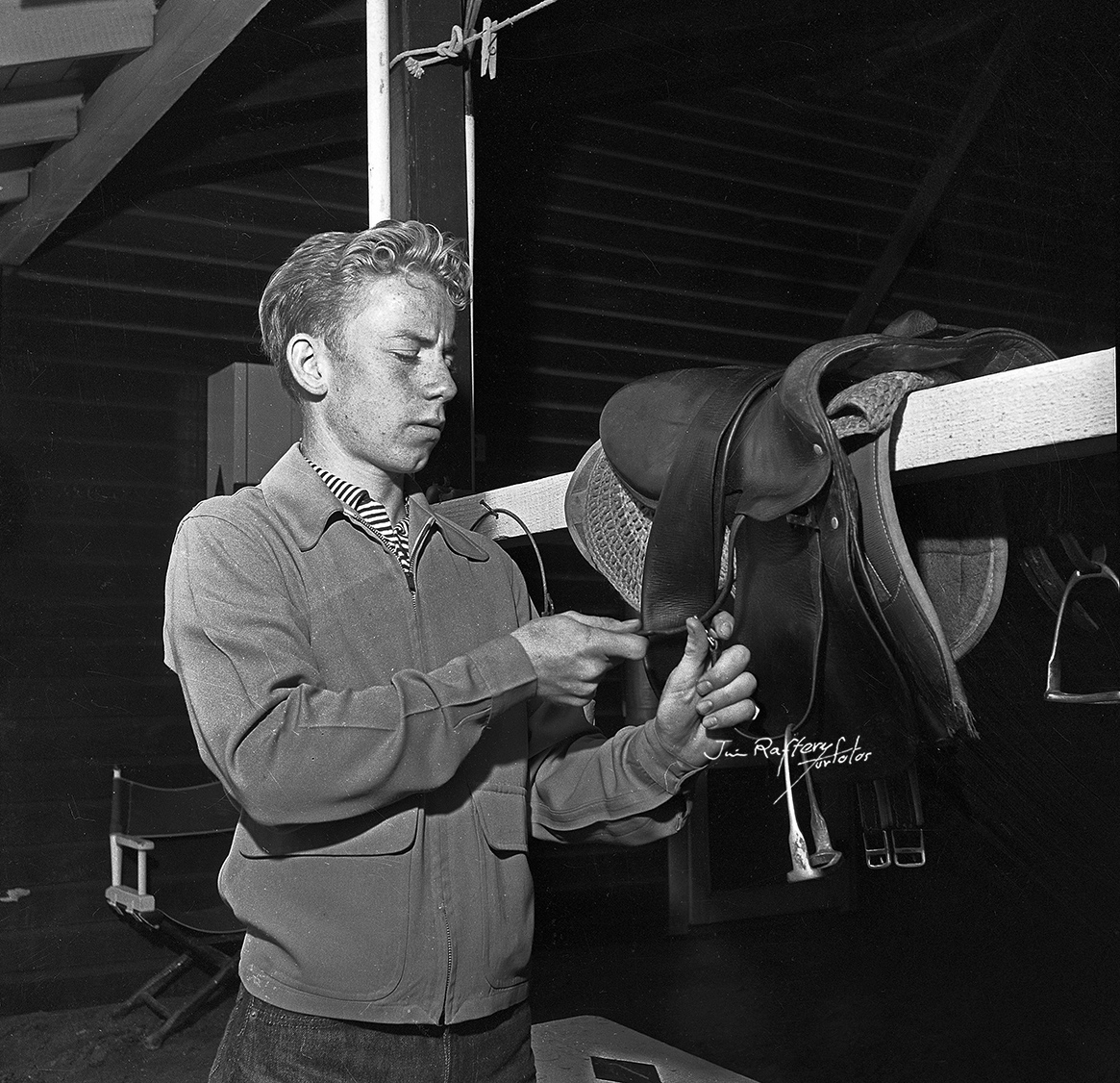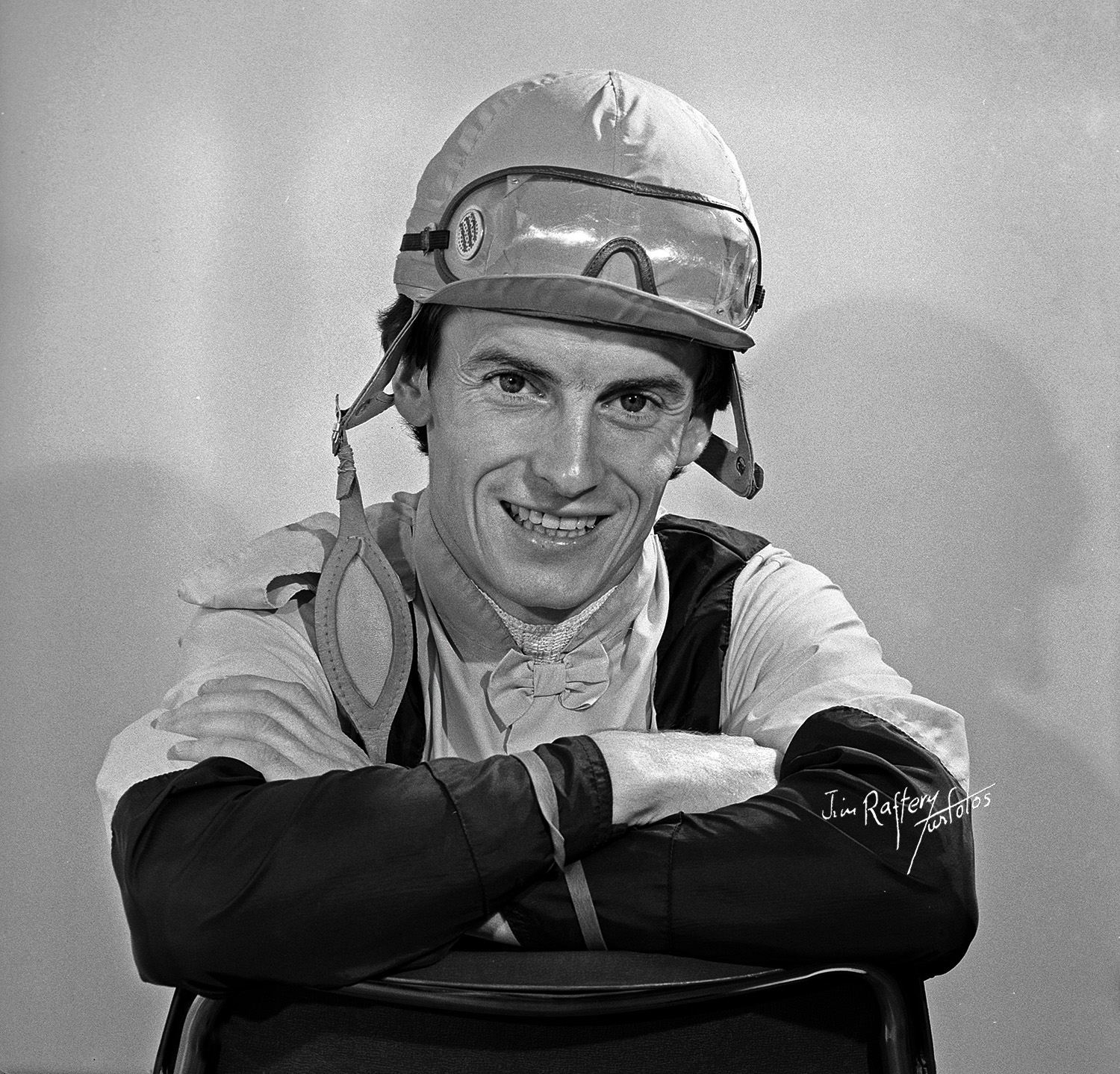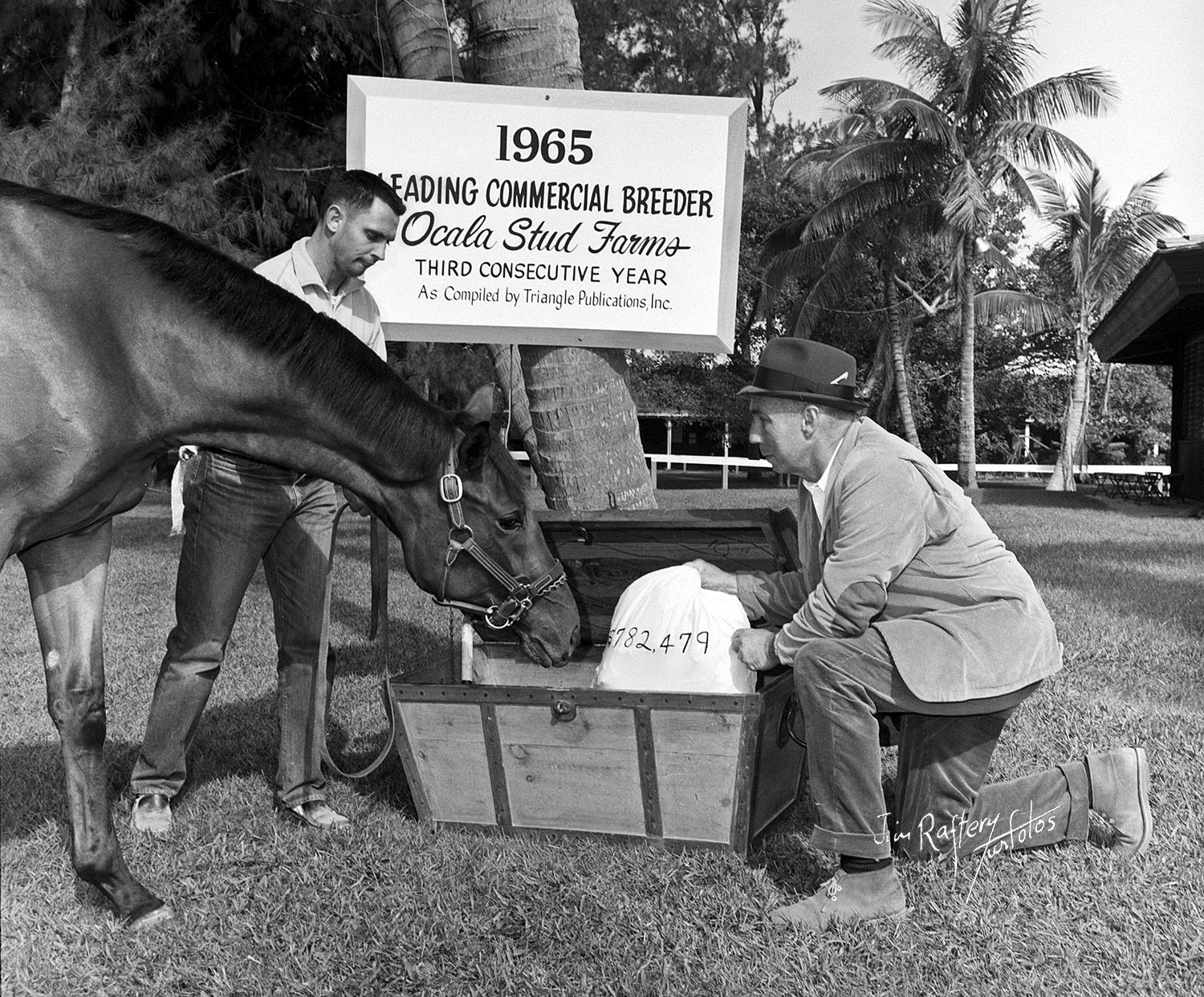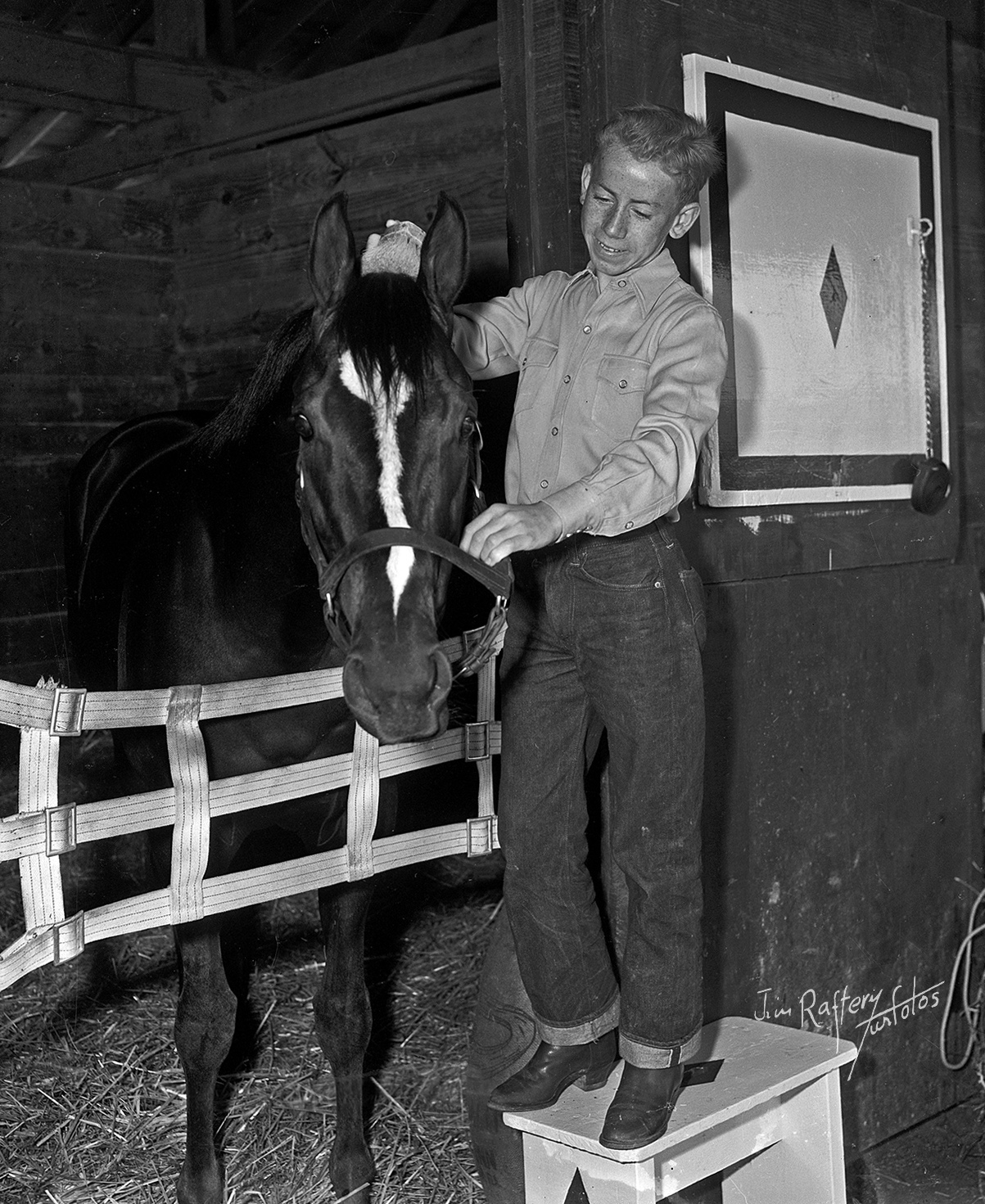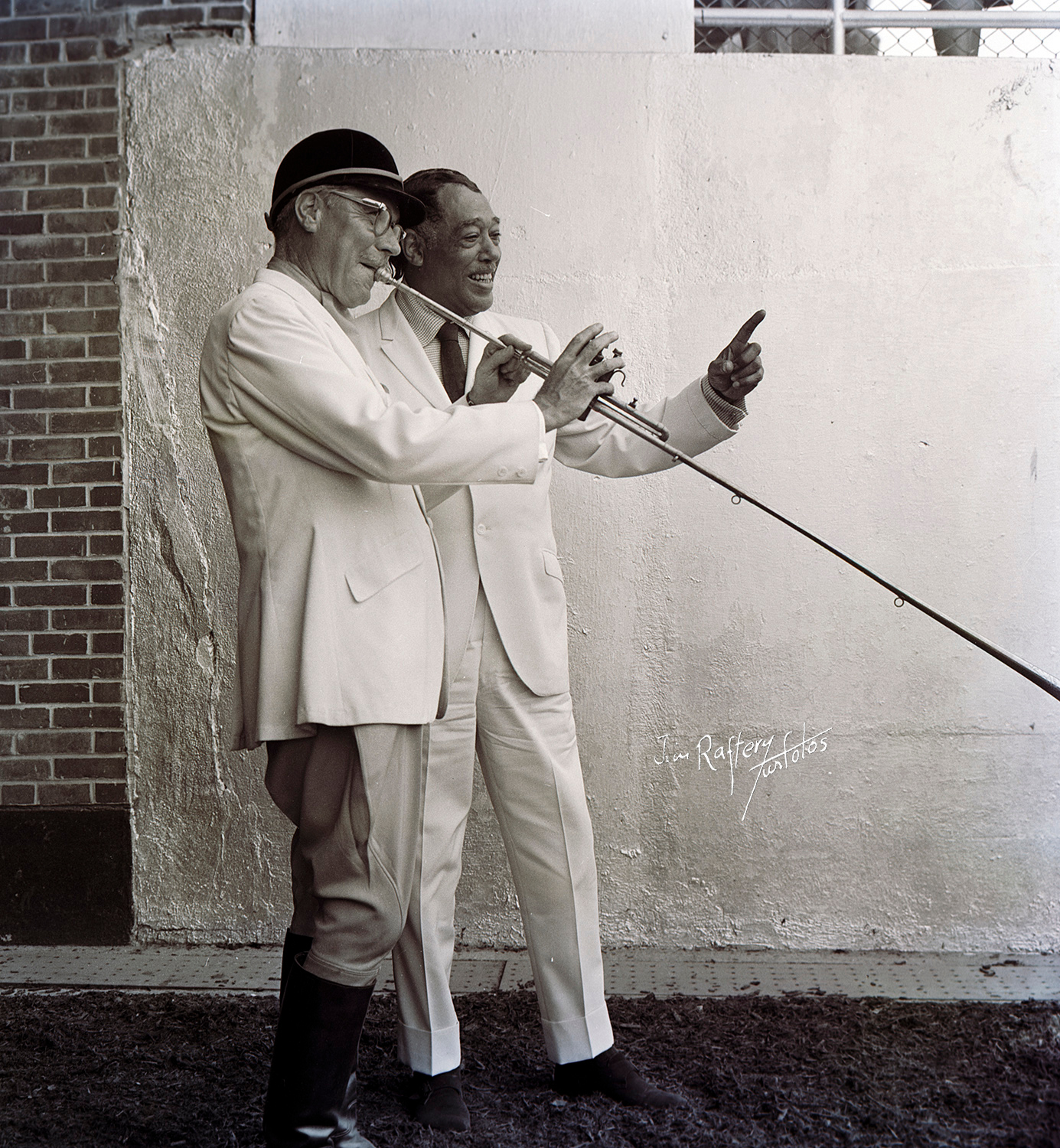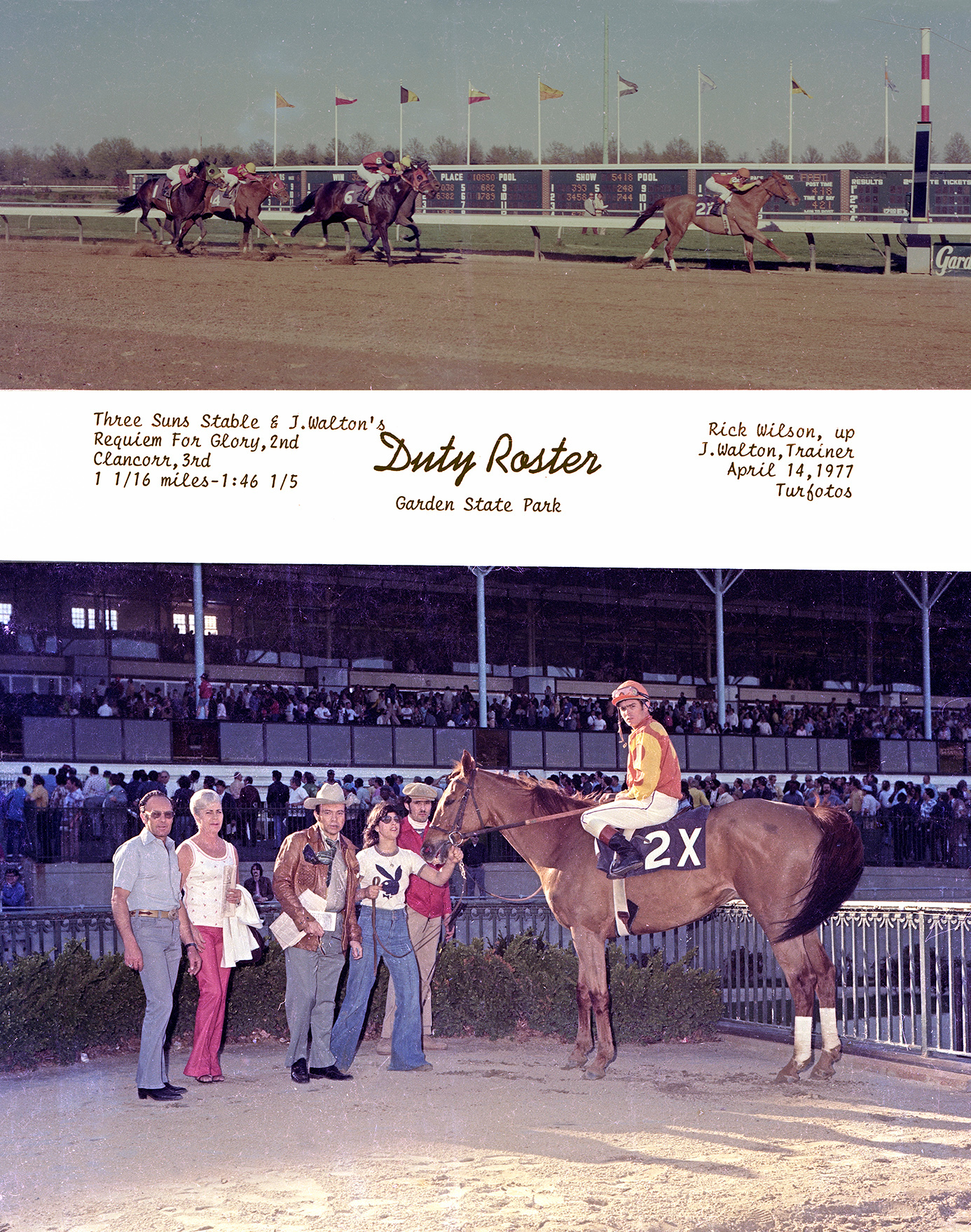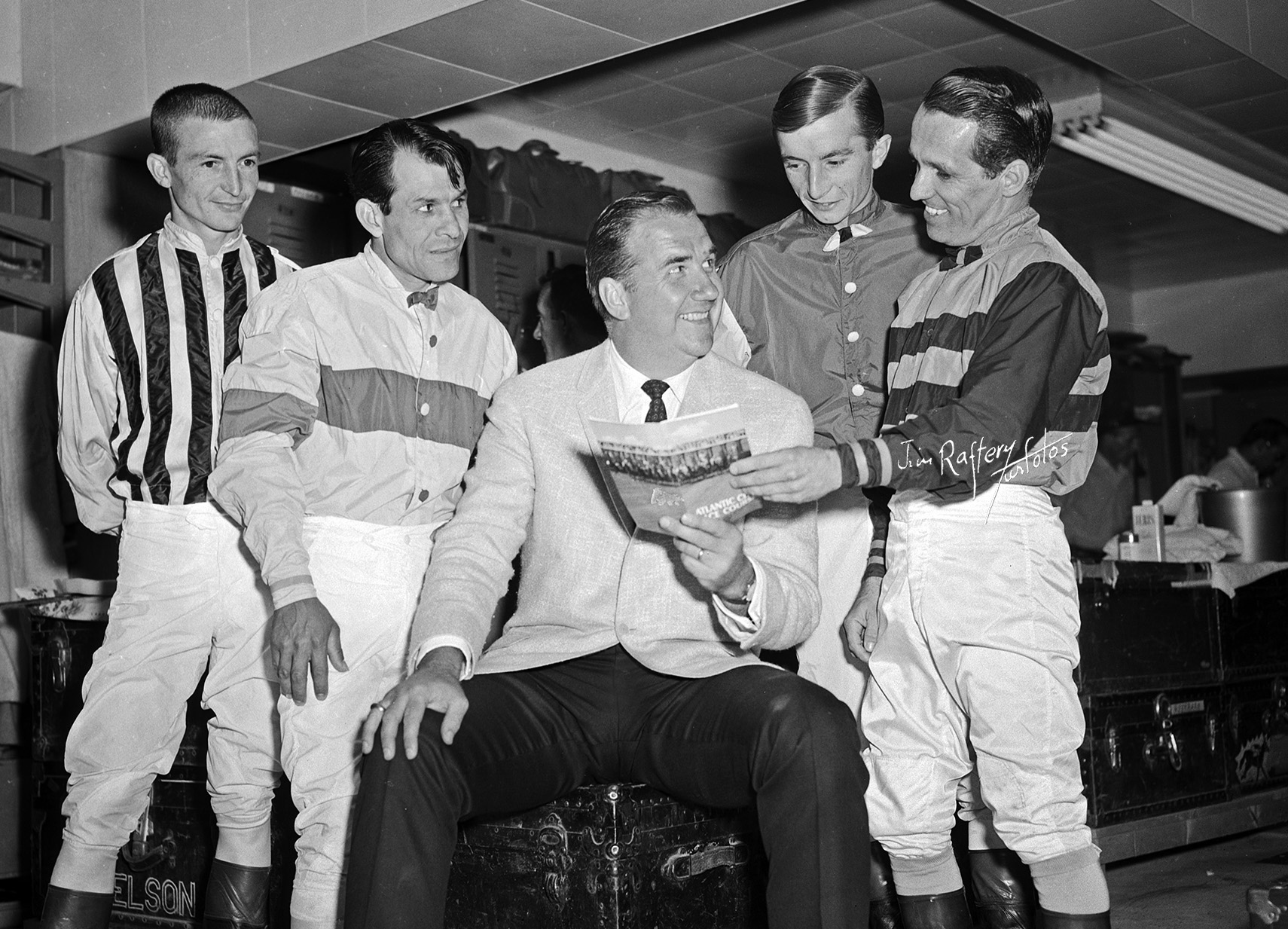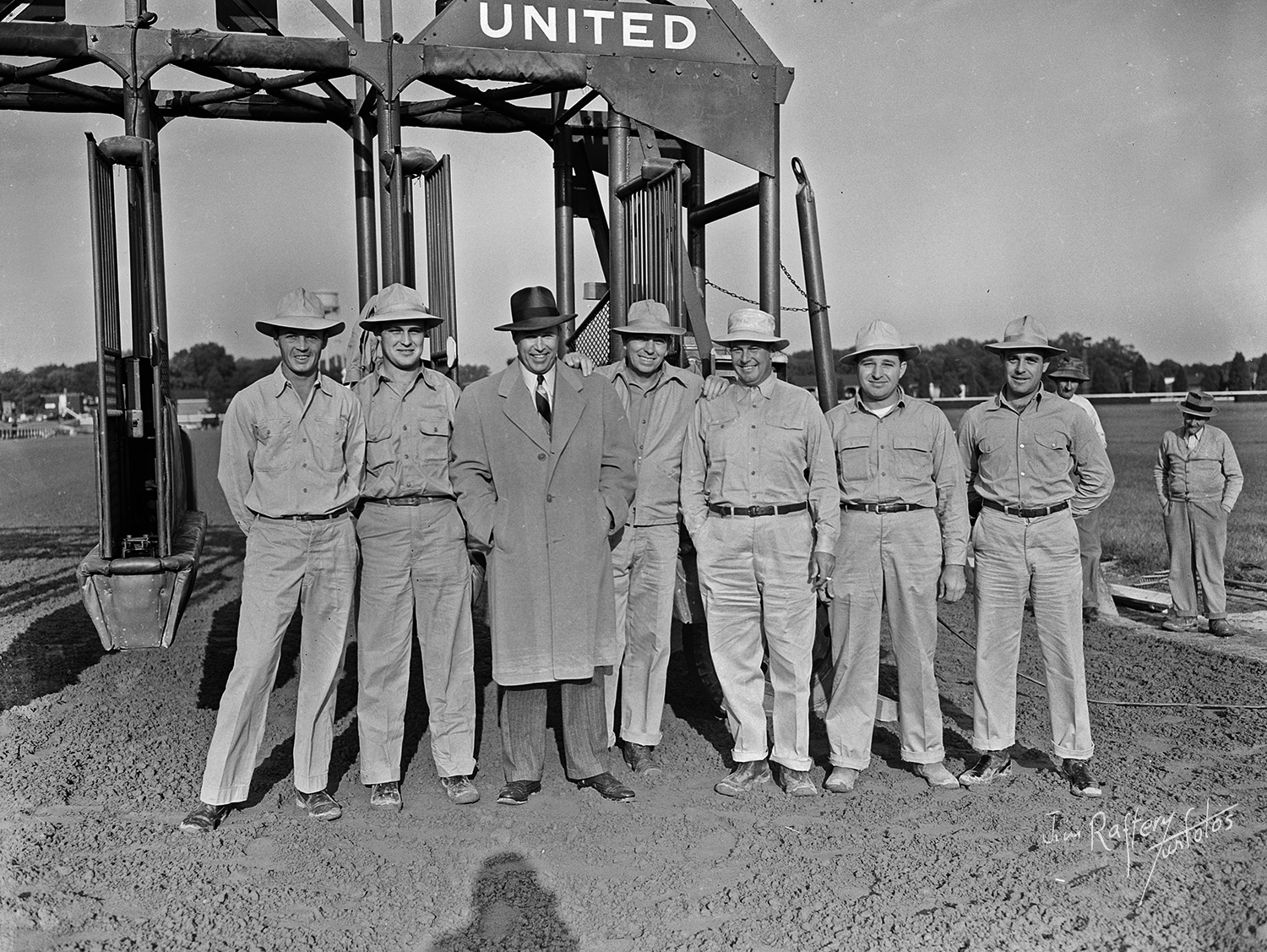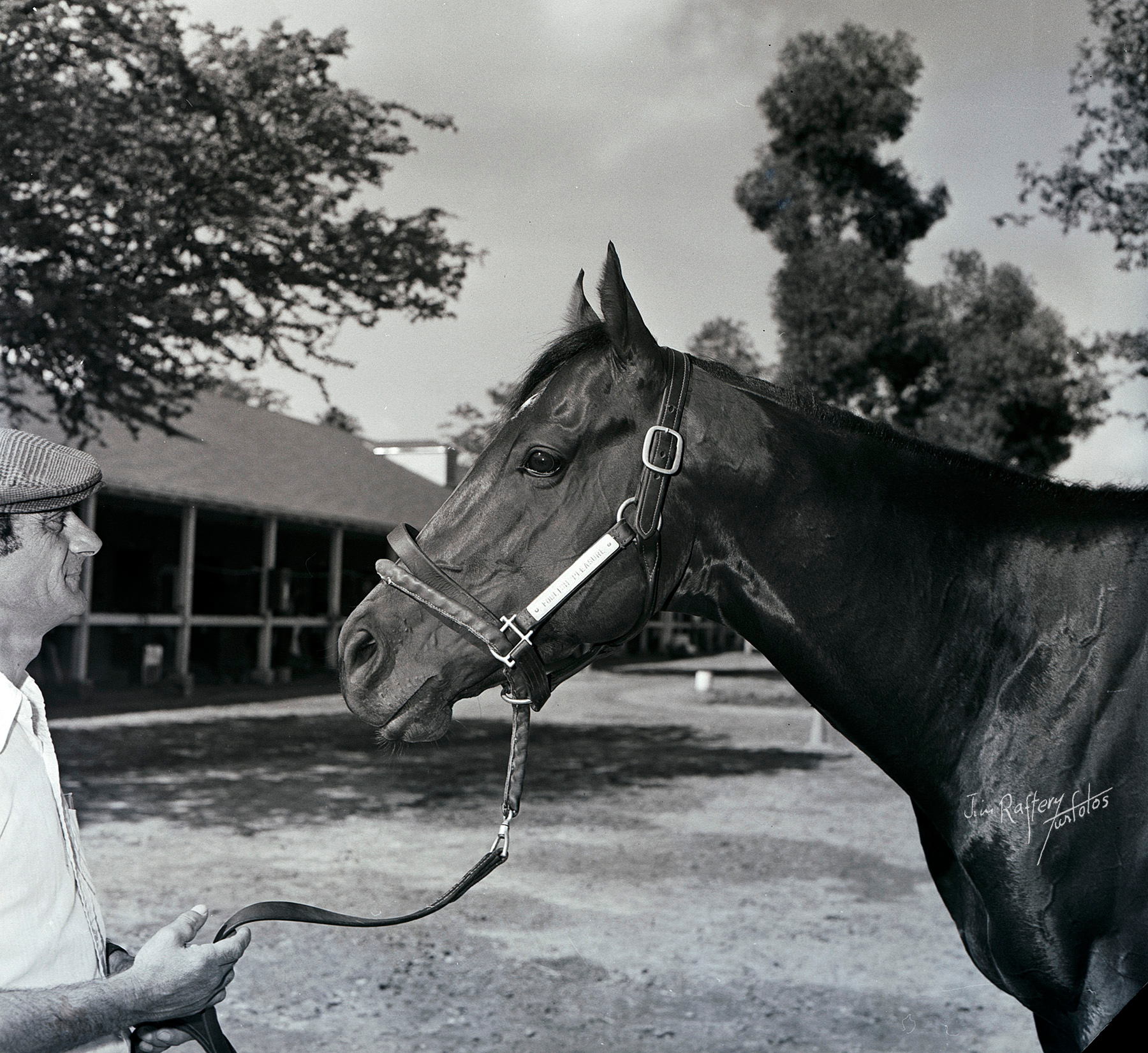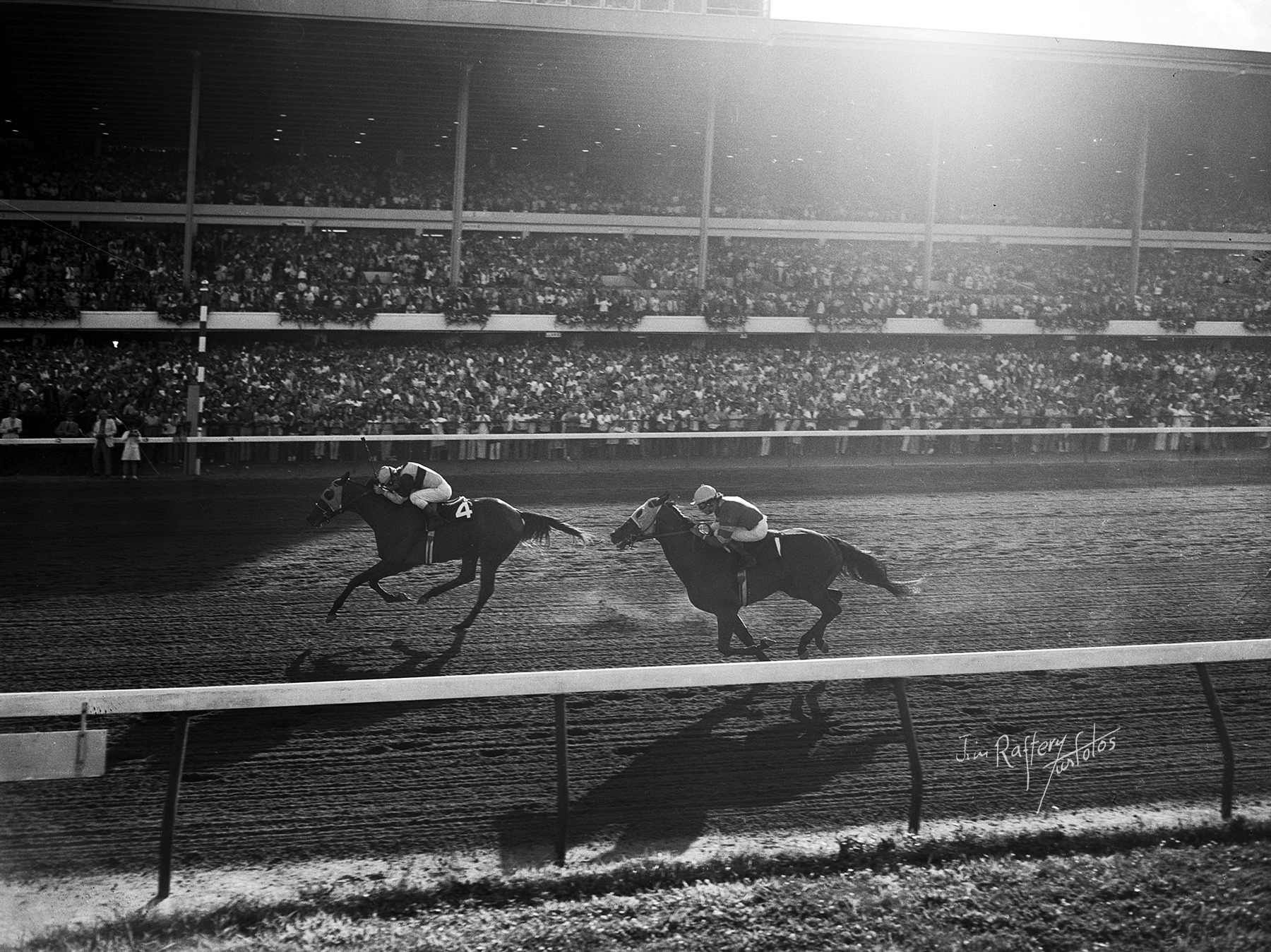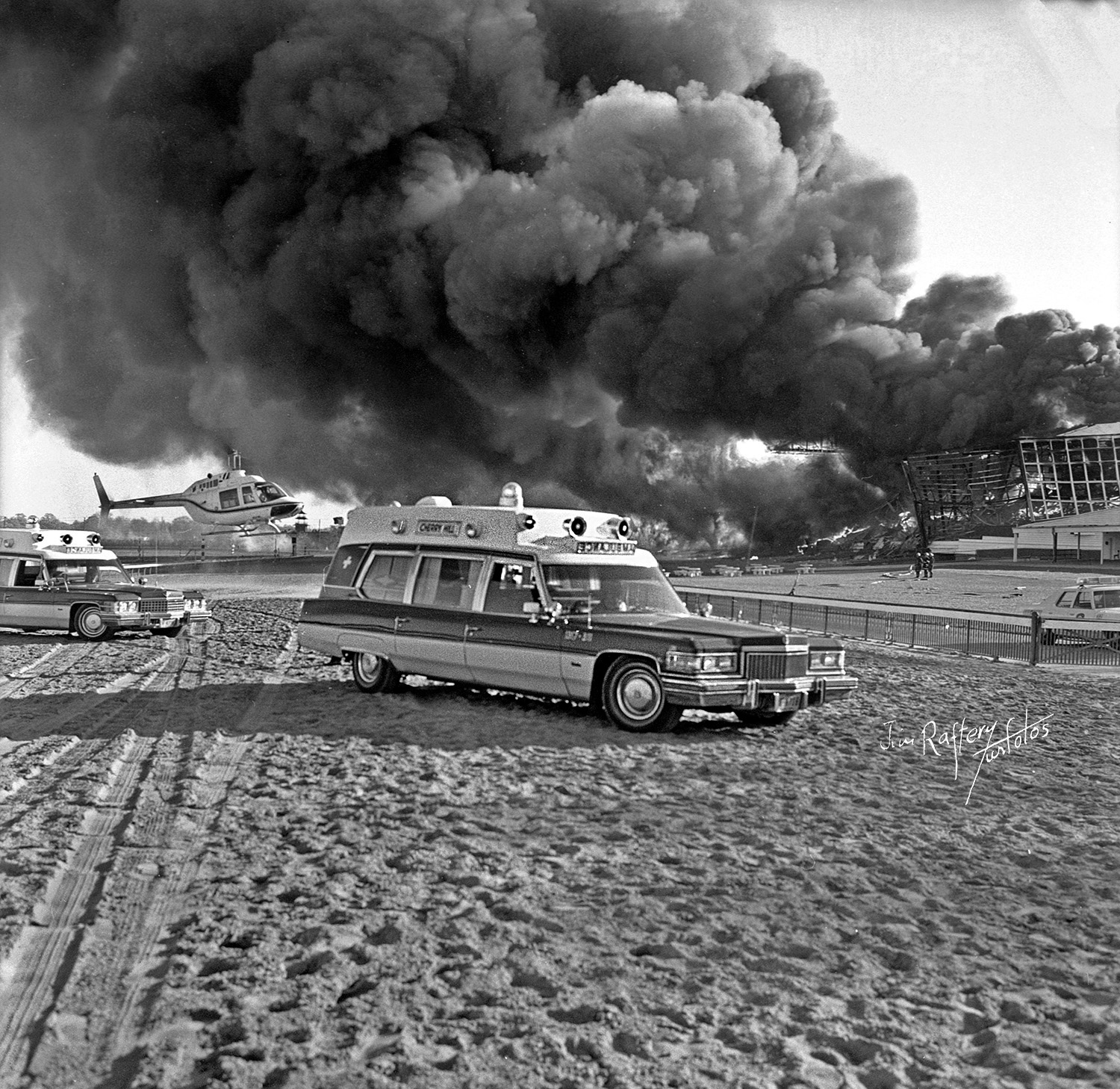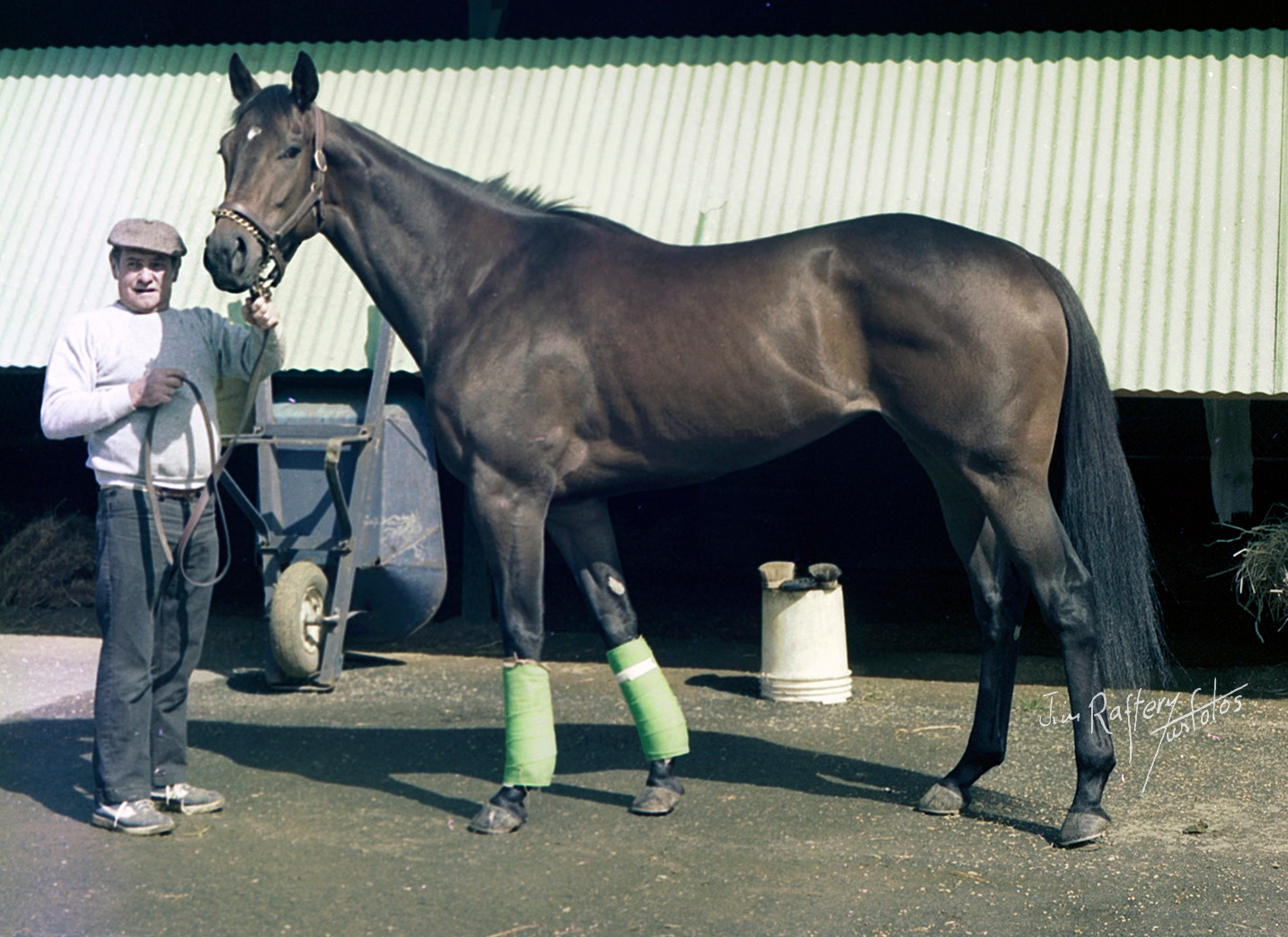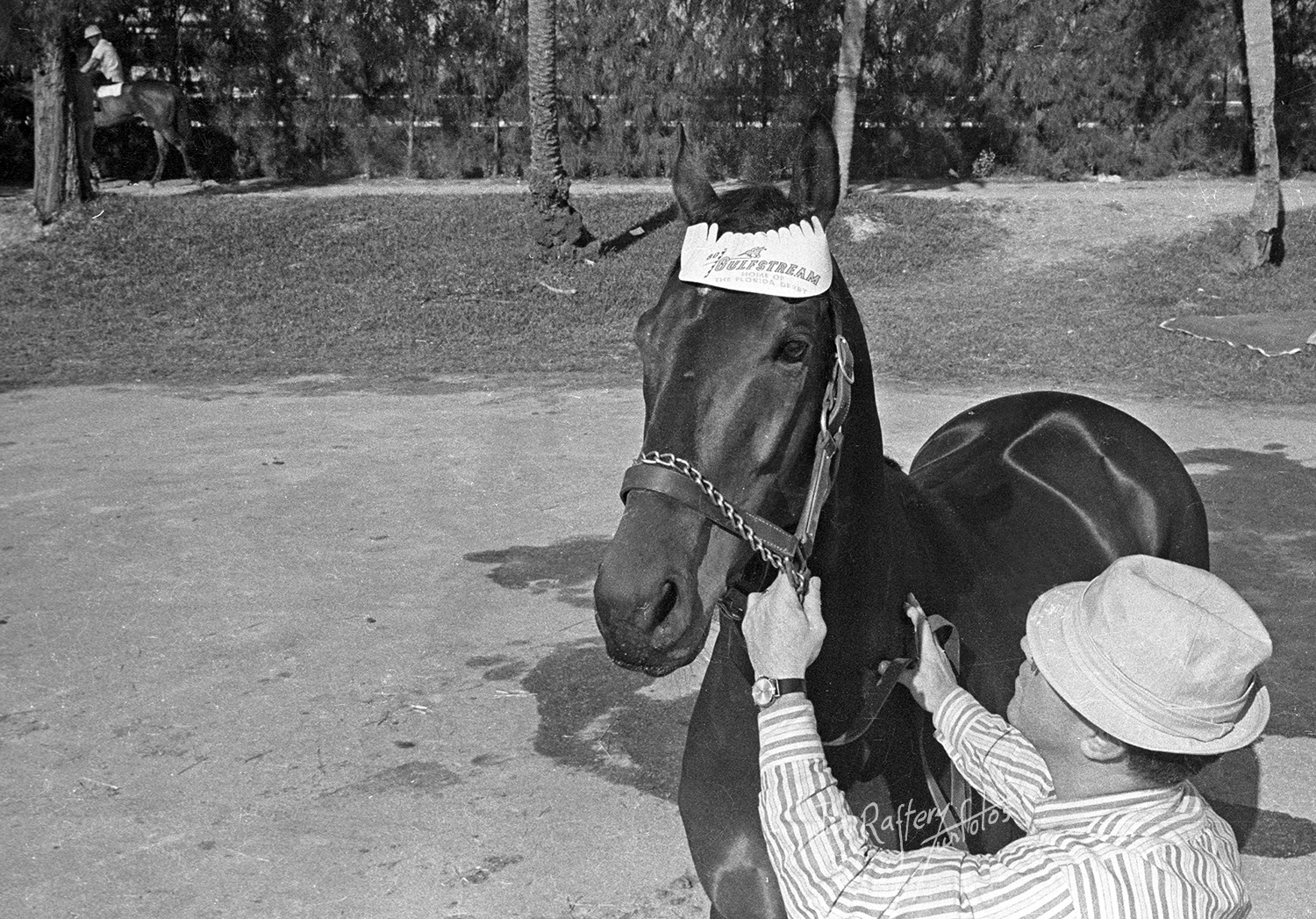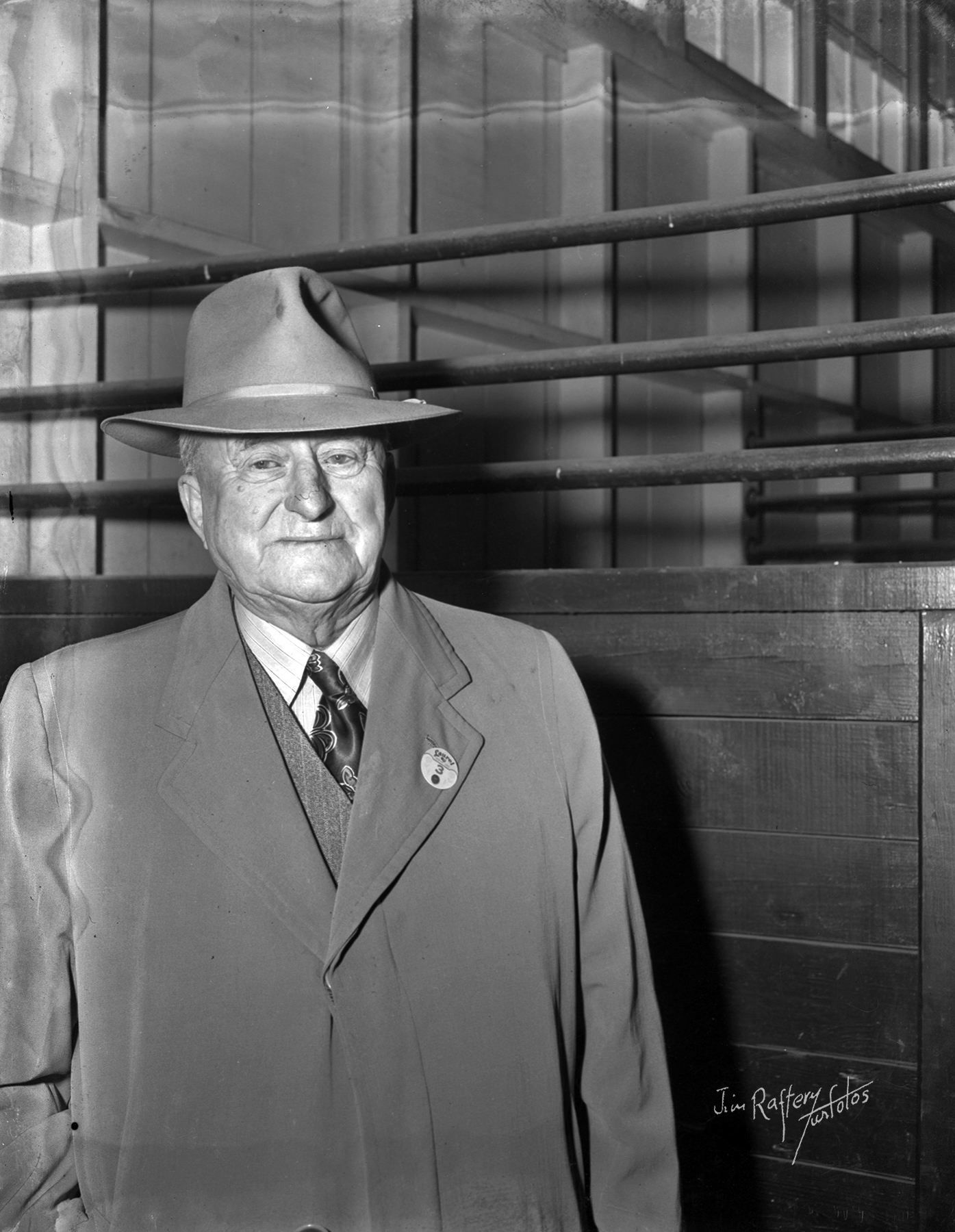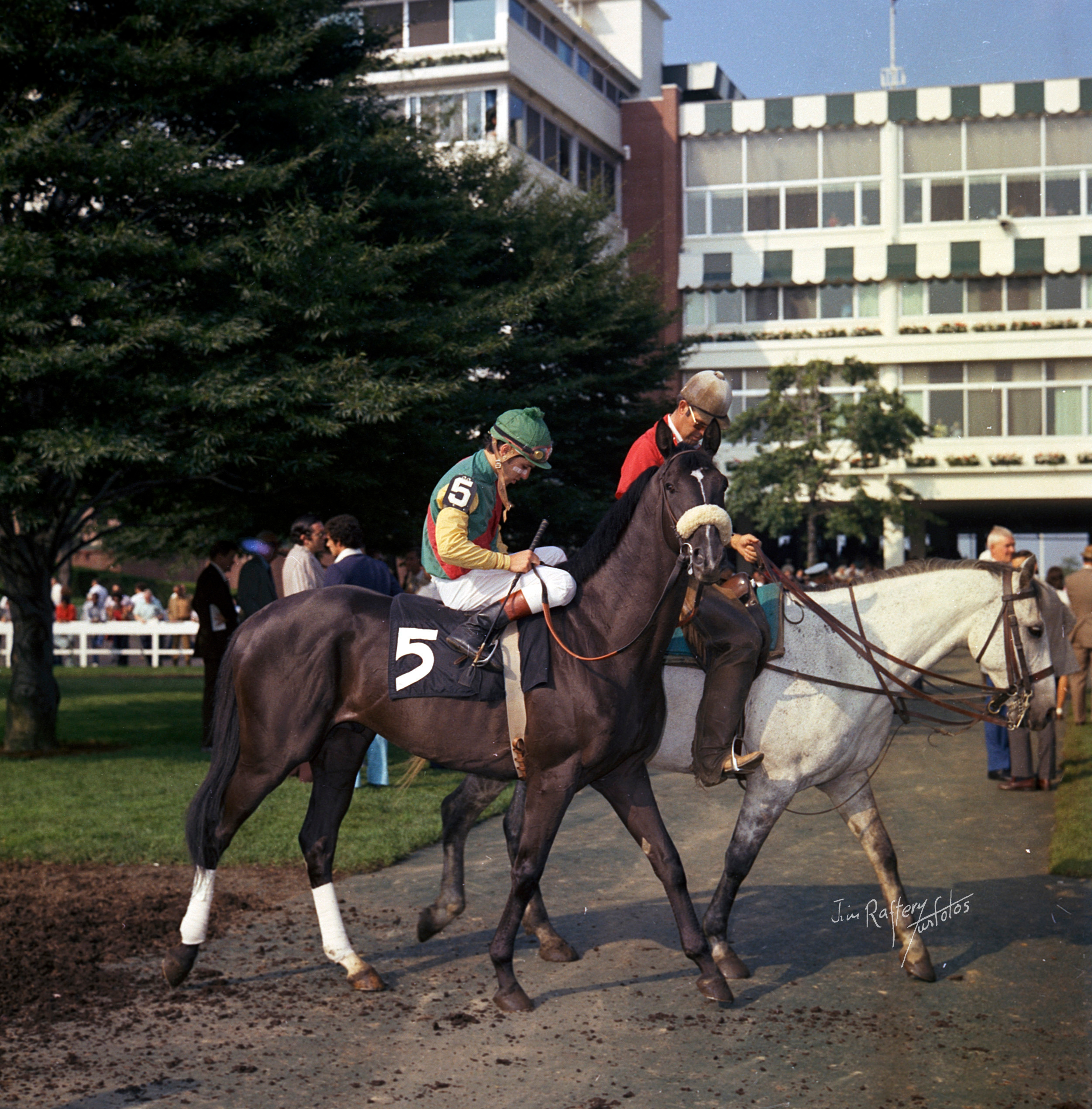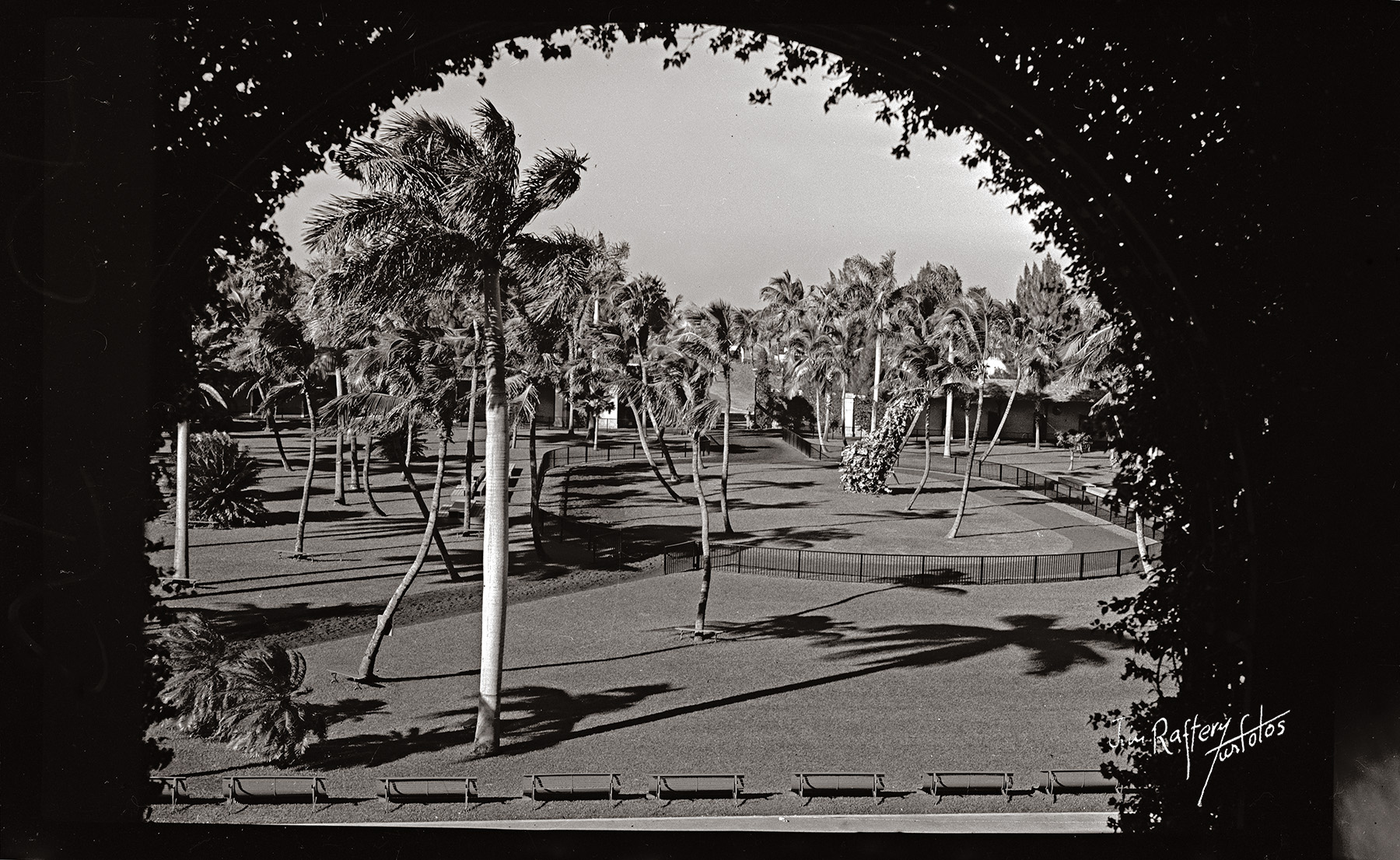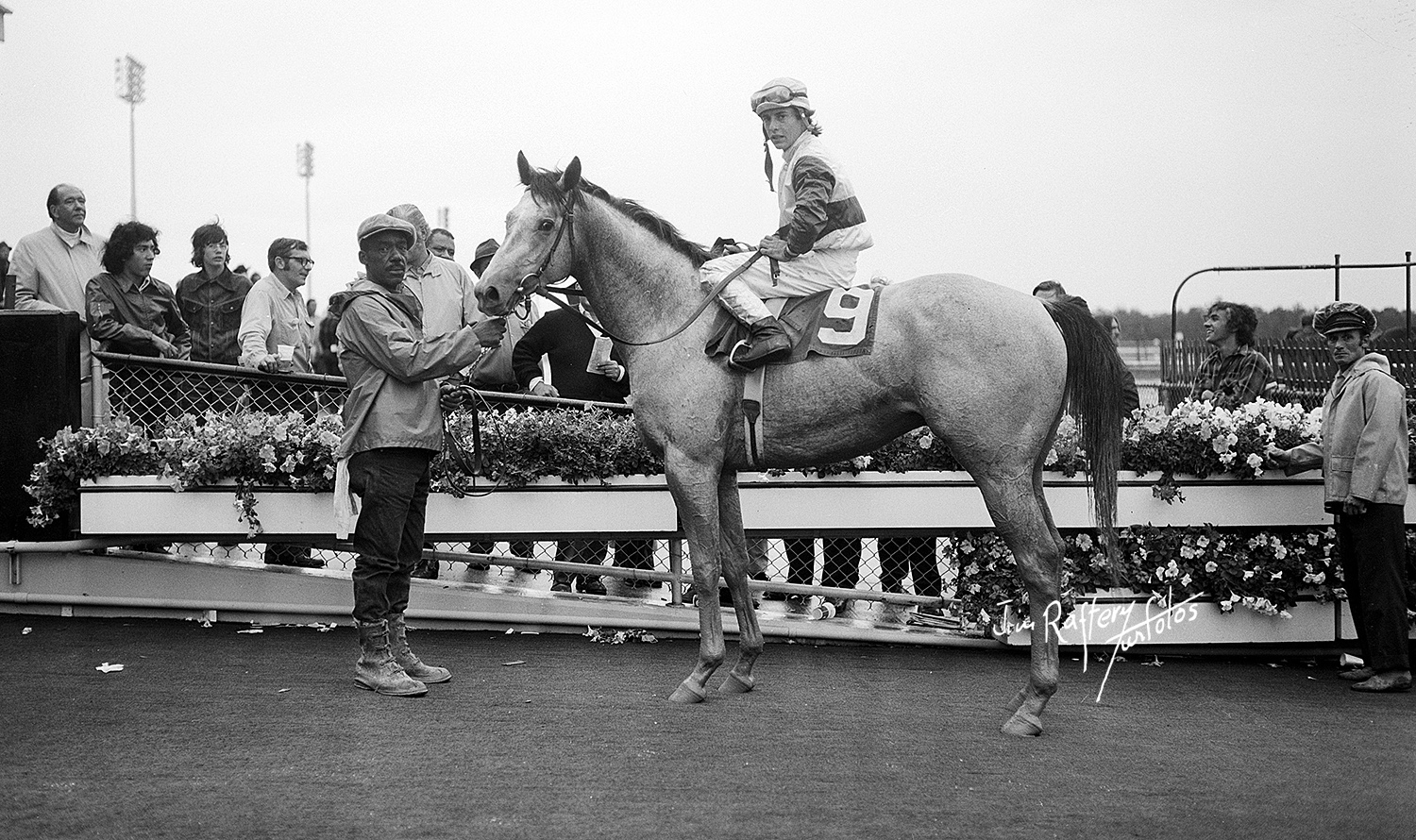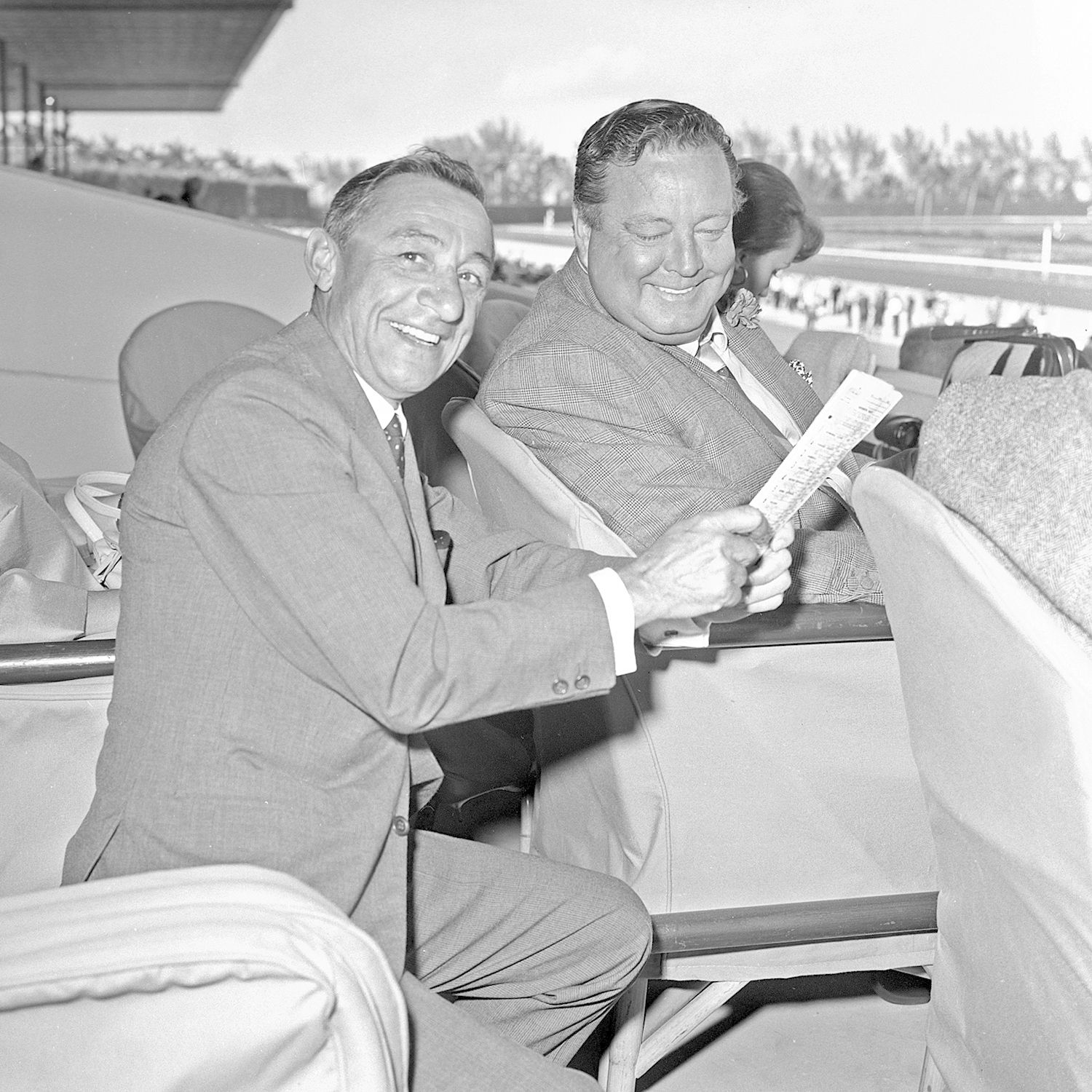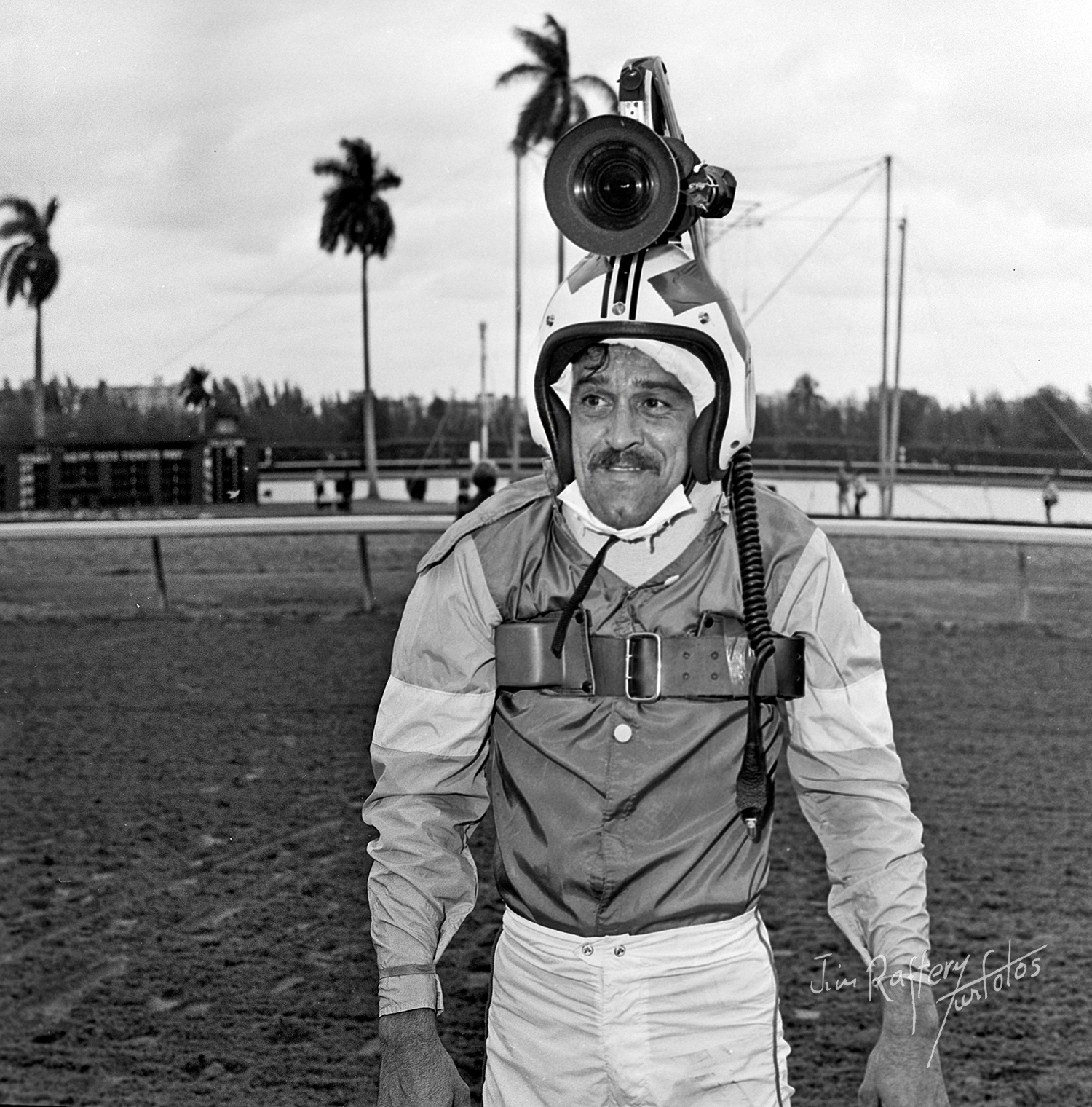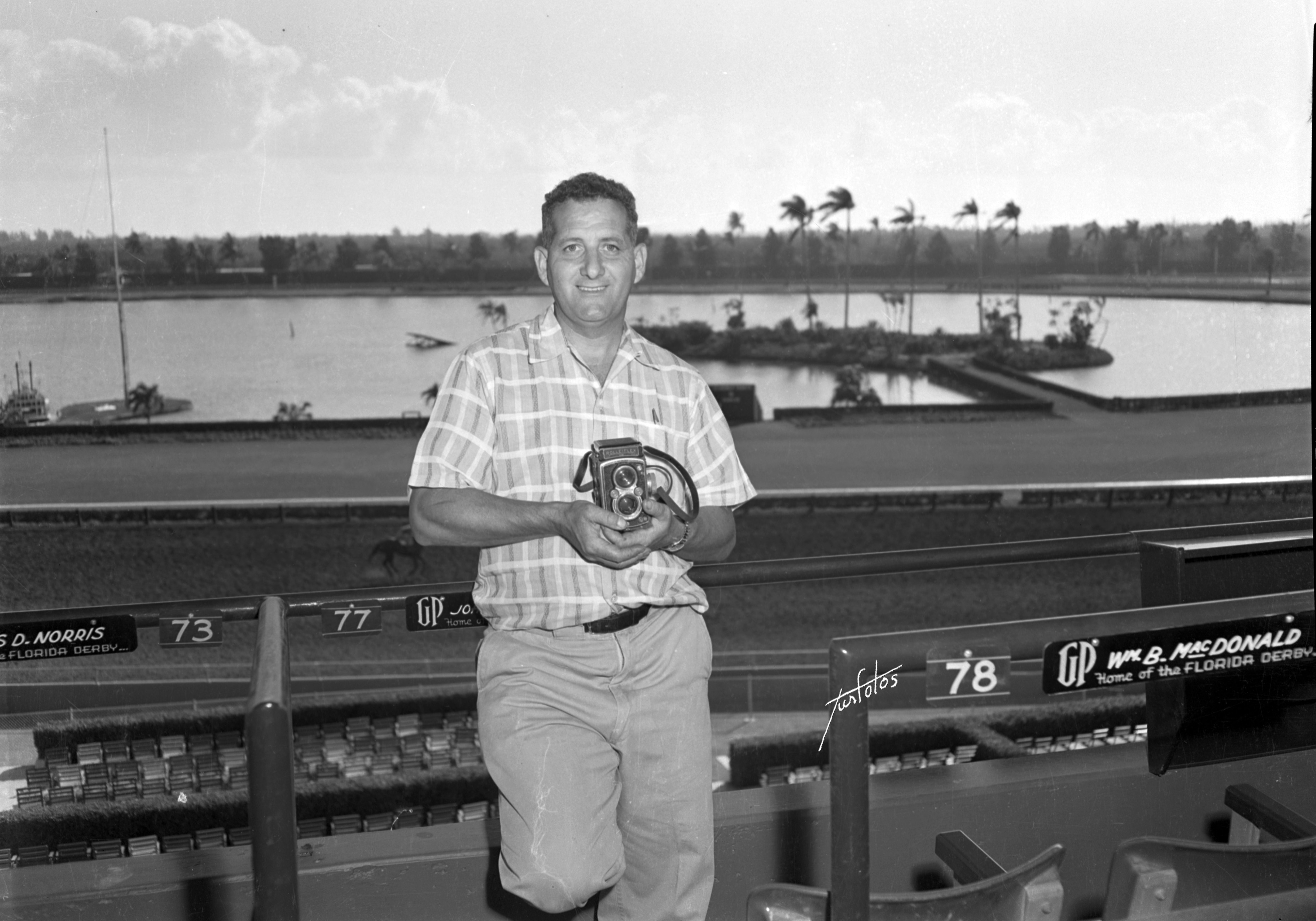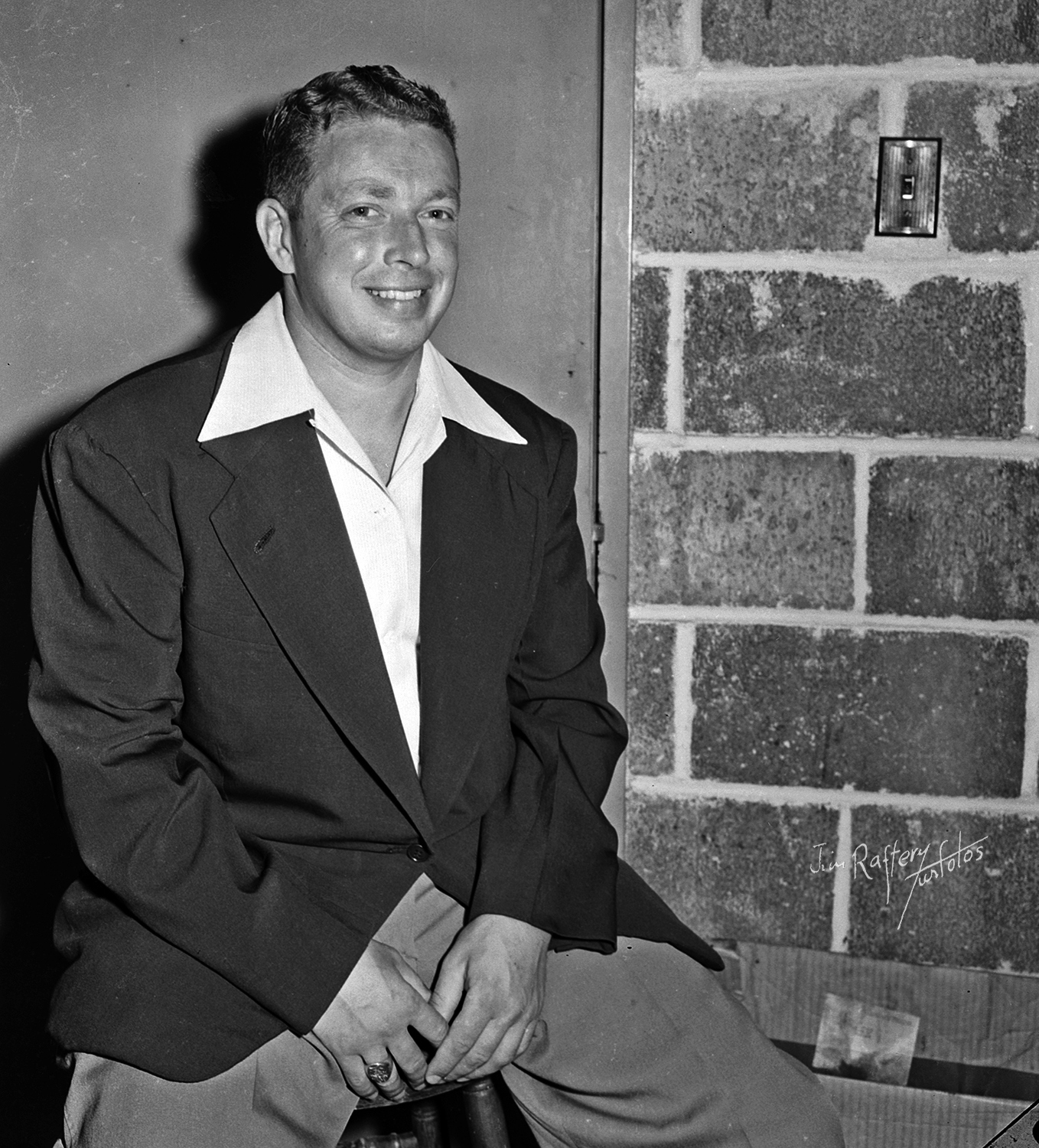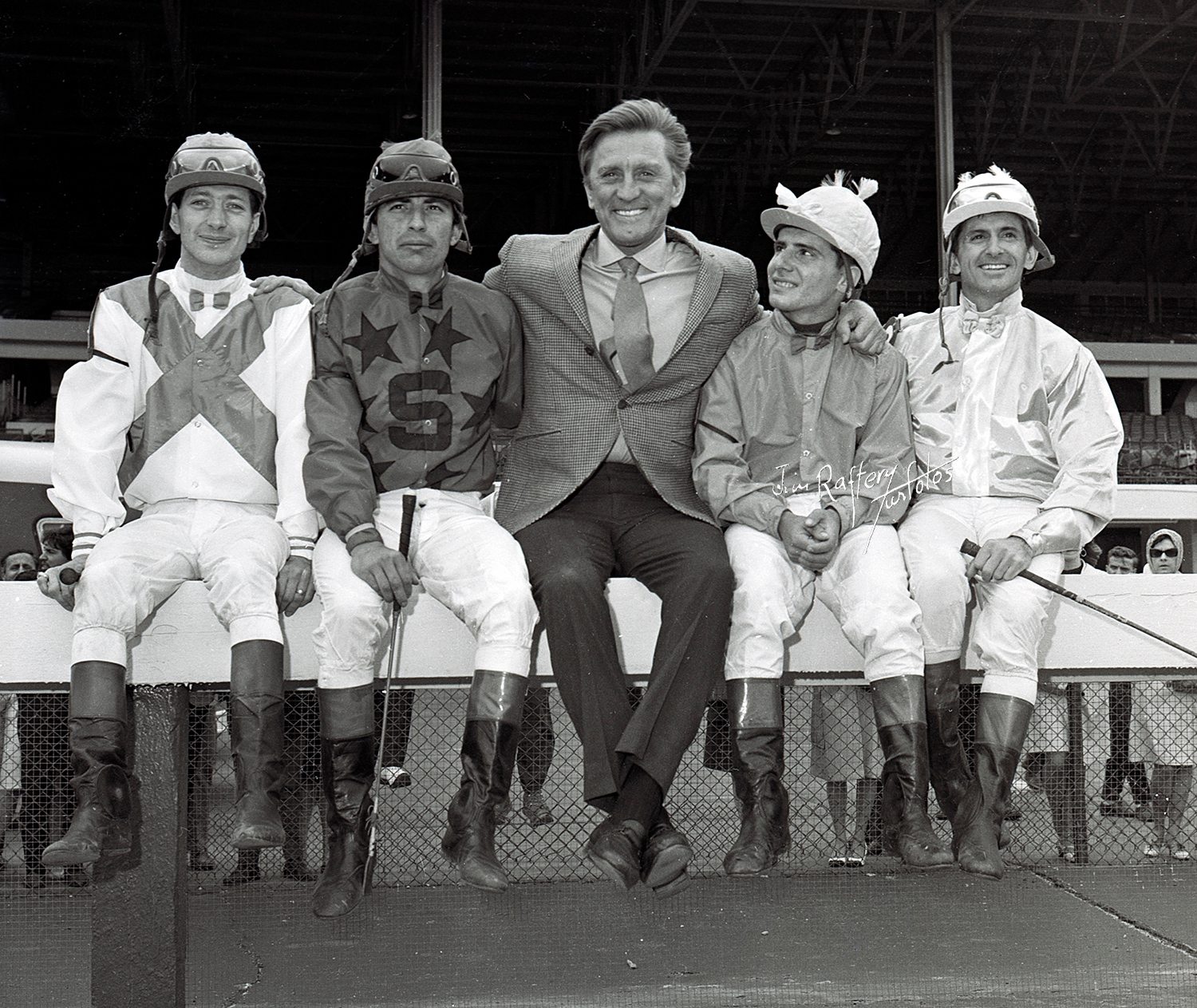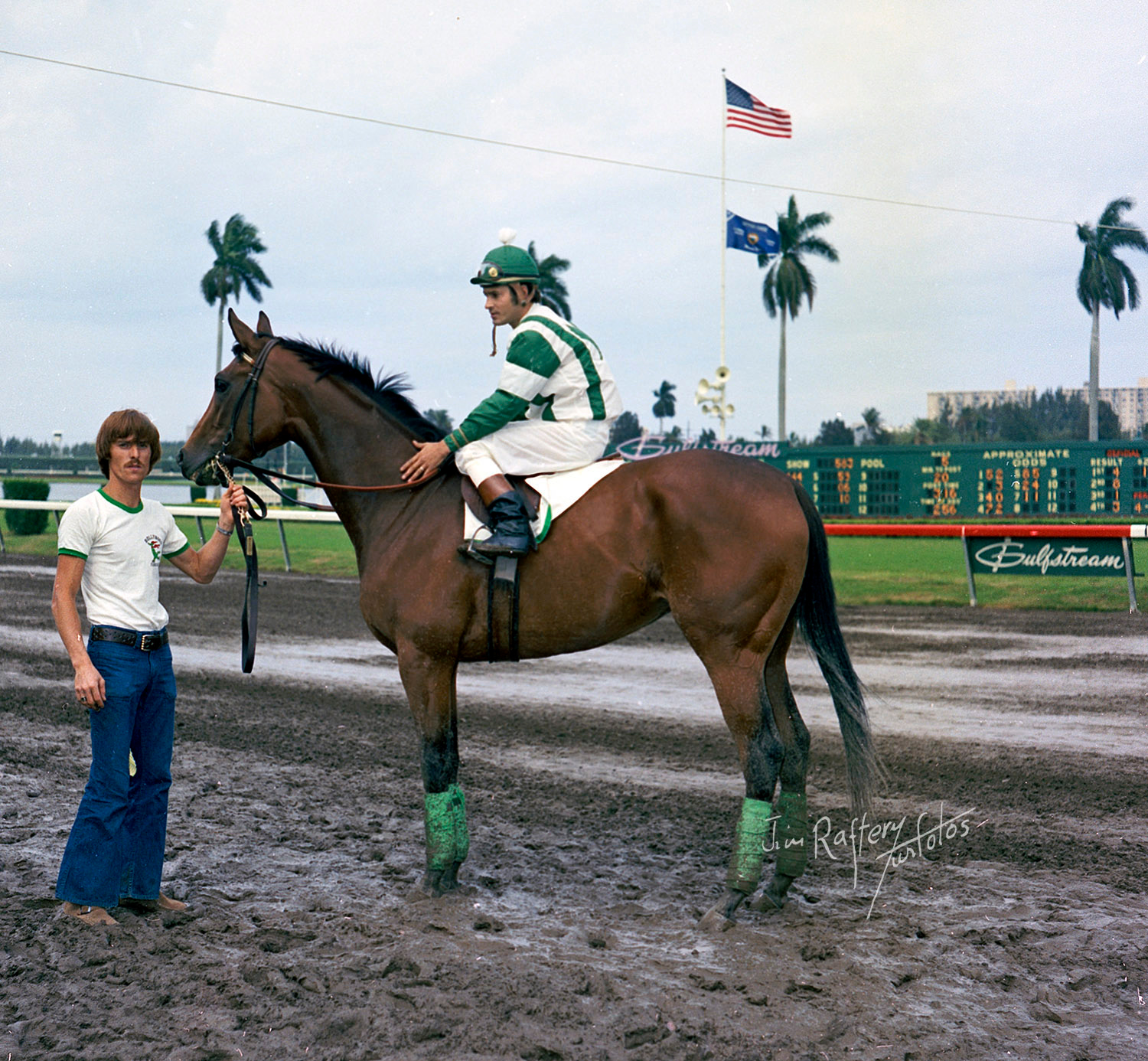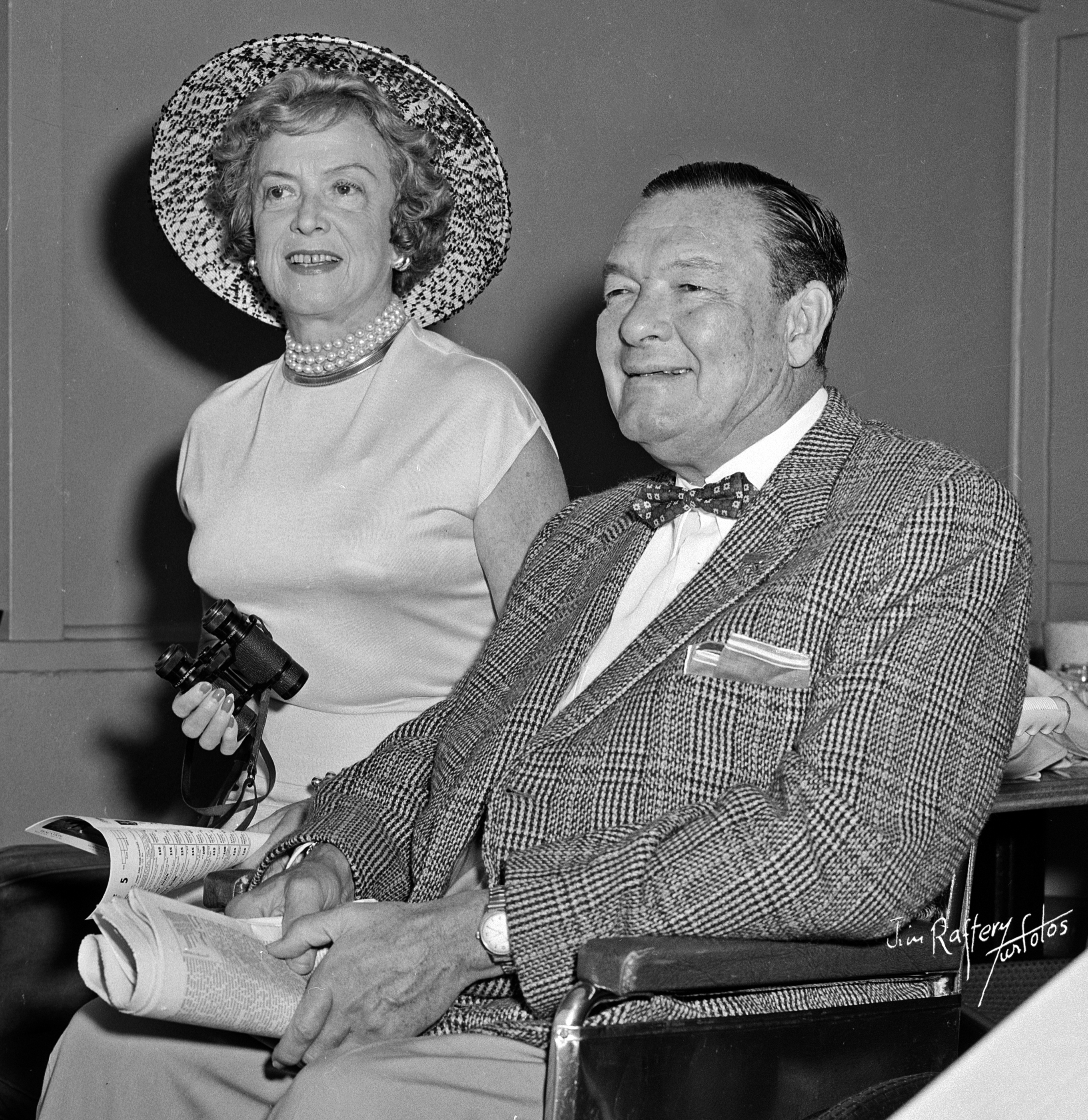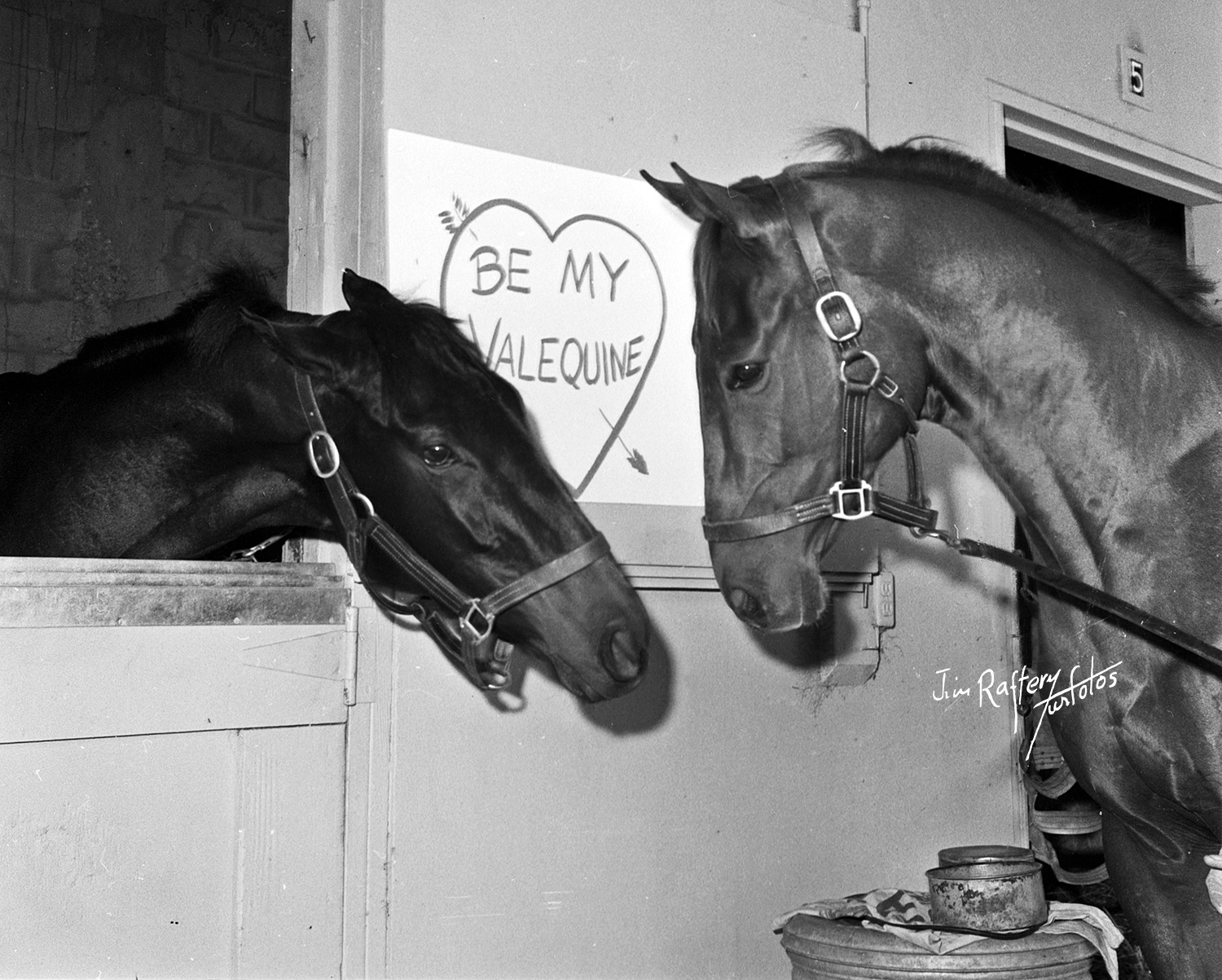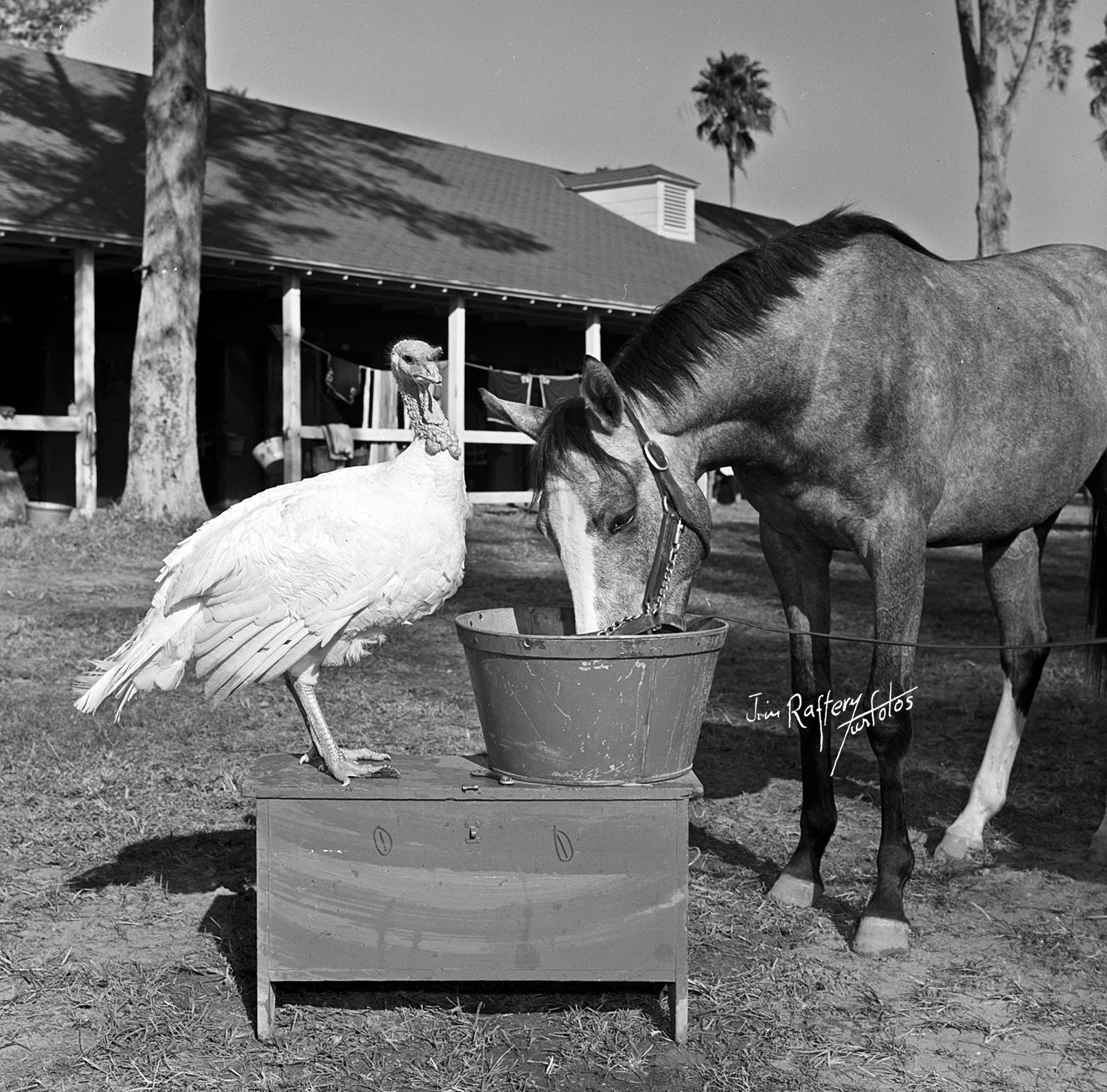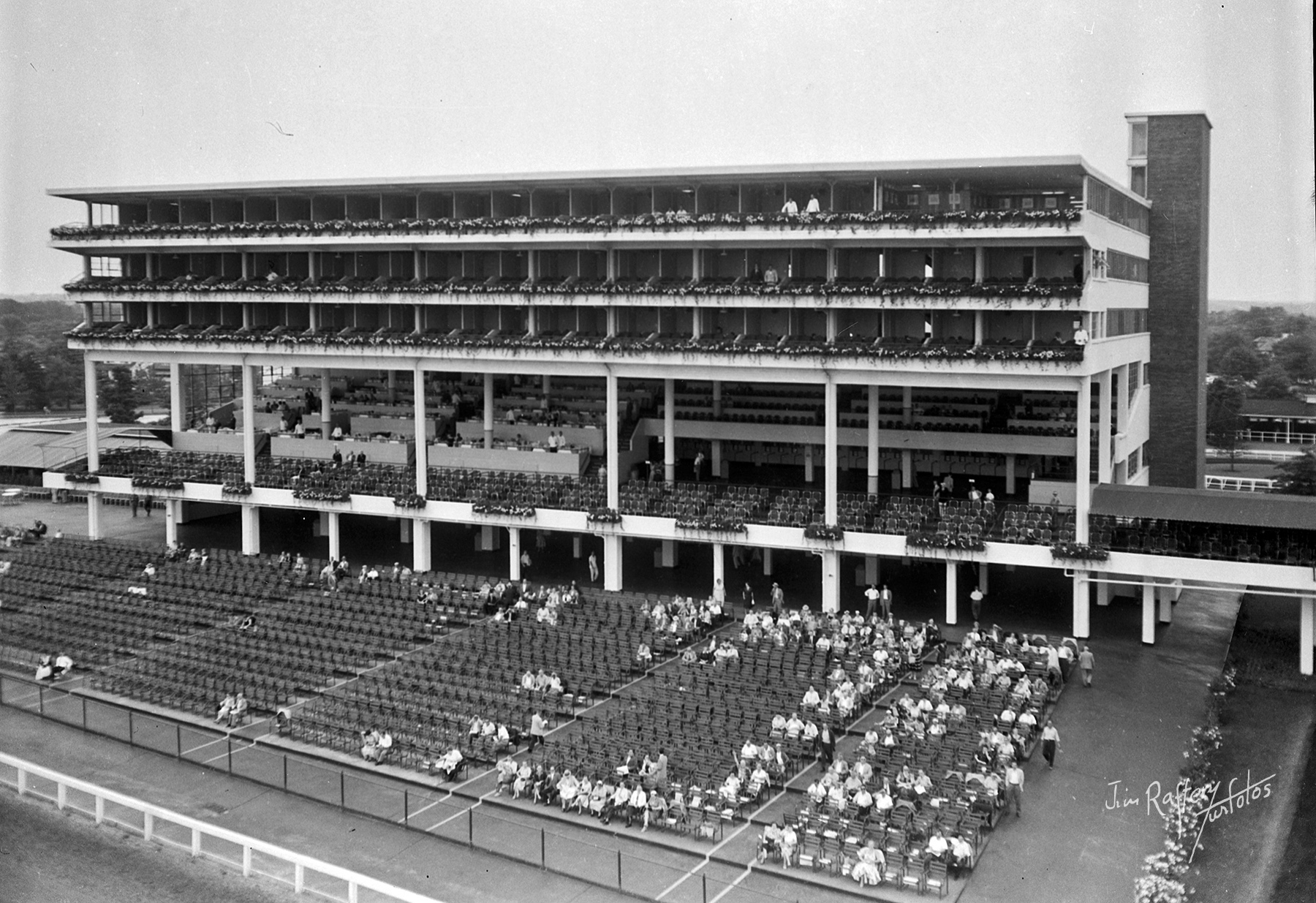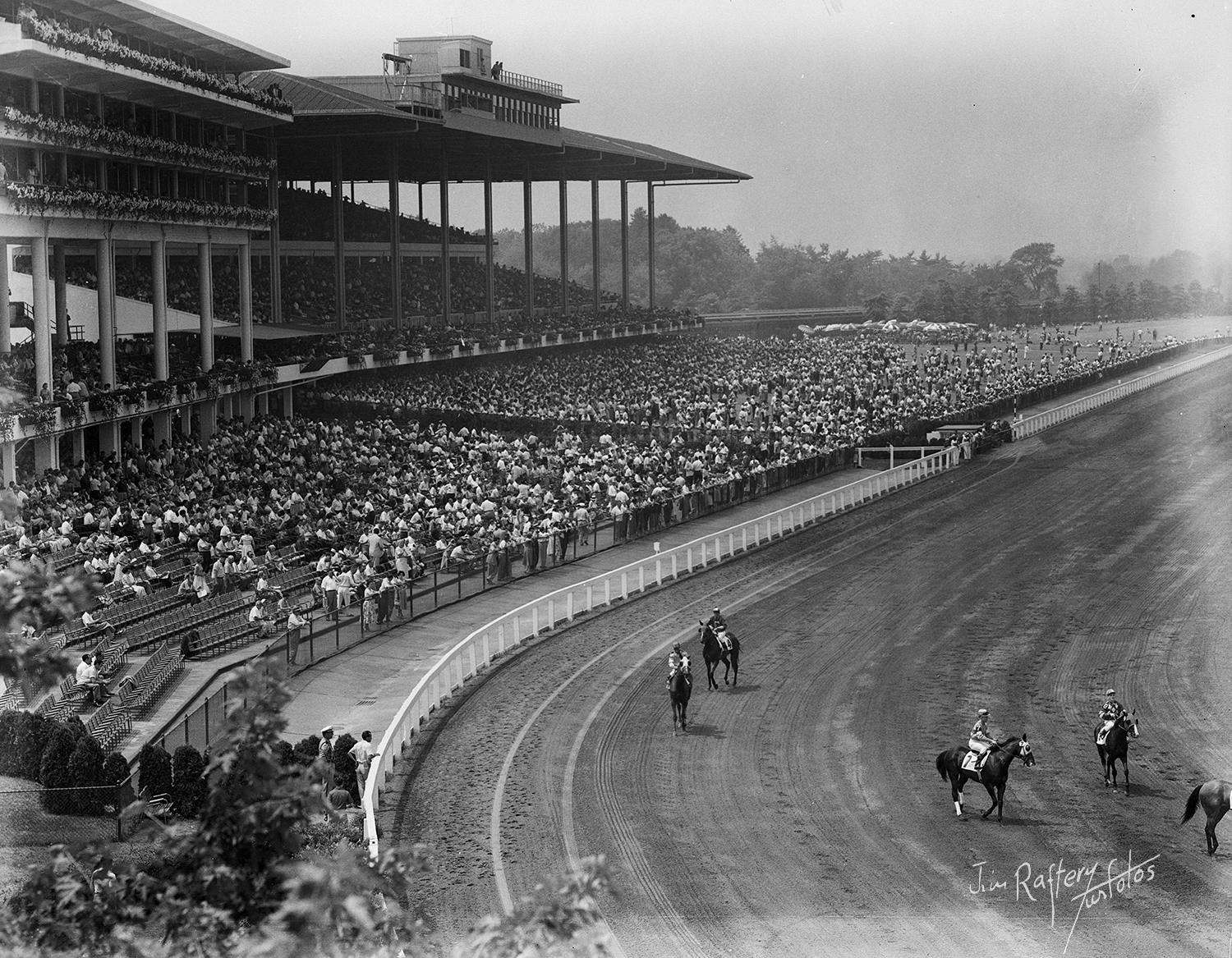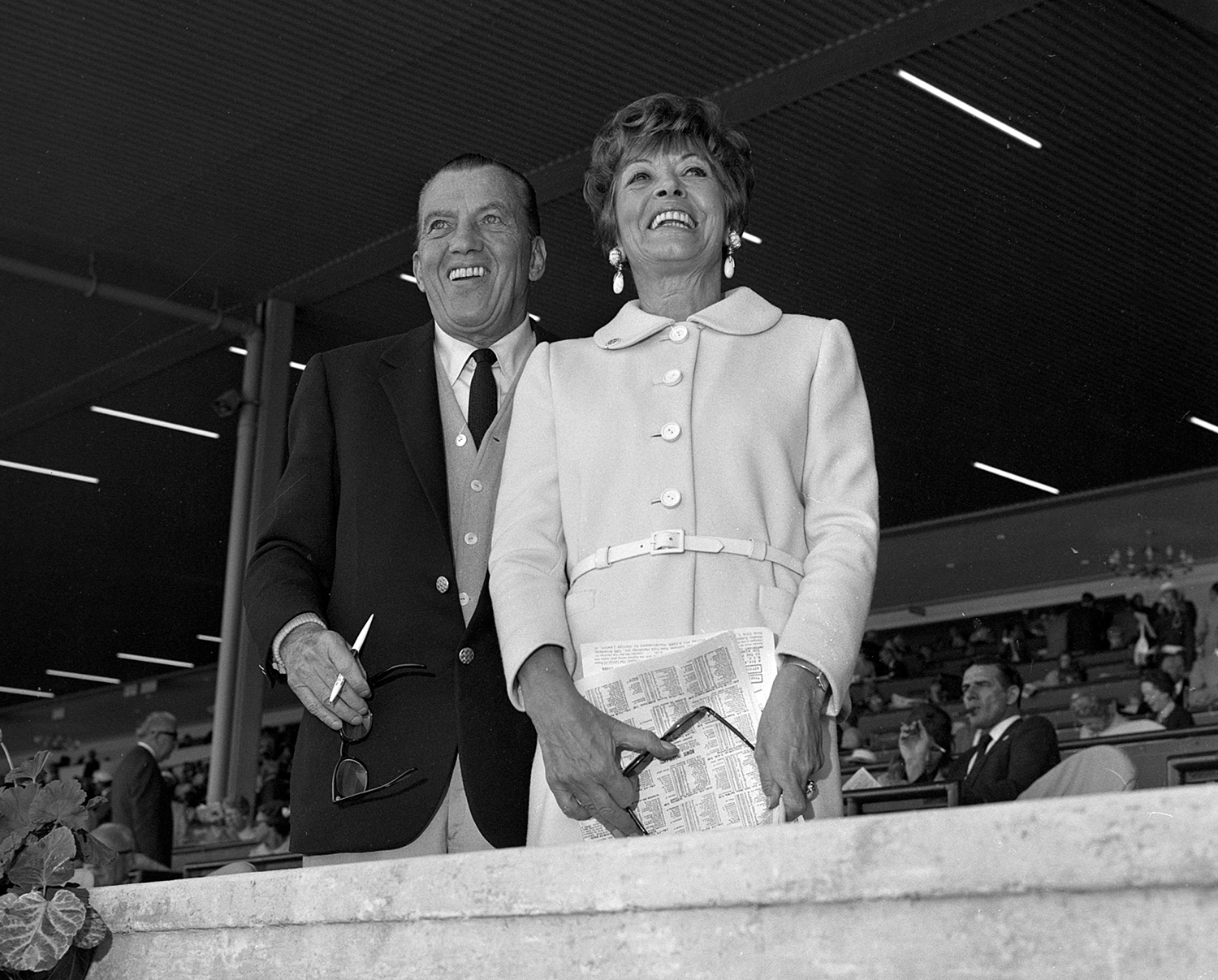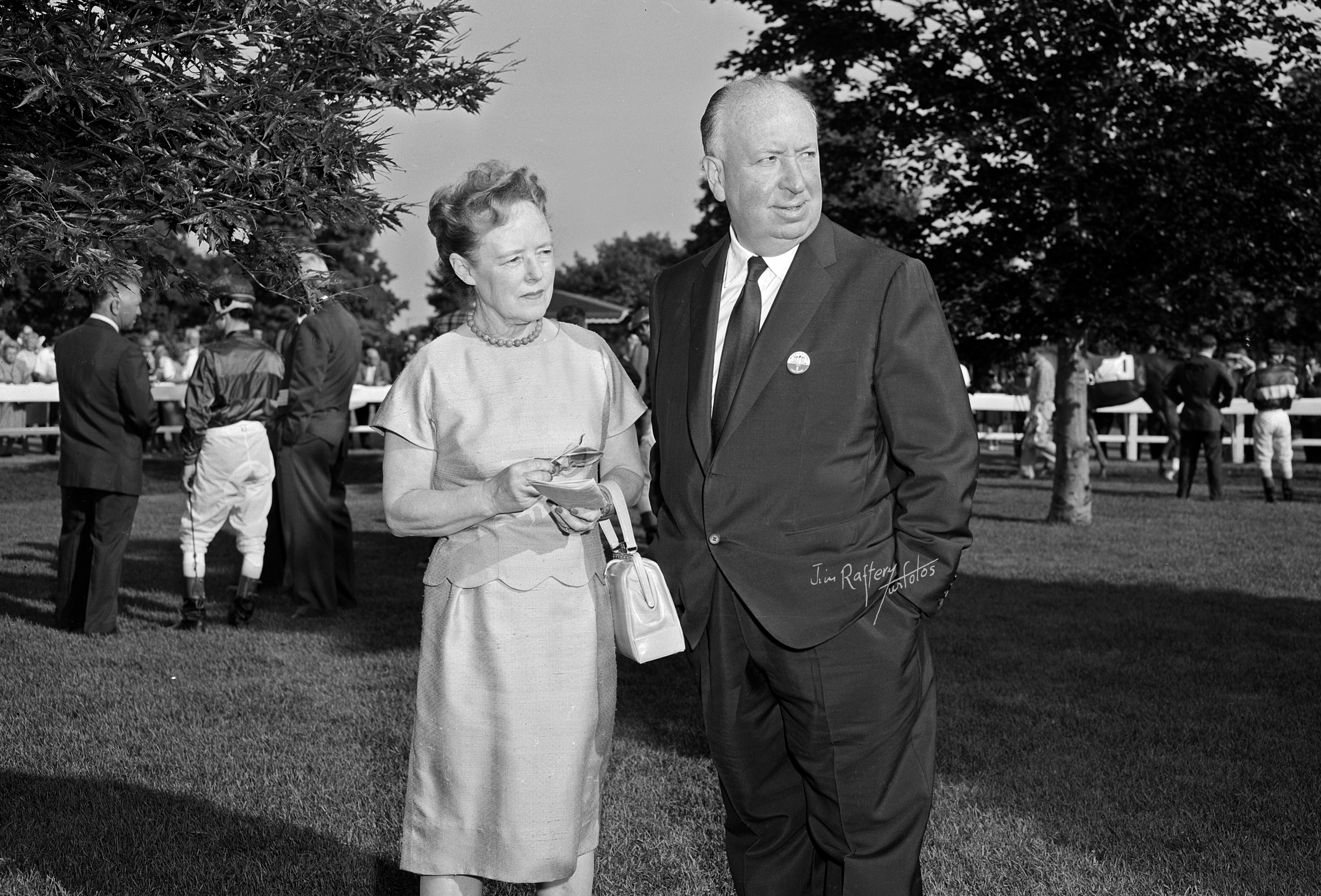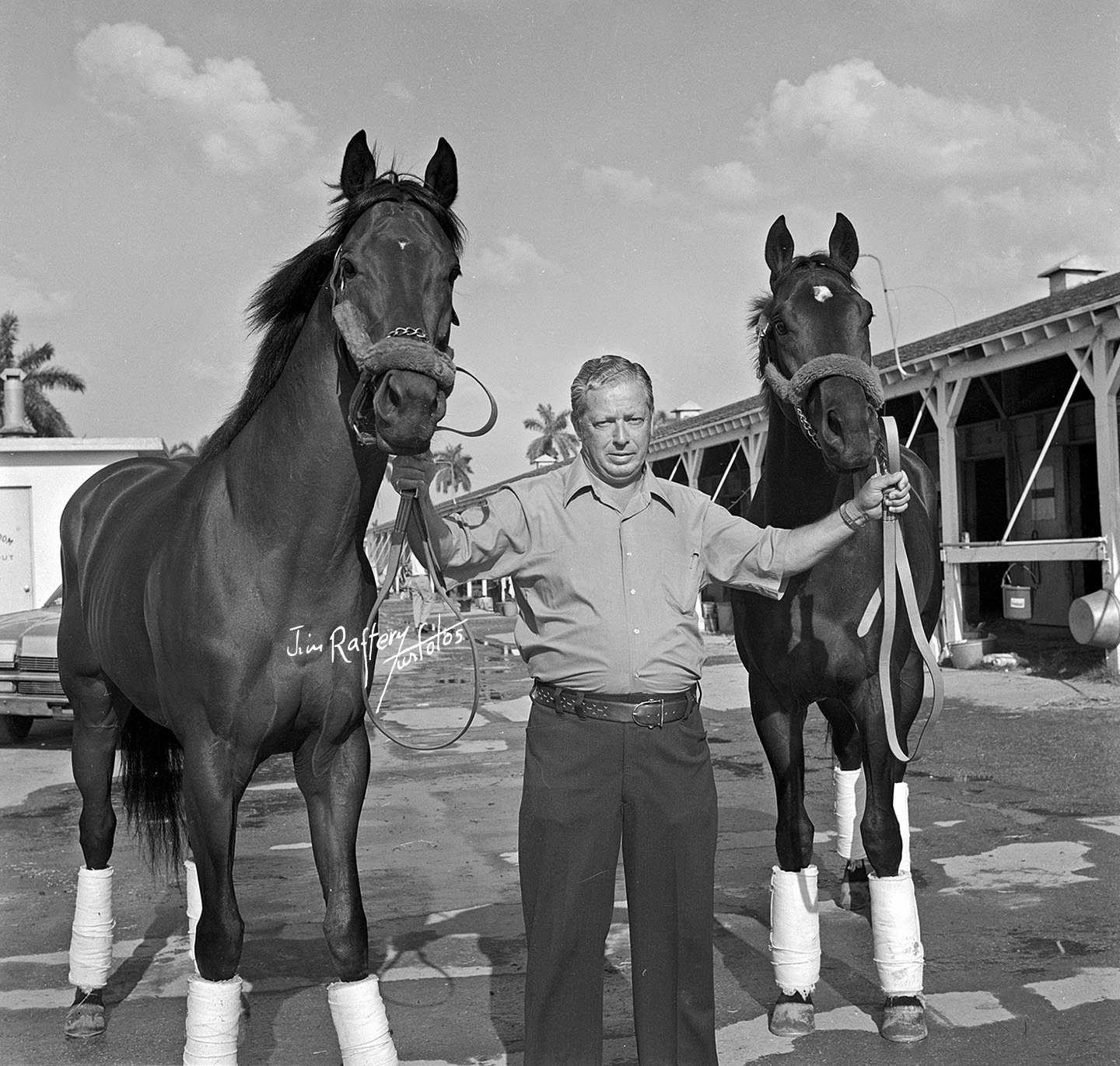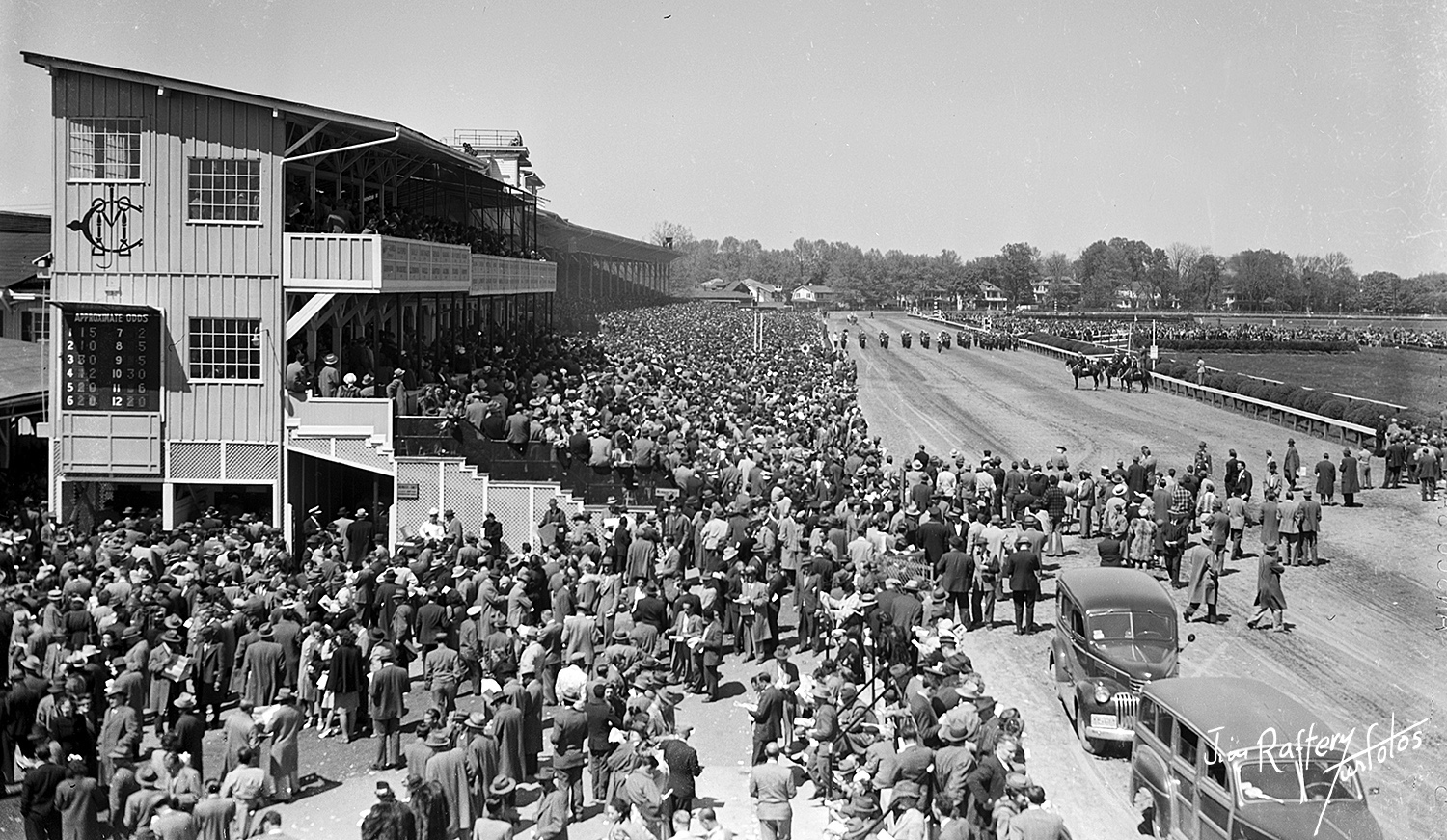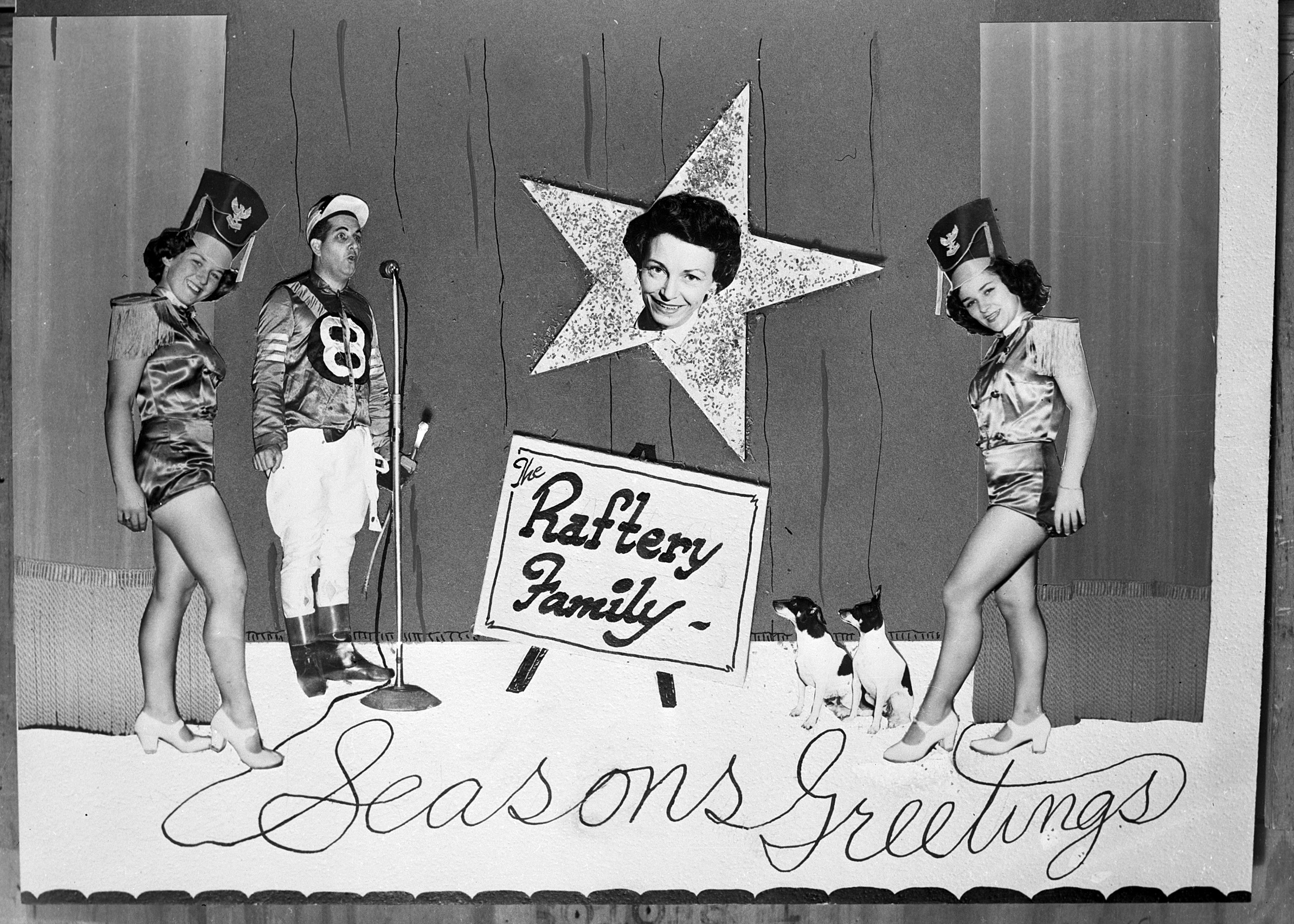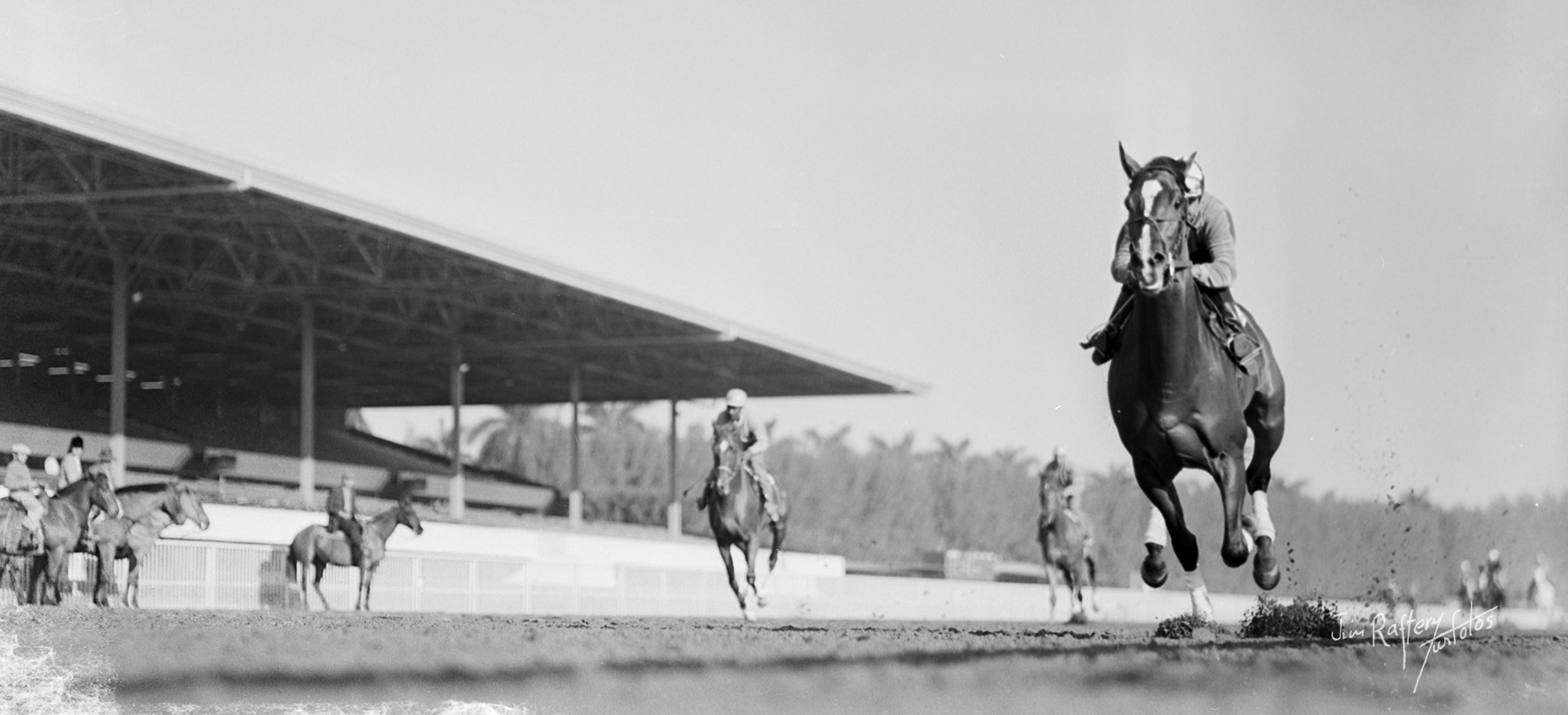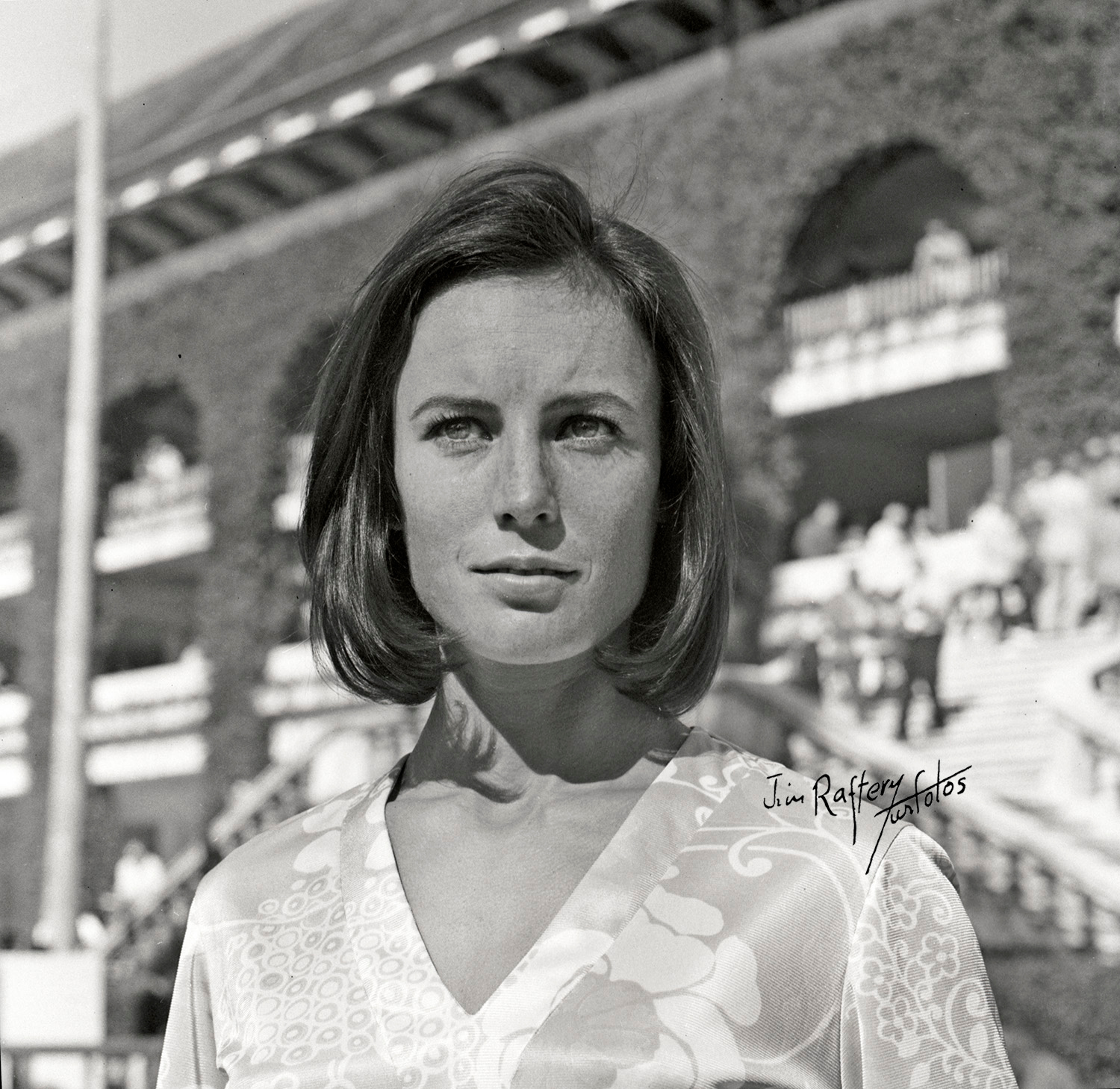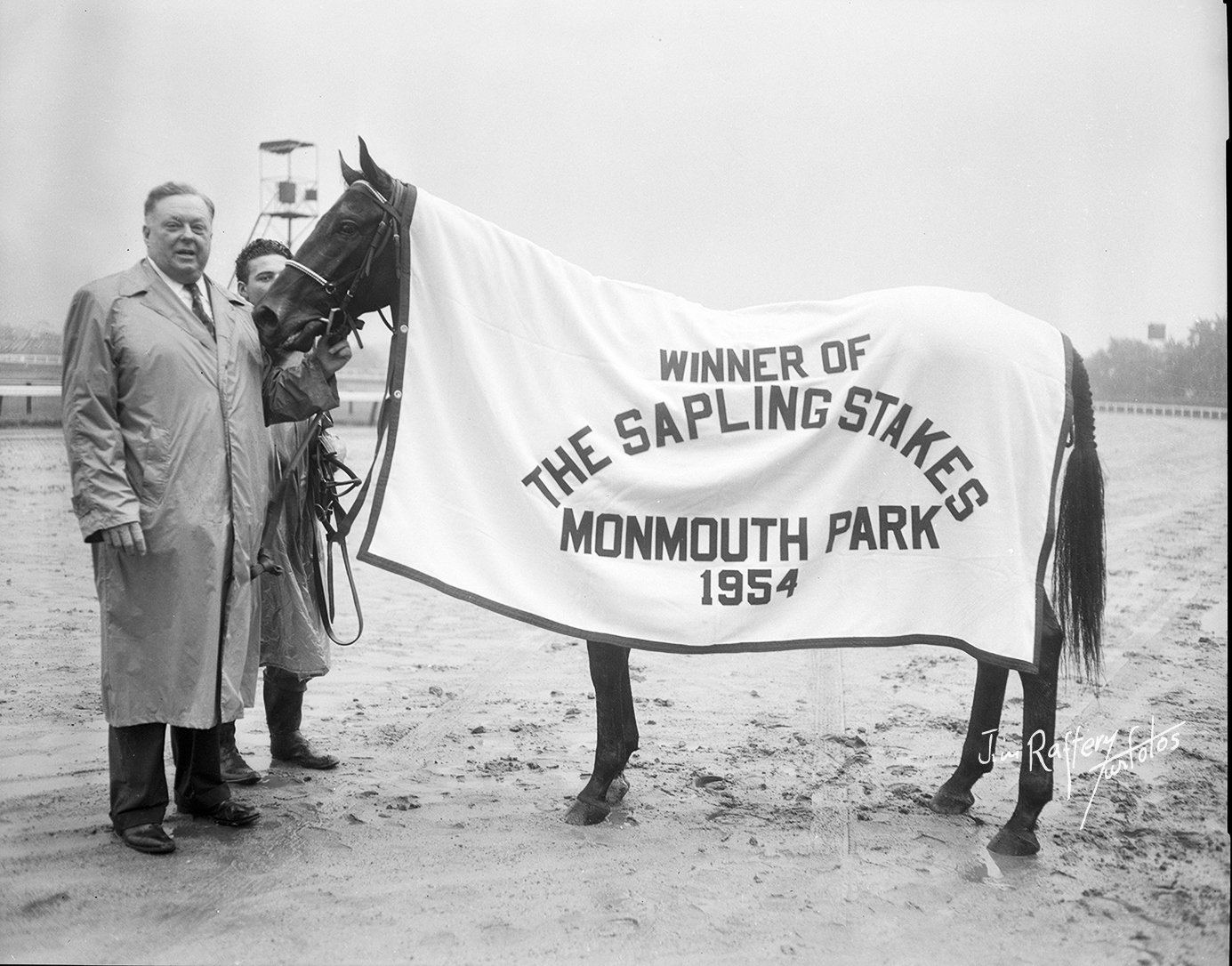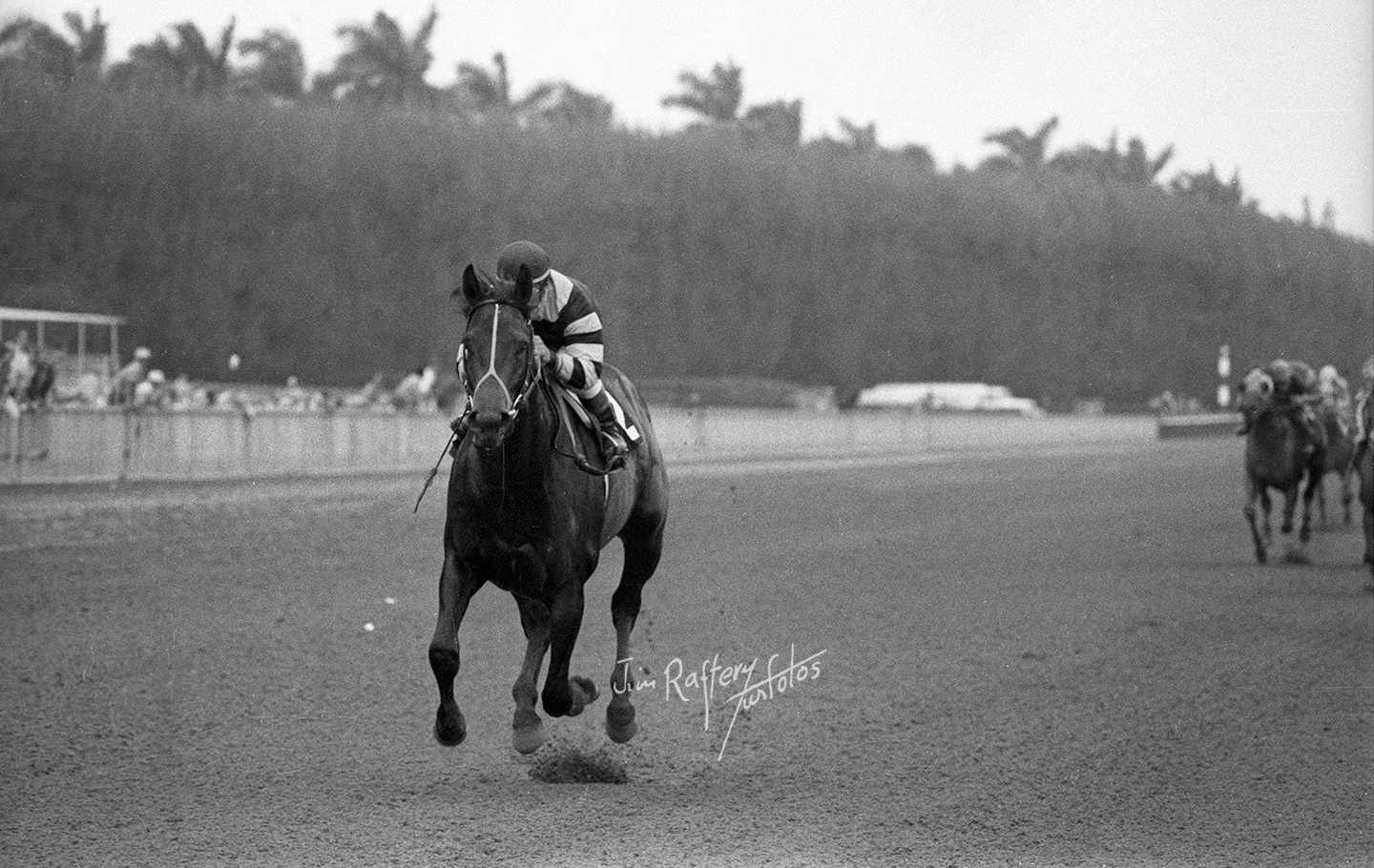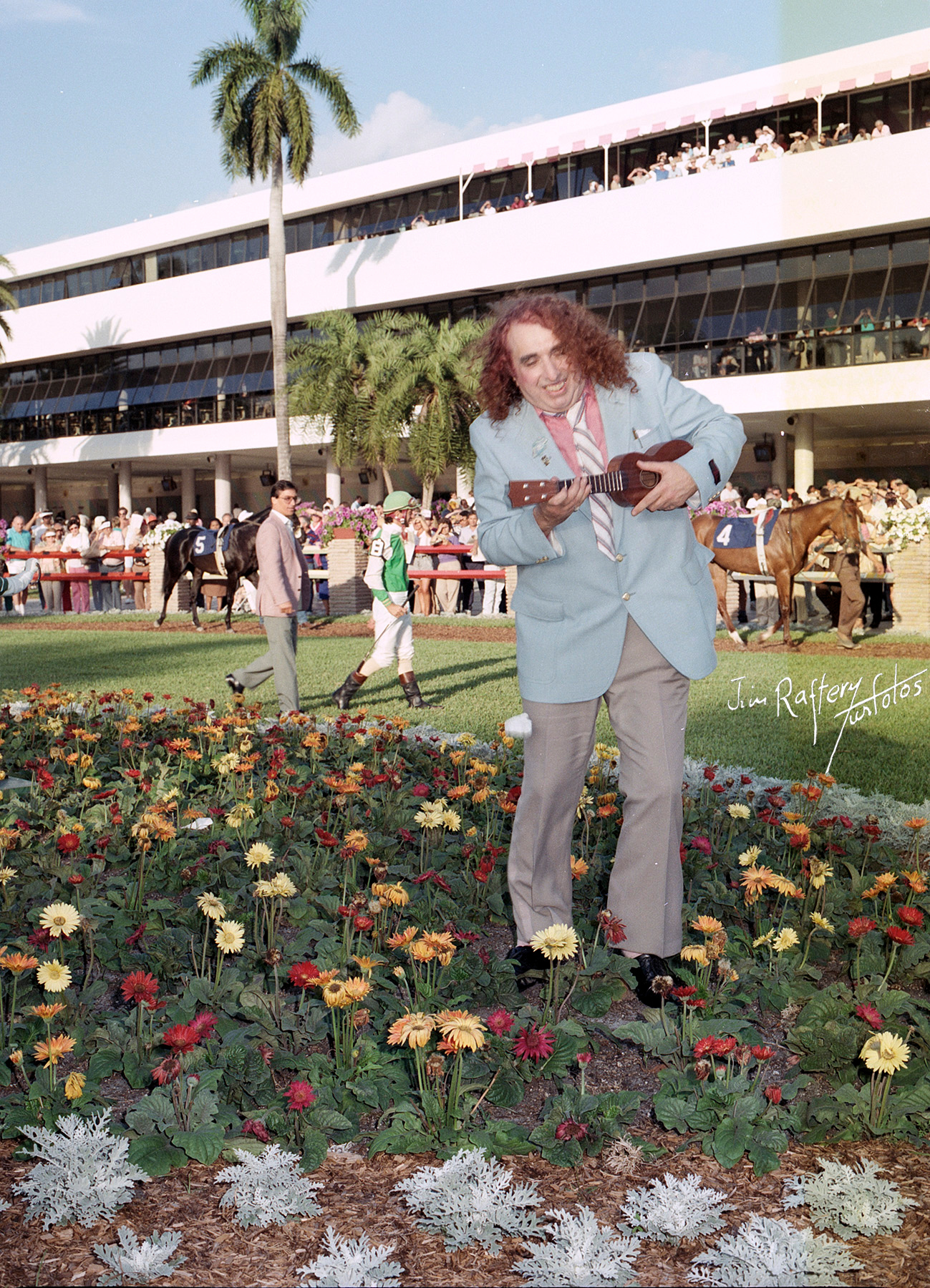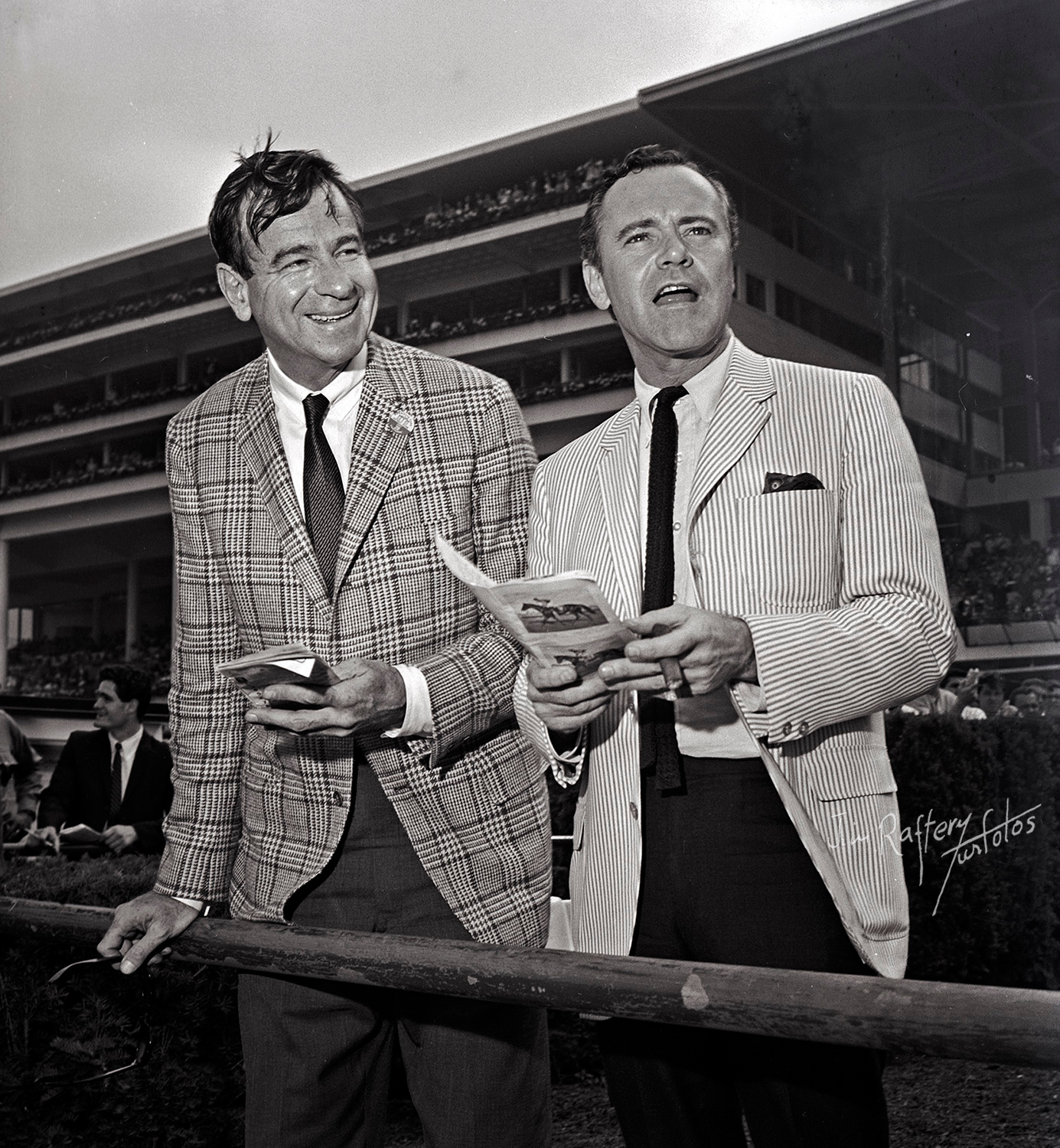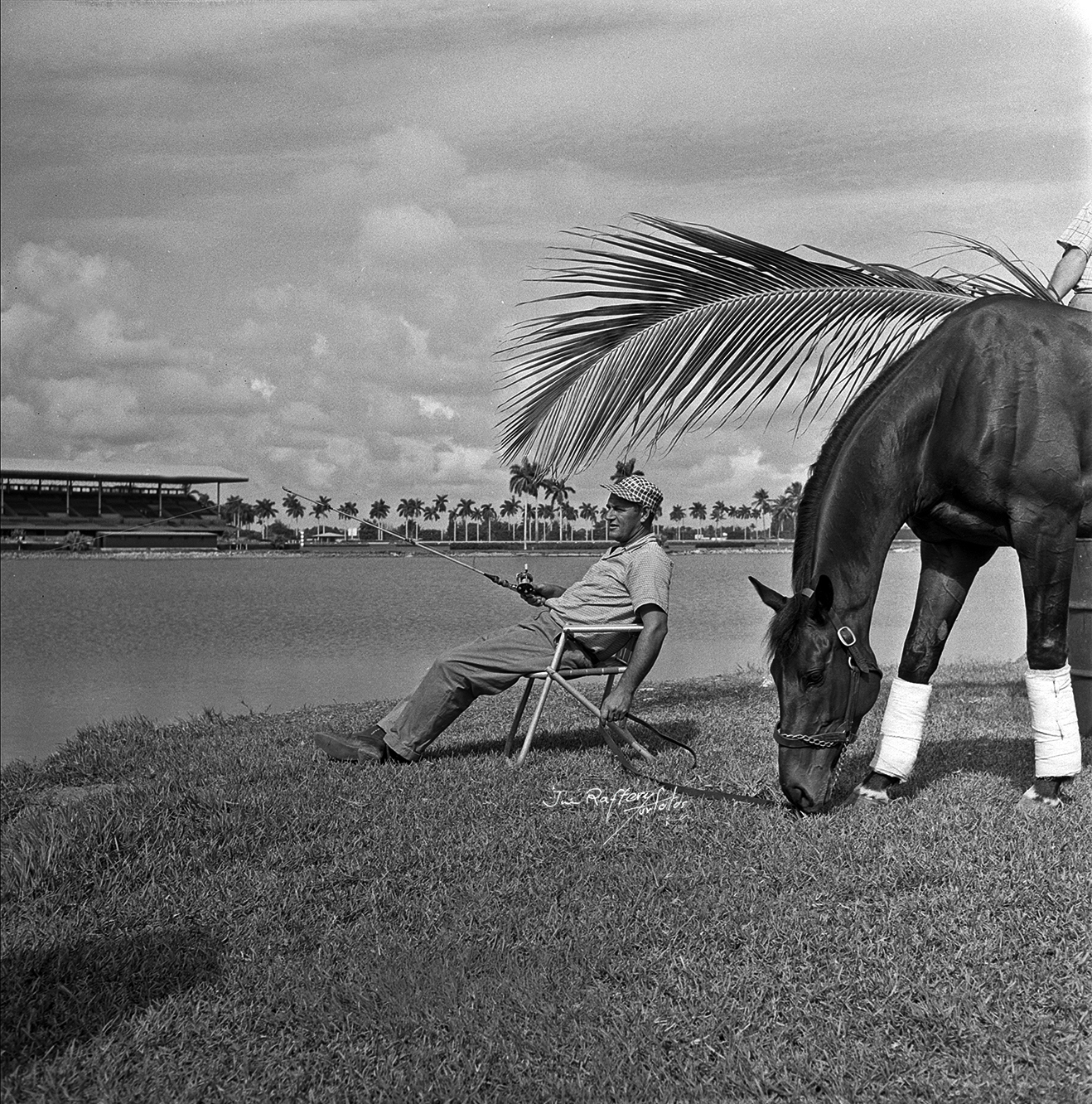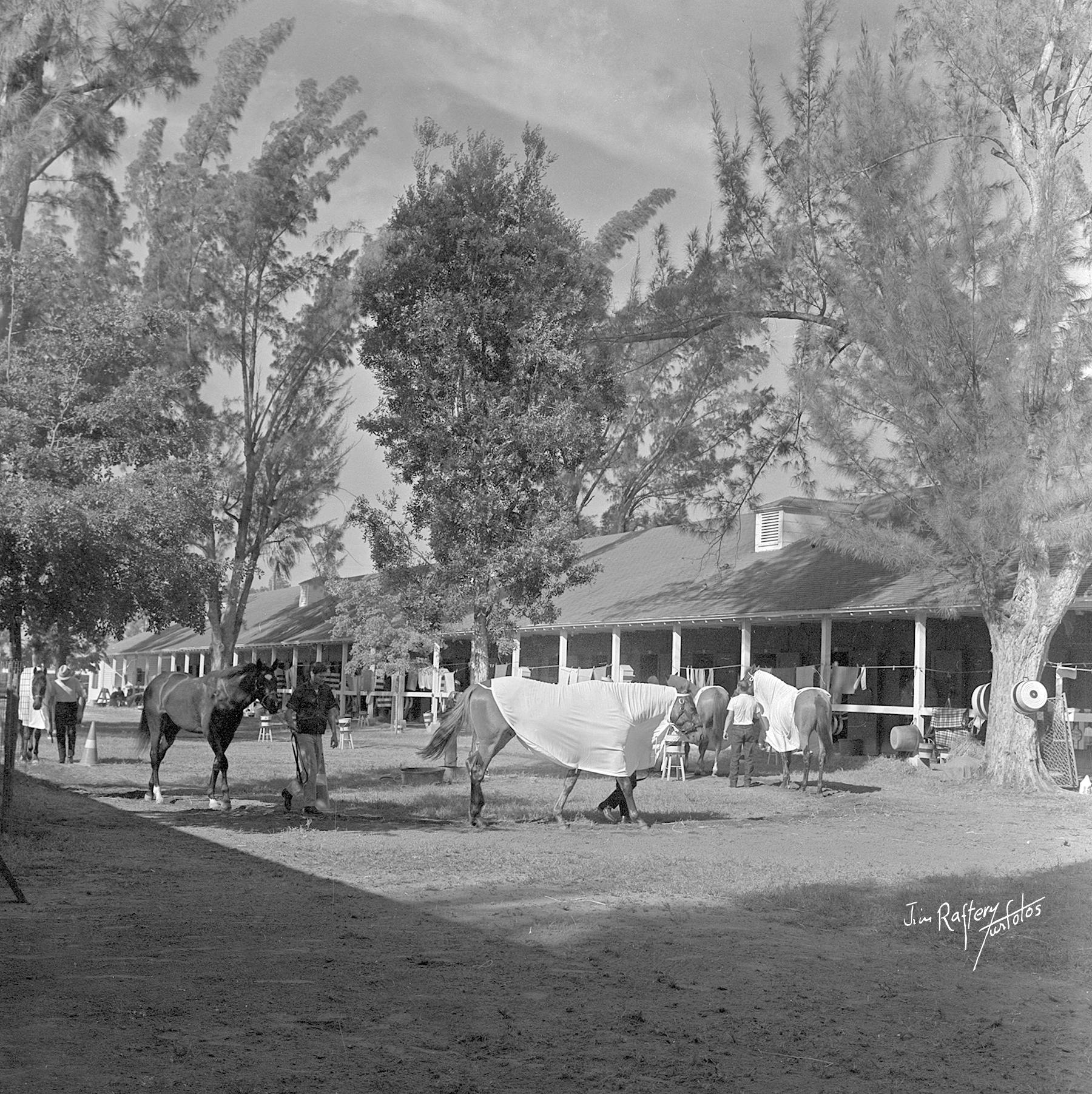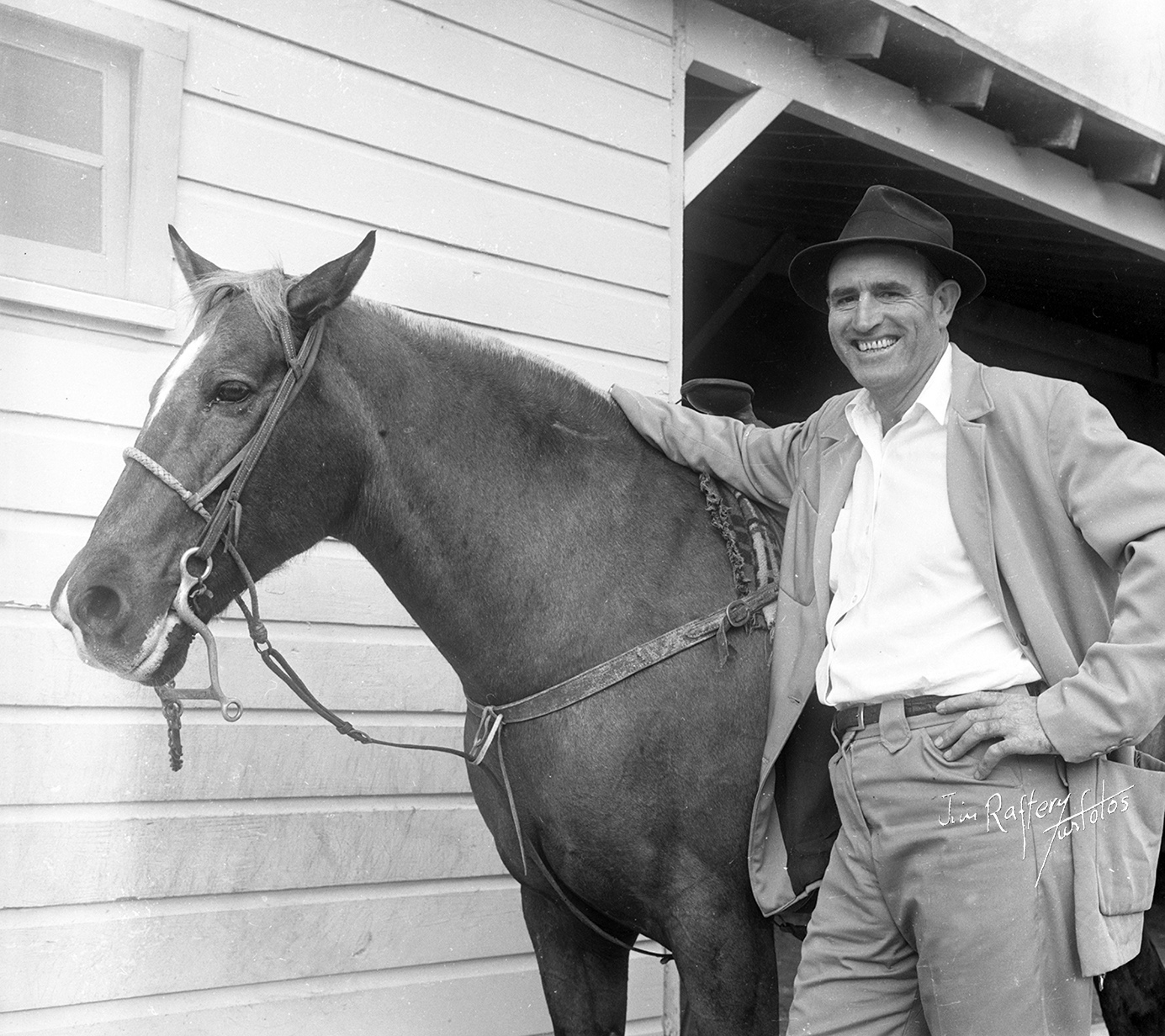Jim Raftery: A Turfotos Retrospective
(From the collection of Barbara D. Livingston)
By Stephanie Luce
Collections Manager
Jim Raftery always enjoyed being around horses. Growing up near the Commonwealth Armory in Boston, Raftery had a variety of jobs that afforded him that opportunity, including exercising polo ponies, galloping thoroughbreds, and schooling jumpers. In 1933, Raftery led the first set of horses on the track at Rockingham after racing in New England was legalized. He first won as a jockey at the age of 20 at the Marshfield Fair in Massachusetts. Such early experiences led Raftery on a path to becoming one of the most accomplished racing photographers in American history.
James Joseph Raftery was born on Jan. 29, 1915, in Everett, Massachusetts. After drifting away from an unsuccessful jockey career, he continued to work at the tracks. For a while, he had a job with the Harry M. Stevens hot dog stand, which took him to the tracks in New England, Maryland, and Florida. In 1935, Raftery was an amateur photographer with a cheap camera, but that all changed while working the hot dog stand at Tropical Park. One day a customer left an expensive camera, which Raftery brought to the lost and found. After going unclaimed, Raftery took the camera and began his career as a professional photographer. At the start, he set up a darkroom in his trailer and used any extra cash to buy better equipment.
“But I was fooling around with photography even when I was fooling around with horses. Men like C. C. Cook, Mike Sirico, and Leo Frutkoff would always see me fooling around with cameras and taking pictures of horses, and they gave me my start,” Raftery said in a 1989 interview with the Miami Herald.
When the racetracks reopened after the beginning of World War II, Raftery was working at Hialeah for photographer Leo Frutkoff when drafted into the Army. After the fighting in Europe ended, Raftery was sent to Camp Cooke near Santa Barbara, California. Many Hollywood stars came to the camp, and Bob Hope invited Raftery to his set with him. During one of his shows, Hope said, “This photographer guy kept lining us up with a string. I found out that he was a racetrack photographer and wouldn’t make a shot unless it was a photo finish.”
After being discharged, Raftery went back to Hialeah to continue his photography career. He became the official photographer for the track in 1944, a position he held until his death. He became a staple at many of the racetracks in Florida and New Jersey. His track photography business, Turfotos, thrived and had locations at Atlantic City, Garden State, Gulfstream, Hialeah, and Monmouth. He also shot for various periods of time at Laurel, Narragansett, Pimlico, Saratoga, Suffolk Downs, Tropical Park, and Waterford Park, among others.
Raftery photographed many of the greats in thoroughbred racing during his career, including Hall of Fame members such as Bold Ruler, Kelso, Nashua, Swaps, James “Sunny Jim” Fitzsimmons, John Veitch, Bill Hartack, Bill Shoemaker, and many more. Also, during his career, he photographed some of the most prominent guests to visit the racetracks, including Winston Churchill, Bob Hope, Grace Kelly, Harry Truman, and the Duke and Duchess of Windsor.
Raftery was also an entertainer and an artist. He was a member of both the Clowns of America and the International Brotherhood of Magicians. He performed at children’s hospitals, and he even wrote and produced shows for the Jockey Guild dinners. He also designed and physically created countless signs and props, as well as cards featuring poetry and humor. Raftery continued to work and be hands-on with his business until he died in 1994.
Click on any of the images to view gallery
Note: The majority of the images in this gallery are different than those that were on display in the Museum exhibition in the von Stade Gallery.
